Kathang Pinoy
Filipino in thoughts and words.

Famous Essays and Speeches by Filipinos
- My Husband's Roommate
- Where is the Patis?
- I Am A Filipino
- This I Believe
- The Philippines A Century Hence by José Rizal (Translated by Charles E. Derbyshire) Part I
- The Philippines A Century Hence by José Rizal (Translated by Charles E. Derbyshire) Part II
- The Philippines A Century Hence by José Rizal (Translated by Charles E. Derbyshire) Part III
- The Philippines A Century Hence by José Rizal (Translated by Charles E. Derbyshire) Part IV
- The Indolence of the Filipinos by José Rizal (Translated by Charles E. Derbyshire)
- The Filipino Is Worth Dying For
- 1983 Arrival Speech of Ninoy Aquino
18 Best Filipino Authors on Your Must-Read List
Are you looking for a new book to read? Check out these 18 best Filipino authors that you will absolutely love.
Many people living in the Philippines have had intense struggles through poverty, crime, and cultural challenges. Those who are skilled writers take those challenges and transform them into great works of literature. If you want to get a feel for the human struggle that the people of the Philippines experiencing, reading one of these Filipino authors could give you that insight.
Throughout the works created by famous authors from the Philippines, you will find something to fit almost any taste. From historic to modern, here are the Filipino authors you need to read.
1. Carlos Bulosan
2. jessica hagedorn, 3. jose rizal, 4. randy ribay, 5. barbara jane reyes, 6. elaine castillo, 7. f. sionil jose, 8. gina apostol, 9. joanne ramos, 10. malaka gharib, 11. melissa de la cruz, 12. mia alvar, 13. nick joaquin, 14. marcelo hilario del pilar y gatmaitan, 15. meredith talusan, 16. lysley tenorio, 17. mia hopkins, 18. tess uriza holthe.
Unlimited access to more than 5,500 nonfiction bestsellers. Free trial available.

Best Filipino Authors Ranked

Born in the Philippines in a small farming village called Mangusmana, Carlos Bulosan came from a family who struggled to make ends meet. Determined to help his family and improve his education, Bulosan emigrated to the United States at the age of 17. He started working low-paying jobs while facing racism and illness until he finally learned how to write and put a voice to the struggles of the Filipino people in the United States.
His best-known work is a semi-autobiographical book called America Is in the Heart. He also wrote The Freedom from Want. Bulosan was both a novelist and a poet, and he died in Washington in 1956. If you enjoyed our round-up of the best Filipino authors, we have many more articles on the best authors from around the globe. You might want to check out our list of the best Korean authors . Or use the search bar at the top right of the page to search for authors in a country or region you are interested in.
- Carlos Bulosan (Author)
- English (Publication Language)
- 327 Pages - 04/01/2014 (Publication Date) - University of Washington Press (Publisher)
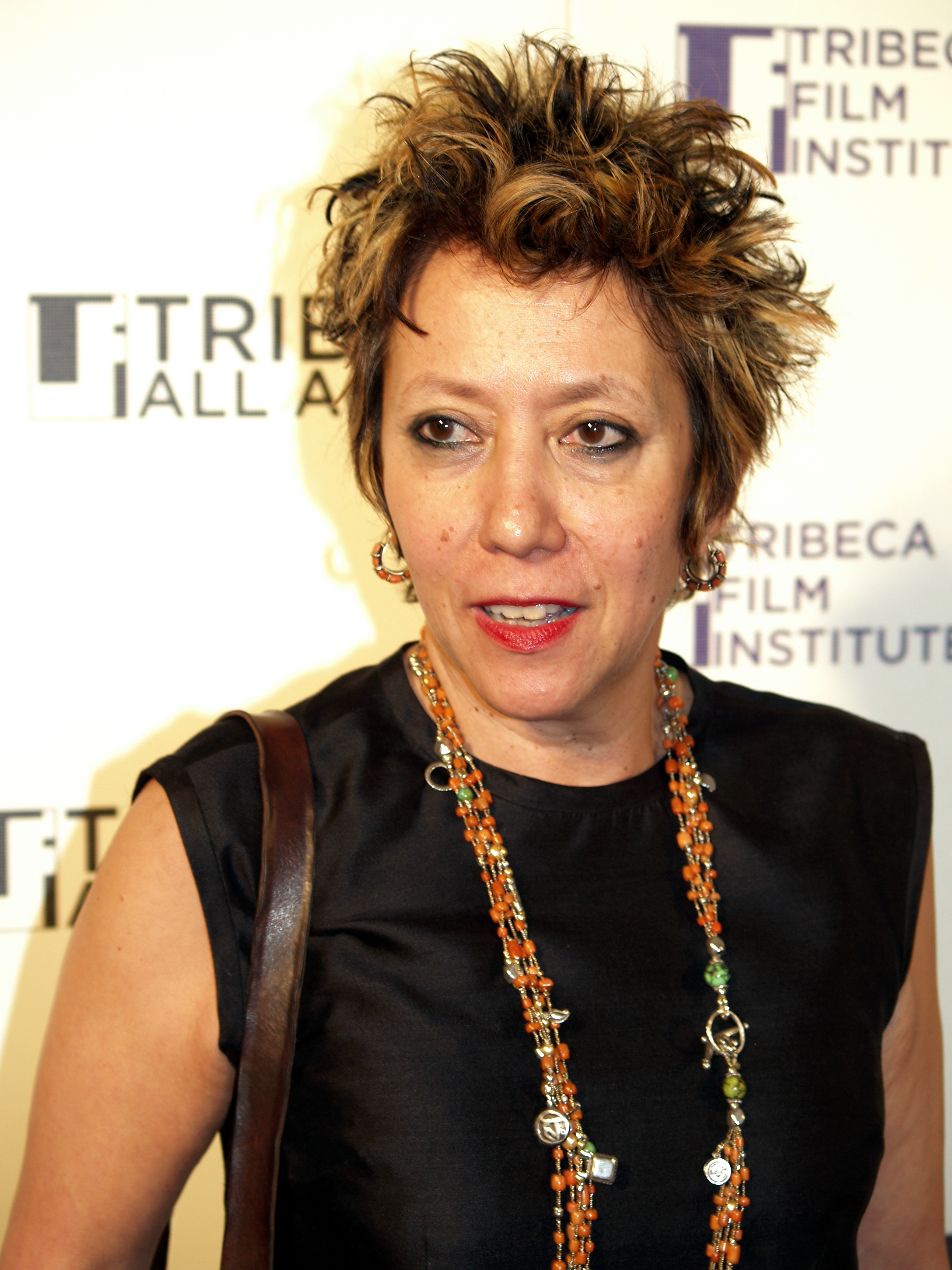
Born in 1949 in Manila, Jessica Hagedorn is a modern playwright, poet and writer. She came to the United States in 1963 to get her education at the American Conservatory Theater training program. She lives in New York City and has won an American Book Award and the Lucille Lotel Foundation fellowship.
Hagedorn has many famous works to her name, but Mango Tango, her first play, is one of her most famous. She also wrote Burning Heart: A Portrait of the Philippines and the fiction novel Dream Jungle.

Jose Rizal came from a wealthy Filipino family He was well-educated and spent much of his time as a young adult traveling Europe to discuss politics. He also studied medicine at the University of Heidelberg and pushed for Filipino reforms under the Spanish authorities. His execution at the age of 36 put a fast end to his writing career.
Rizal wrote a number of poems as a teenager. He also wrote an Operetta called On the Banks of the Pasig. His first novel, Noli Me Tangere, offended the religious leaders of his area and caused him to be deemed a troublemaker. This likely led to his later arrest for political and religious problems.
Randy Ribay is a Filipino author who writes middle-grade and young-adult fiction. Though he was born in the Philippines, he was raised in the United States and majored in English literature at the University of Colorado with a graduate degree from Harvard. In addition to writing, he teaches English in San Francisco.
Ribay’s first works were poetry, but his book Patron Saints of Nothing is an award-winning work of adult fiction. He also wrote An Infinite Number of Parallel Universes and After the Shot Drops. You might also be interested in our round-up of the best Indian authors of all time.

Poet and author Barbara Jane Reyes was born in Manila and moved to the United States as a child. She studied literature and writing in California before launching her award-winning career. She now serves as an adjunct professor at the University of San Francisco.
Reyes’s published works include full-length poetry collections and chapbooks. Gravities of Center, Easter Sunday and Poeta en San Francisco all won awards, including the James Laughlin Award of the Academy of American Poets. Letters to a Young Brown Girl is another popular collection.

Elaine Castillo is an American writer who is of Filipino descent. She studied at the University of California Berkeley and the University of London. She is passionate about equality for the people of the Philippines, and that comes out in her work.
In 2018 Castillo published her first novel America is Not the Heart. Though this is the only publication she has so far, many reviewers consider her an up-and-coming name in literature. NPR named it one of the best books of the year.
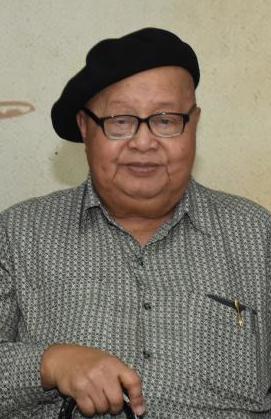
Francisco Sionil Jose was a Filipino writer who is one of the most widely read in the English language. He writes about the social struggles of his culture, and his books and short stories have a huge following. He was born in Pangasinan and attended the University of Santo Tomas before starting his journalism and writing career.
Jose has many novels in his name, including The Pretenders and The Rosales Saga. He also wrote Dusk: A Novel. He won the National Artist of the Philippines award for his literary works. He died at the age of 97 in 2022.

Gina Apostol is a modern Filipino author who was born in Manila and attended Devine World College and the University of the Philippines before coming to the United States to earn her master’s degree at Johns Hopkins University.
Apostol’s first book, Bibliolepsy, recently received republication. She also wrote The Revolution According to Raymundo Mata and Gun Dealers’ Daughter. She has non-fiction works about Filipino American History and short stories to her name as well.

Born in the Philippines, Joanne Ramos moved to Wisconsin when she was just six years old. She attended Princeton University, where she received a bachelor’s degree. She worked in investment banking and private investing before becoming a staff writer for The Economist.
In 2019 Ramos published The Farm, her first novel. It tells the tale of a facility named Golden Oaks, where women serve as surrogate mothers for wealthy clients, and the main character is Filipino, shedding some light on the plight of poor Filipino women and where current cultural ideals could lead them.

Malaka Gharib works for NPR as the digital strategist and deputy editor for their global health and development team. She started this position in 2015, and before that worked with the Malala Fund, which raises money for educational charities.
Gharib is the author of the graphic novel I Was Their American Dream: A Graphic Memoir. It talks about what she faced growing up as a Filipino Egyptian American and introduces young readers to the culture of the Philippines. She also wrote How to Raise a Human and #15Girls, both of which won Gracie Awards.
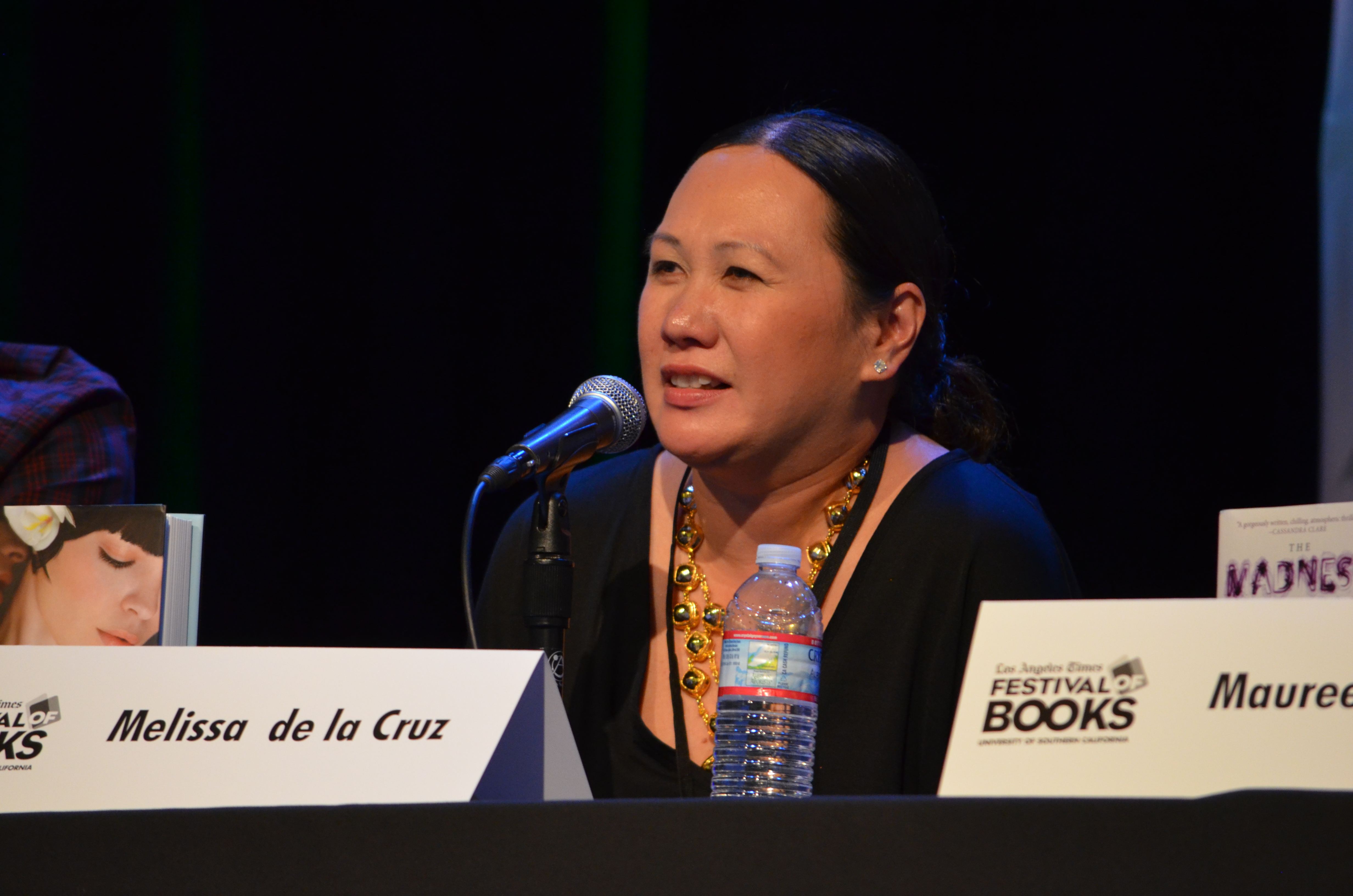
Melissa de la Cruz grew up in Manila and made the move to San Francisco as a teenager. She majored in art history at Columbia University. She lives in West Hollywood, where she continues to write novels and middle-grade fiction.
Many of de la Cruz’s works are quite famous, including several New York Times bestsellers. She published The Isle of the Lost, a prequel to the 2015 Disney movie Descendants, which spent weeks on the bestseller list. She is also famous for her Blue Bloods series, which has three million copies in print, and she has over 50 books to her name.
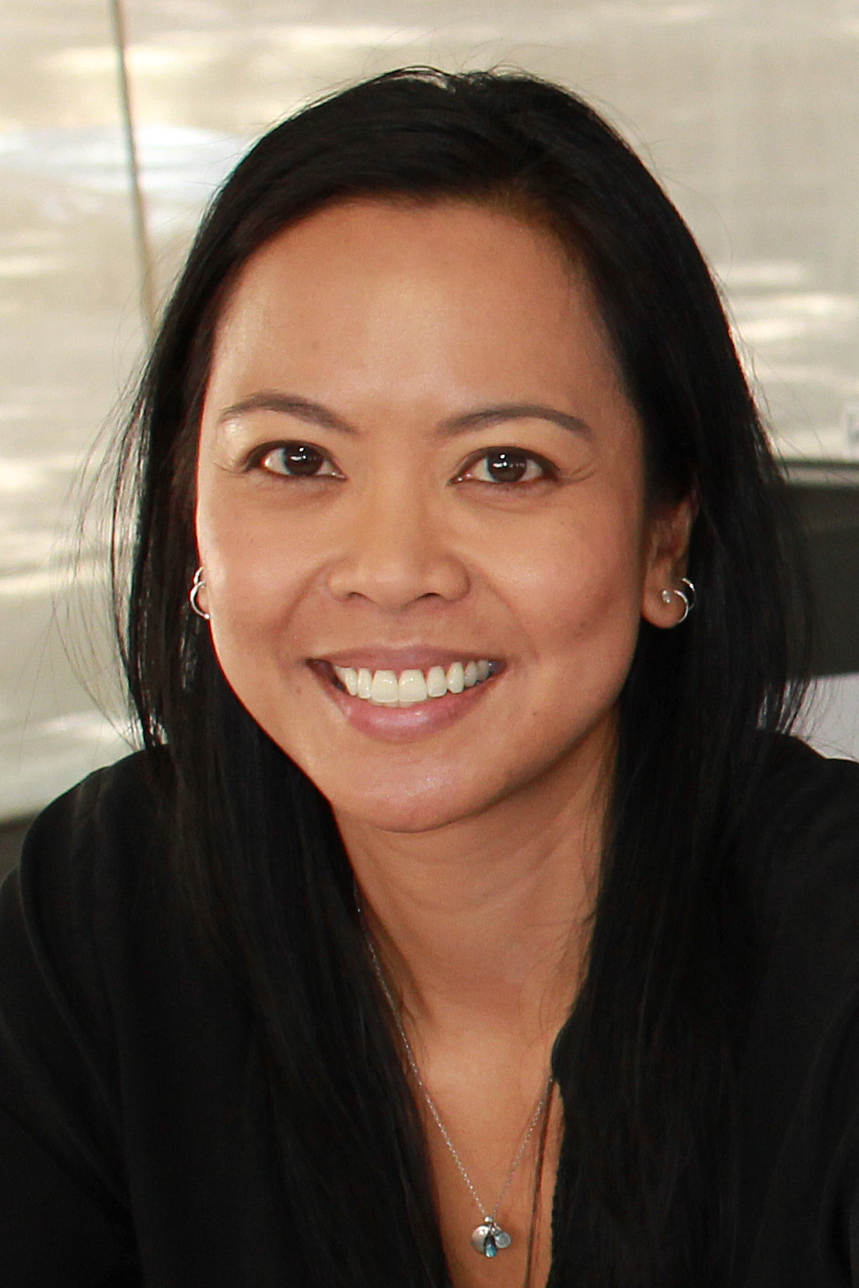
Mia Alvar was born in the Philippines and raised in the United States and Bahrain. She attended Harvard College and Columbia University and currently resides in California.
Alvar won the PEN/Robert W. Bingham Prize for Debut Fiction for her short story collection In the Country. She serves as the writer in residence at the Corporation of Yaddo. Sech also earned the Barnes & Noble Discover Great New Writers award for her work.

Best known for his short stories and novels, Nick Joaquin often wrote under the pen name Quijano de Mania. He was born in 1917 and fought in the Philippine Revolution. After winning a nationwide essay competition, he started contributing poems and stories to magazines and newspapers. He was named the National Artist in 1957.
Joaquin has several novels to his name, including The Woman Who Had Two Navels and A Portrait of the Artist as Filipino. He focused on trying to explain and showcase Filipino culture and its history.
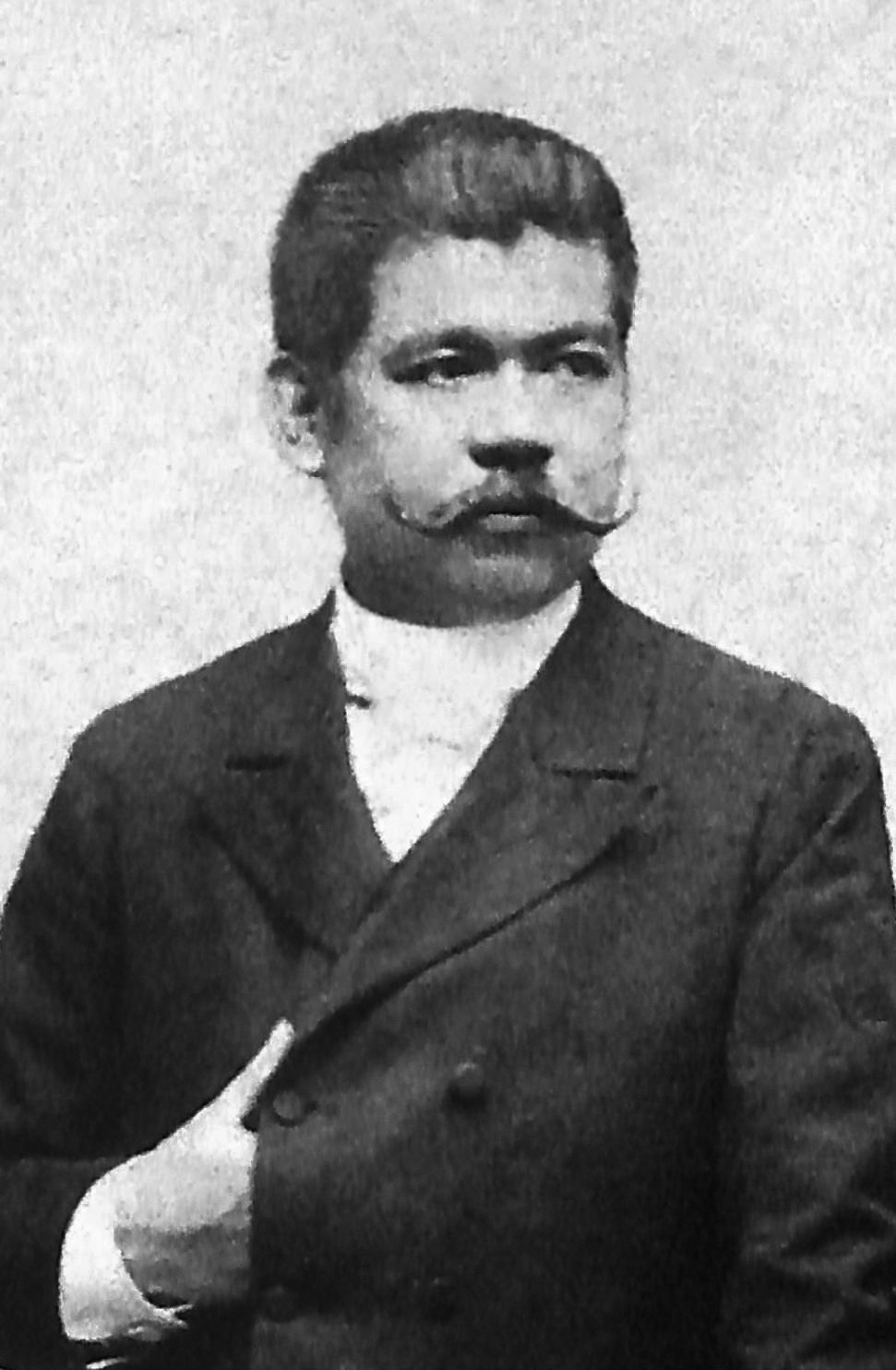
Marcelo Hilario del Pilar y Gatmaitan was often called Plaridel, his pen name. He was born in 1850 and lived in many parts of the Philippines before moving to Barcelona, Spain. Well-educated as a young man, especially in the arts, he became a well-known Filipino writer as an adult. He also attended law school and wrote on legal topics quite often.
Del Pilar was a prolific writer who published many works during his lifetime. The Greatness of God and The Triumph of the Enemies of Progress in the Philippines were some of them.
Meredith Talusan is a Filipino-American author who moved to the United States at the age of 15. He has many excellent essays, stories, and books to her name. She attended Cornell University, where she received an MFA degree, and she worked as a journalist for many well-known publications. In addition to writing, Talusan trained as a dancer.
Talusan has hit the New York Times Bestsellers list with Not That Bad: Dispatches from Rape Culture. She earned the Marsha P. Johnson Fellowship and the Poynter Fellowship at Yale. Many of her books talk about the LGTBQ+ community, and Fairest is her most recent publication.
Lysley Tenorio is a Filipino writer who wrote The Son of Good Fortune and Monstress. His work won many awards, including a National Endowment for the Arts fellowship, an Edmund White Award, and the Rome Prize. Many of his works have become plays.
Tenorio focuses much of his writing on short stories . He was born in the Philippines and moved to San Francisco to pursue his passion for the arts. He works as an associate professor at Saint Mary’s College of California.
Mia Hopkin s is a Filipino-American writer known for her romance novels. She lives in Los Angeles and continues to publish new novels today. She likes to use working-class heroes in her works.
Mia Hopkins’ novels are full of steamy stories. Trashed is one of her most recent, and it is written from the point of view of the anti-hero of her previous novels. Her books have been featured in Entertainment Weekly, USA Today, and The Washington Post. Several of her works are part of a larger series, which gives the reader the chance to get to know her characters.
Tess Uriza Holthe is a Filipino-American writer who was raised in San Francisco. She attended Golden Gate University and works as an accountant in addition to her work as a writer.
Of her books, When the Elephants Dance is her most famous, hitting several national bestseller lists. She wrote the book during her breaks at work, and she drew information from her own father’s experience in the Philippines to inspire the story. She also wrote The Five-Forty-Five to Cannes. If you enjoyed this guide on the top Filipino authors, you might be interested in our round-up of the best Ukrainian authors .
- Philippines
- The Filipino Authors You Should...
The 7 Most Legendary Filipino Authors

A country shaped by centuries of colonization by violent wars, long-lasting political upheaval, and the idyllic beauty of its islands, the Philippines offers writers plenty of material to work with. In stories drawn from this complex heritage, Filipino authors stand out for their creative, compelling voices. Culture Trip rounds up seven of the best literary talents to come from the Philippines.
Jessica hagedorn.
Best known for her 1990 novel Dogeaters , Jessica Hagedorn was born and raised in the Philippines and relocated to San Francisco in her teens. Hagedorn’s ethnic heritage is a mix of Spanish, Filipino, French, Irish, and Chinese. Dogeaters , which won the American Book Award and was a finalist for the National Book Award, shines a light on the many layers of Filipino society, especially the American influence prevalent in the entertainment industry. Hagedorn is also a poet and playwright. Her first play, Mango Tango , was produced by Joseph Papp in 1978, the same year she moved to New York, where she currently lives with her daughters.
Sionil Jose

A writer deeply concerned with social justice, F. Sionil Jose’s novels have been translated into 22 languages, and he’s one of the most widely read Filipino authors. Sionil Jose’s Rosales Saga is a five-volume work that follows the Samson family and their changing fortunes over a 100-year timeframe. Sionil Jose’s books are especially illuminating for anyone interested in provincial life in the Philippines, the revolution against Spain, and the framework of the Filipino family. His anti-elitist views have made him a somewhat unpopular author within the Philippines, but Sionil Jose’s works are among the most highly acclaimed internationally of any Filipino writer. He won the Ramon Magsaysay Award for Literature in 1980.
Nick Joaquin
Winning the National Artist award for Literature, Nick Joaquín is probably the most esteemed writer the Philippines has produced. Joaquin came from a well-educated family and was published at the early age of 17. After winning a scholarship in a nationwide essay contest, he left the Philippines to study in Hong Kong. On his return to Manila he worked for many years as a journalist, and his highly intellectual writing raised the standards of journalism in the country. Joaquin’s book, The Woman With Two Navels is essential reading in Philippine literature. However many of his short stories, such as “May Day Eve,” are extremely accessible and enjoyable for those new to the Philippines.
Merlinda Bobis

Award-winning writer Merlinda Bobis started off as a painter, but grew into a writer as “painting with words was cheaper.” Bobis’ books, short stories, and poems tell of lesser-known aspects of Filipino life, often from a strong feminist stance. One of her most well-known novels, Fish-Hair Woman , describes a romance between a young village woman and an Australian soldier in the middle of a harrowing conflict that threatens the entire province. The Australian called it a “superb novel” that “maintains its tragic intensity throughout.” Bobis has also won the international Prix Italia award for her play Rita’s Lullaby and the Steele Rudd Award for her short story “White Turtle.”
Jose Dalisay Jr.
Jose Dalisay Jr. writes a popular online column where he’s more commonly known by his pen name, Butch Dalisay. Dalisay was imprisoned during Martial Law, and his experiences from this portion of Philippine history are brought to life in his first novel, Killing Time in a Warm Place . His second novel, Soledad’s Sister tackles the plight of overseas Filipino workers, and was shortlisted for the Man Asian Literary Prize in 2007. Within the Philippines, Dalisay has won 16 Palanca Awards, the country’s highest prize for literature.
Luis Francia

Award-winning author Luis Francia has lived in New York for decades, but his experiences of growing up in the Philippines continue to shape the stories he tells the world. The poet, author, and teacher emigrated to the U.S. after finishing college, where he wrote and co-edited the Village Voice newspaper for more than 20 years. His memoir Eye of the Fish: A Personal Archipelago won a PEN Open Book Award and an Asian American Literary Award. Amitav Ghosh, author of The Glass Palace , described Francia’s memoir as “a hugely readable travelogue and an indispensable guide to a fascinating and richly varied archipelago.”

Become a Culture Tripper!
Sign up to our newsletter to save up to $1,395 on our unique trips..
See privacy policy .
The Philippines’ national hero was also a prolific writer, poet, and essayist. Jose Rizal’s two novels, Noli me Tangere and El Filibusterismo were social commentaries that sharply revealed the injustices of Spanish colonization while praising the Filipino in his most natural state. The novels, which are surprisingly wry and romantic, crystallized the growing anti-Spanish sentiment and were banned within the Philippines. The execution of Jose Rizal at 35 years old set off the Philippine Revolution and paved the way for the country’s independence. Even without these dramatic events, Rizal’s books and his final poem, “Mi Ultimo Adios,” stand on their own literary merit, and have influenced scores of Filipino writers since.

Places to Stay
The best resorts in palawan, the philippines.

The Best Hotels to Book In Tagaytay for Every Traveller

The Best Hotels to Book in the Philippines for Every Traveller

Bed & Breakfasts in the Philippines

The Best Pet-Friendly Hotels in Tagaytay, the Philippines

See & Do
Exhilarating ways to experience the great outdoors in the philippines.

What Are the Best Resorts to Book in the Philippines?

The Most Budget-Friendly Hotels in Tagaytay

The Best Hotels to Book in Palawan, the Philippines

Hip Holiday Apartments in the Philippines You'll Want to Call Home

The Best Hotels to Book in Pasay, the Philippines

Where to Stay in Tagaytay, the Philippines, for a Local Experience
Culture Trip Summer Sale
Save up to $1,395 on our unique small-group trips! Limited spots.

- Post ID: 1153276
- Sponsored? No
- View Payload
- Famous Comedians from Philippines
- Famous Lawyers from The Philippines
- Famous Journalists from The Philippines
- Famous Composers from Philippines
- Famous Economists from Philippines
- Famous Filipino Chefs & Top Chefs from the Phil...
- Famous Film Directors from The Philippines
- Famous Actors from The Philippines
- Famous Coaches from Philippines
Famous Authors from Philippines
- Famous Artists from The Philippines
- Famous People From Philippines
The Philippines boasts a rich literary heritage, with its famous authors achieving worldwide recognition for their captivating storytelling and distinctive writing styles. These talented individuals have contributed significantly to Philippine literature, enchanting generations of readers. With a unique blend of cultural influences, these famous Filipino writers have managed to produce works that resonate deeply, inspiring countless others in their pursuit of literary excellence.
Among the vast array of Filipino names in the world of literature, many have stood apart as exceptional contributors. These great writers practice a diverse array of writing styles and genres. From poetry and novels to essays and biographies, these best Filipino authors have demonstrated their expertise, earning a revered place in the literary world. Their profound insights and compelling narratives provide a fascinating glimpse into the vibrant culture and history of the Philippines, making them vital voices in the global literary landscape.
Several prominent Filipino writers include Nick Joaquín, Fidel V. Ramos, and Luis Eduardo Aute. Joaquín is celebrated for his vivid portrayal of Philippine society and history, earning numerous accolades, including the country's National Artist for Literature Award. Fidel V. Ramos, a former president of the Philippines, is also an accomplished author, focusing on governance, leadership, and national development. Luis Eduardo Aute, a multifaceted artist, is known for his prowess not only in literature but also in painting, music, and filmmaking. These titans have undeniably shaped the course of Philippine literature, continually pushing the boundaries and expanding the horizons of artistic expression.
The remarkable achievements and creative genius of these famous authors from the Philippines are a testament to the depth and diversity of Filipino literary heritage. They have undoubtedly influenced generations of writers, both from their home country and abroad. It is through their collective literary prowess that the Philippines continues to be recognized as a fertile ground for exceptional talent and a vital voice in the realm of global literature.

Nick Joaquín
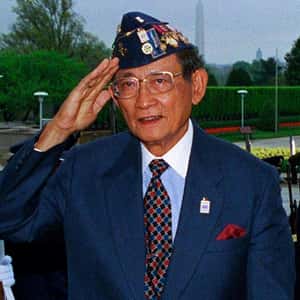
Fidel V. Ramos
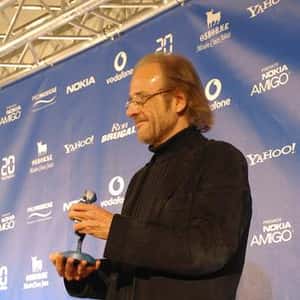
Luis Eduardo Aute
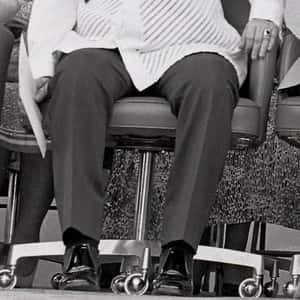
Carlos P. Romulo
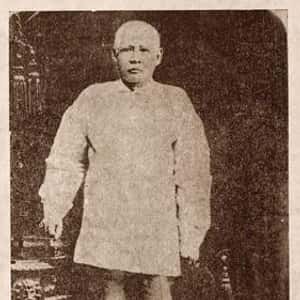
Ferdinand Marcos
- Dig Deeper... Celebrities with Lupus List
- # 9 of 26 on Famous People With Lupus
- # 16 of 64 on 50+ Celebrities Born on September 11
- How-To Guides
- Philippine Guides, Trivia, and Laws
- Filipino History, Culture, and Traditions
- About Homebased Pinoy
A Beginner’s Guide to Classic Filipino Literature
- by Amiel Pineda
- January 17, 2024 January 17, 2024

So, you’ve always been curious about classic Filipino literature, but haven’t known where to start? Well, you’re in for a treat.
The world of Filipino literary tradition is a treasure trove of diverse voices, compelling narratives, and profound insights into the Filipino experience.
Whether you’re drawn to poetry that evokes the beauty of the Philippine landscape, fiction that delves into the complexities of Filipino identity, or powerful dramas that reflect the struggles of the Filipino people, classic Filipino literature has something for everyone.
But where should you begin? Well, let’s uncover the influential authors, key themes, and historical context that will guide you through this captivating literary journey.
Key Takeaways
- Classic Filipino literature encompasses a rich and varied literary tradition that includes oral epics, folktales, and chants, as well as poetry, prose, and drama.
- Notable Filipino authors such as Joi Barrios, Jose Rizal, Francisco Balagtas, and Nick Joaquin have made significant contributions to Filipino literature, exploring themes of colonialism, identity, and nation-building.
- The impact of these influential authors can be seen in their advocacy for social reform, pioneering of Tagalog poetry, and exploration of Filipino history and society.
- Key themes in classic Filipino literature include the enduring legacy of colonialism, a fierce spirit of nationalism, the interweaving of folklore, myths, and legends, and motifs of love, sacrifice, and heroism.
Overview of Filipino Literary Tradition
The literary tradition in the Philippines is a vibrant tapestry of diverse genres and storytelling forms that vividly capture the cultural essence and societal values of the Filipino people.
From the pre-colonial period, literature in the Philippines has been rich and varied, encompassing oral epics, folktales, and chants that reflected indigenous beliefs, values, and traditions.
As the Philippines transitioned to a more modern society, its literature evolved to include poetry, prose, and drama, all serving as mirrors of the Filipino society.
In the 21st century, new literary genres such as cyberpunk and dystopian fiction have emerged, providing platforms for marginalized voices and challenging traditional storytelling conventions.
This dynamic literary landscape reflects the ever-changing cultural and societal dynamics of the Philippines, making Philippine literature a fascinating and essential part of the country’s identity.
Influential Classic Filipino Authors
You’re about to explore the influential classic Filipino authors who’ve made a significant impact on literature.
These notable literary figures haven’t only shaped the Filipino literary tradition but have also contributed to the understanding and appreciation of literature in the Philippines.
Get ready to discover the works and achievements of these influential authors and their lasting influence on classic Filipino literature.
Notable Literary Figures
Influential Classic Filipino Authors have left an indelible mark on the literary landscape, shaping the cultural and historical narratives with their compelling works. Notable literary figures like Joi Barrios, with a Ph.D. in Filipino Literature, have won fourteen national literary awards, leaving a significant impact on the literary scene. Barrios was also chosen as one of the 100 women Weavers of History for the Philippine Centennial Celebration .
Their book, ‘Tagalog for Beginners’, provides an accessible guide to the Tagalog language, offering historical context, everyday usage, and practical exercises for self-learning or community tie-ins. Additionally, ‘Tagalog Stories for Language Learners’ presents folktales and stories in Filipino and English with audio, cultural notes, and comprehension questions, catering to learners at different proficiency levels.
The works of these notable authors, including Jose Rizal, reflect the rich cultural diversity and historical experiences of the region, focusing on themes of colonialism, identity, and nation-building.
Impact on Literature
In shaping the cultural and historical narratives with their compelling works, notable literary figures like Joi Barrios, with a Ph.D. in Filipino Literature, have profoundly influenced the classic Filipino literature landscape. Their impact on literature is undeniable, with authors such as Jose Rizal, Francisco Balagtas, and Nick Joaquin leaving an indelible mark on Filipino literary heritage. Their contributions have significantly shaped the themes, styles, and cultural representation present in classic Filipino literature. To fully grasp their influence, consider the table below:
| Influential Author | Notable Contribution | Enduring Legacy |
|---|---|---|
| Jose Rizal | Advocacy for social reform | Reflection of Filipino identity |
| Francisco Balagtas | Pioneering Tagalog poetry | Influence on Filipino poetry |
| Nick Joaquin | Exploration of Filipino history | Literary representation of society |
These authors have inspired generations of writers, enriching the preservation and evolution of classic Filipino literature.
Key Themes in Classic Filipino Literature
Let’s explore the rich tapestry of themes that permeate classic Filipino literature.
From the enduring legacy of colonialism to the fierce spirit of nationalism, these works delve into the complexities of Filipino society and identity.
The interweaving of folklore, myths, and legends with the struggle against social inequalities and the recurring motifs of love, sacrifice, and heroism adds depth and resonance to the Filipino literary landscape.
Literary Influences
Literary themes in classic Filipino literature are deeply rooted in the cultural and historical influences that have shaped the Filipino identity and society.
- Colonial History : The Spanish and American colonial periods significantly impacted Filipino literature, leading to the fusion of indigenous and foreign influences.
- *Spanish Influence*: The introduction of Christianity and the spread of Spanish language greatly influenced literary forms and themes.
- *American Influence*: The imposition of English as the medium of instruction resulted in the emergence of a new literary tradition.
- Indigenous Traditions : Pre-colonial literature was predominantly oral, reflecting indigenous beliefs, values, and traditions, which continue to influence contemporary Filipino literary works today.
- Cultural Diversity : The rich cultural tapestry of the Philippines, with its diverse languages, customs, and traditions, provides a rich source of inspiration for Filipino writers, contributing to the multifaceted nature of classic Filipino literature.
Cultural Identity
Exploring the rich cultural tapestry of the Philippines, classic Filipino literature delves into key themes that reflect the diverse languages, customs, and traditions, shaping the cultural identity of the Filipino people.
Literature serves as a mirror of society, capturing the values and beliefs that define Filipino identity. It showcases the resilience and adaptability of Filipinos in the face of colonialism, oppression, and adversity. Through storytelling, Filipino literature embodies the spirit of nation-building and the quest for self-determination.
The emergence of contemporary literary genres amplifies the voices of marginalized communities, enriching the cultural mosaic of Filipino literature.
From the oral traditions of pre-colonial times to the evolution of English-language literature, Filipino literary works continue to celebrate the heritage and diversity that form the very essence of Filipino cultural identity.
Impact of Spanish Colonialism on Filipino Literature
Influenced by Spanish colonization, Filipino literature underwent significant transformations in themes, language, and literary forms, shaping its evolution and cultural identity.
- Language and Literary Forms:
- The Spanish language became prominent in Philippine literature, resulting in works blending Spanish and Filipino elements.
- Spanish literary forms such as corridos, komedya, and awit significantly impacted Filipino literary traditions.
- Imposition of Spanish language and education influenced the evolution of Filipino literature and writing styles.
This influence of Spanish colonialism created a rich tapestry of literature in the Philippines, reflecting the complexities of cultural exchange, colonialism, and resistance. It’s through this interplay of influences that Filipino literature gained a unique and diverse character, resonating with the experiences and history of its people.
Notable Works in Classic Filipino Literature
When exploring notable works in classic Filipino literature, you’ll encounter influential literary figures, themes, and motifs that have shaped the country’s literary landscape.
These works are deeply rooted in the historical and cultural context of the Philippines, offering insights into the societal and political dynamics that have influenced the development of Filipino literature.
From the impact of Spanish colonialism to the rich tapestry of indigenous storytelling, classic Filipino literature showcases a diverse array of voices and perspectives.
Influential Literary Figures
Notable works in classic Filipino literature are timeless masterpieces that have greatly impacted the literary landscape, showcasing the diverse and rich cultural heritage of the Philippines.
When delving into influential literary figures, consider the expertise of Joi Barrios, a Ph.D. holder in Filipino Literature, and a recognized lecturer at the University of California, Berkeley and Associate Professor at the University of the Philippines Diliman.
Additionally, explore the insightful ‘Tagalog for Beginners’, covering the history and practical usage of Tagalog, and ‘Tagalog Stories for Language Learners’, which provides audio recordings, stories in both languages, and comprehension questions for language learners.
Furthermore, Southeast Asian literature reflects the rich cultural diversity and historical experiences of Southeast Asian societies, often revolving around colonialism, identity, and nation-building.
This exploration not only enriches your literary knowledge but also connects you to the profound cultural narratives of the Philippines.
Themes and Motifs
Classic Filipino literature is characterized by recurring themes and motifs that reflect the cultural heritage and societal values of the Philippines. These themes and motifs are deeply rooted in the Filipino experience, encompassing concepts of family, community, resilience, and the struggle for identity and autonomy. Below is a table that highlights some of the prominent themes and motifs found in classic Filipino literature:
| Themes | Motifs |
|---|---|
| Family | Barangay |
| Resilience | Bayanihan |
| Identity | Aswang |
| Love | Sarimanok |
These themes and motifs resonate with the Filipino audience, evoking a sense of belonging and cultural pride. They serve as a testament to the enduring legacy of classic Filipino literature, capturing the essence of the Filipino spirit and collective consciousness.
Historical and Cultural Context
The rich tapestry of themes and motifs in classic Filipino literature is intricately woven into the historical and cultural context, providing a compelling backdrop for understanding the notable works that have emerged from this vibrant literary tradition. To delve into this context, consider the following:
- Colonial Influence : Explore how Spanish and American colonial periods have left an indelible mark on Filipino literature, shaping its themes and forms.
- *Works to Explore*: Look into Jose Rizal’s ‘Noli Me Tangere’ and ‘El Filibusterismo’ for insight into the colonial experience.
- Indigenous Traditions : Discover how indigenous beliefs, folklore, and traditions have influenced classic Filipino literature, offering a unique perspective on the cultural heritage of the Philippines.
- *Notable Authors*: Dive into the works of Amado V. Hernandez and his portrayal of indigenous culture in ‘Mga Ibong Mandaragit.’
- Socio-Political Context : Examine how historical events and societal structures have informed the content and style of classic Filipino literature, reflecting the country’s struggles and triumphs.
- *Relevant Works*: Consider Nick Joaquin’s ‘The Woman Who Had Two Navels’ as a lens into the socio-political landscape of the Philippines.
Folklore and Mythology in Filipino Literature
Immerse yourself in the rich tapestry of Filipino literature by delving into the captivating realm of folklore and mythology. Here, indigenous beliefs and timeless tales intertwine to offer profound insights into the Filipino cultural heritage.
These literary works, including epics, folktales, and myths, convey indigenous beliefs, values, and traditions. They provide deep insights into Filipino culture, integrating folklore and mythology to convey moral lessons, explain natural phenomena, and preserve cultural heritage.
Filipino literature is rich with stories of legendary heroes, mythical creatures, and supernatural beings deeply rooted in Filipino oral traditions. Exploring folklore and mythology in Filipino literature offers a fascinating journey into diverse narratives and imaginative expressions that have shaped the Filipino literary landscape.
It’s an enthralling way to connect with the cultural roots and heritage of the Filipino people.
Role of Filipino Literature in Society
As we continue our exploration of Filipino literature, we now shift our focus to the pivotal role it plays in shaping and reflecting the values and traditions of Filipino society. Here’s why Filipino literature is so important in society:
- Preservation of Culture : Filipino literature reflects the rich culture, values, and traditions of society, serving as a means of communication and storytelling.
- Diverse Perspectives : It provides insights into different perspectives and experiences, contributing to the preservation and understanding of Filipino heritage and identity.
- Social and Political Expression : Filipino literature plays a vital role in expressing social and political issues, giving voice to marginalized communities and alternative narratives.
Through these roles, Filipino literature not only celebrates societal values, historical experiences, and cultural diversity but also fosters national pride and unity, contributing to the enrichment of national consciousness and identity.
Evolution of Filipino Poetry
With its dynamic evolution influenced by historical and cultural changes, Filipino poetry has undergone a remarkable transformation in both form and theme.
From the traditional indigenous poetic expressions to contemporary free verse and experimental forms, Filipino poetry has evolved dynamically, reflecting the diverse influences that have shaped the Philippines.
The impact of colonialism, nationalism, and modernization has significantly reshaped the styles and subjects of Filipino poetry. It serves as a platform for expressing resistance, political commentary, and cultural identity, reflecting the social and political landscape of the Philippines.
Notable Filipino poets such as Jose Garcia Villa, Francisco Balagtas, and Jose Rizal have contributed to this evolution through their distinct styles and thematic explorations, further enriching the tapestry of Filipino poetry.
This continuous evolution showcases the resilience and adaptability of Filipino literature in embracing change while retaining its cultural essence.
The Rise of Filipino Playwrights
The emergence of Filipino playwrights in the late 20th century has significantly enriched the cultural landscape of Philippine theater, bringing forth compelling narratives that resonate with contemporary audiences.
Notable playwrights like Nick Joaquin and Bienvenido Lumbera have contributed to the flourishing of Filipino theater. Their works delve into social issues, historical events, and cultural complexities, providing a platform for critical discussions.
The rise of experimental and avant-garde theater has pushed boundaries and expanded the possibilities of Filipino dramatic storytelling. This has led to a more diverse and dynamic theatrical scene, attracting a wider audience and fostering a sense of inclusivity.
Filipino playwrights continue to evolve, incorporating modern themes and innovative techniques while staying rooted in the rich tapestry of Filipino culture. Their works reflect the ever-changing Filipino society, offering fresh perspectives and thought-provoking narratives.
Contemporary Relevance of Classic Filipino Literature
Delving into classic Filipino literature unveils a rich tapestry of historical and cultural narratives that continue to resonate with contemporary society, offering valuable insights into the country’s heritage and identity.
| Relevance | Description |
|---|---|
| Social and Political Themes | Classic literature addresses societal issues like colonialism and revolution, which remain relevant in contemporary discussions and debates. |
| Cultural Preservation | Classic works preserve traditional stories, folklore, and values, contributing to the preservation and appreciation of Filipino culture and heritage. |
| Inspiration for New Voices | Classic Filipino literature inspires and influences contemporary writers, providing a foundation for modern literary expressions and voices. |
| Understanding Contemporary Society | Exploring classic literature offers parallels and contrasts with modern Filipino society, shedding light on continuity and change in cultural and social dynamics. |
Frequently Asked Questions
What is the story of po on.
Po On tells the story of Eustaqio Istak Samson, who rebels against Spanish authorities. It’s part of the Rosales Saga, exploring class struggles and colonialism in the Philippines. F. Sionil Jose’s work offers a deep dive into Filipino society.
Ang Unang Itinuturing Na Nobelang Tagalog Ay Ang “Noli Me Tangere” Ni Dr. Jose Rizal.
Yes, ‘Noli Me Tangere’ by Dr. Jose Rizal is considered the first Tagalog novel. It delves into the struggles of Filipinos under Spanish colonial rule, sparking national consciousness and inspiring resistance against oppression.
What Is the Issue of Noli Me Tangere?
The issue of “Noli Me Tángere” centers on the injustices and abuses endured by Filipinos under Spanish colonial rule. It exposes the corruption and oppression prevalent in Philippine society during that era, sparking a call for reform.
What Is the Most Famous Philippine Literature?
The most famous Philippine literature is “Noli Me Tangere” by Jose Rizal. It’s a powerful novel that exposes the injustices and corruption during the Spanish colonial era, sparking the Philippine revolution.
Congratulations! You’ve now got a solid grasp of classic Filipino literature.
You’ve explored the influential authors, key themes, and historical context that shaped these literary works.
You’ve also gained insight into the impact of Spanish colonialism and the contemporary relevance of Filipino literature.
Keep diving into this rich tradition, and you’ll continue to uncover the beauty and diversity of Filipino literary masterpieces.
Happy reading!

10 Contemporary Filipina Authors You Absolutely Should Be Reading
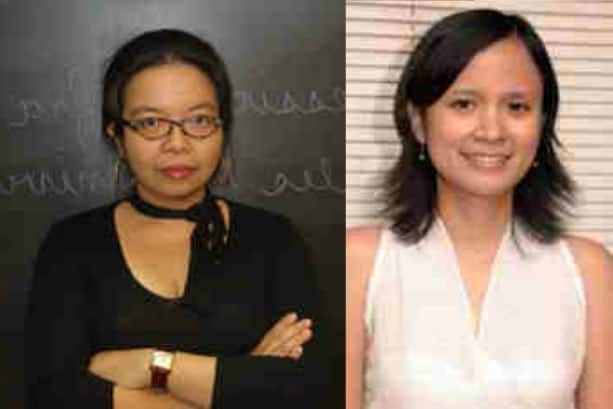
Women have been writing amazing books about Filipino life and culture for as long as we can remember, and it makes no sense that our attention is skewed so heavily in favor of the men’s.
For the sake of those who need a greater push into the spotlight, we are featuring 10 Filipino women writers whose works you definitely have to read.
Also Read: 9 Kickass Women in Philippine History You’ve Never Heard Of
1. Barbara Jane Reyes.
A poet with a BA from the University of California at Berkeley and an MFA from San Francisco State University, Reyes is the author of three poetry collections: Gravities of Center (2003), Diwata (2010), and Poeta en San Francisco (2005) which won the James Laughlin Award from the Academy of American Poets.
The Poetry Foundation says her work “explores a variety of cultural, historical, and geographical perspectives,” and that her winning collection Poeta “employs English, Spanish, and Tagalog to create a devastating portrait of her hometown.”
2. Catherine Ceniza Choy.
Born in 1969, Choy is a professor and chair of the Ethnic Studies Department at the University of California, Berkeley. She has written two books on Filipino diasporic history: Empire of Care: Nursing and Migration in Filipino American History (2003) and Global Families: A History of Asian International Adoption in America (2013). The latter looks at the complex politics and relationships that compel Americans to adopt Asian children from abroad.
She created a stir with her first book, Empire of Care , which won her the American Journal of Nursing Book of the Year Award in 2003; an Honorable Mention from the American Studies Association Lora Romero First Book Publication Prize in 2004; and the History Book Award from the Association for Asian American Studies in 2005.
3. Conchitina Cruz.
Cruz received her MFA in Writing from the University of Pittsburgh and currently teaches creative writing and comparative literature at the University of the Philippines-Diliman.
She was the recipient of both the Fulbright and Rockefeller Foundation grants; Palanca Awards in 1996 and 2001; and a Philippine National Book Award in 2006.
She’s written four books so far, which include Dark Hours (UP Press, 2005), elsewhere held and lingered (High Chair, 2008), and (together with Adam David and Delilah Aguilar), A Catalogue of Clothes for Sale from the Closet of Christine Abella—perpetual student, ukay fan, and compulsive traveler (The Youth and Beauty Brigade, 2012).
4. Eileen R. Tabios.
Born in 1960, our third poet on the list is also a prolific editor, anthologist, critic, publisher, conceptual/visual artist and fiction writer. With up to 50 titles in her combined bibliography, she has won the PEN Open Book Award, the Potrero Nuevo Fund Prize, and the PEN Oakland-Josephine Miles National Literary Award, among others.
Tabios is a writer who’s not afraid of crossing genres, mixing fiction with non-fiction as well as various artistic practices. The Poetry Foundation further credits Tabios for having invented the hay(na)ku , a poetic form in which “the first line contains one word, the second line contains two words, and the third line contains three words, for a total of six words.”
5. Felisa Batacan.
Felisa Batacan, also known as F.H. Batacan overseas, is a Filipino journalist and crime fiction writer based in Singapore, whose first novel, Smaller and Smaller Cricles (2002), was considered to be the Philippines’ first crime novel.
Batacan’s novel was published to wide critical acclaim in 2002, even though it had already won the Carlos Palanca Grand Prize for the English Novel in 1999. It then went on to win the 2002 National Book Award and the 2003 Madrigal-Gonzalez Best First Book Award.
Ten years later, the book would be acquired by New York-based publisher Soho Press, and is due to arrive on bookstands this year.
6. Genevive L. Asenjo.
Known for her ability to write and translate between Filipino, Kinaray-a and Hiligaynon, Asenjo’s first novel, Lumbay ng Dila (2010), won the National Book Award in 2011.
In 2009, she spent half of the year in Seoul as an Overseas Writing Fellow, and in 2012, Asenjo attended the University of Iowa’s prestigious International Writing Program as an Honorary Writing Fellow. On top of being Associate Professor at De La Salle University-Manila, she is also the founder-director of Balay Sugidanun.
7. Jessica Zafra.
You probably have known her for her column, Twisted (1994-2004), which appeared in the newspaper Today (now the Manila Standard Today ) before it turned into a book series.
Jessica Zafra is known for her trademark wit and remarkable insight, which she displays in spades across her two collections of short stories, The Stories So Far and Manananggal Terrorizes Manila . She also runs the website, JessicaRulesTheUniverse.com, which you should totally check out.
8. Lakambini Sitoy.
Described as a “brilliant new talent” by the New York Review of Books, Lakambini Sitoy’s first novel, Sweet Haven , had been longlisted for the Man Asian Literary Prize in 2008 and subsequently translated into French in 2011.
Sitoy also had two collections of short stories published: the first, Mens Rea and Other Stories (1999) received the National Book Award in 1999 while her second, Jungle Planet (2006), had been shortlisted. She’s also had the impressive feat of receiving prizes from the Palanca Awards as well as the Philippines Free Press Award.
9. Marjorie Evasco.
Born in 1953, Marjorie Evasco is a poet that prides herself as a true Bol-anon who keeps alive “the memory and spirit of the revolt led by Dagohoy,” committing “her vision through her poetry, believing that the worthy warrior and healer is adept at giving voice to the vision so that others may sing it, too.”
One of the earliest supporters of women’s rights and women writers in the Philippines, she has written a handful of collections and has received in turn a bucket load of awards, including the Palanca and National Book Awards. We recommend starting with Dreamweavers , a collection that details her sense of origin and deals with the intricacies of ancestral heritage.
10. Merlinda Bobis.
Merlinda Bobis was born in Legaspi City, Albay, and is currently based in Australia where she teaches at Wollongong University.
Bobis is a legend: she has published novels, short stories, dramas, and poems. Her plays have been produced and performed in more than ten countries around the globe. She went from winning the Most Underrated Book Award from the Small Press Network in Australia in 2013 to snagging the Juan C. Laya Philippine National Book Award for Best Novel in a Foreign Language in 2014.
Selected References
Cordite Poetry Review,. (2012). Three Poems by Conchitina Cruz . Retrieved 2 September 2015, from http://goo.gl/BR5NyG
Poetry Foundation,. Barbara Jane Reyes Biography . Retrieved 2 September 2015, from http://goo.gl/oZwh6O
The University of Iowa – International Writing Program,. Genevieve L. Asenjo . Retrieved 2 September 2015, from http://goo.gl/YRuVUy
University of California, Berkeley Department of Ethnic Studies,. Faculty Profile: Catherine Ceniza Choy, Professor and Department Chair . Retrieved 2 September 2015, from http://goo.gl/Vf2XtE
Written by FilipiKnow
in Facts & Figures
Last Updated January 21, 2022 01:30 PM
FilipiKnow strives to ensure each article published on this website is as accurate and reliable as possible. We invite you, our reader, to take part in our mission to provide free, high-quality information for every Juan. If you think this article needs improvement, or if you have suggestions on how we can better achieve our goals, let us know by sending a message to admin at filipiknow dot net
Browse all articles written by FilipiKnow
Copyright Notice
All materials contained on this site are protected by the Republic of the Philippines copyright law and may not be reproduced, distributed, transmitted, displayed, published, or broadcast without the prior written permission of filipiknow.net or in the case of third party materials, the owner of that content. You may not alter or remove any trademark, copyright, or other notice from copies of the content. Be warned that we have already reported and helped terminate several websites and YouTube channels for blatantly stealing our content. If you wish to use filipiknow.net content for commercial purposes, such as for content syndication, etc., please contact us at legal(at)filipiknow(dot)net

9 Filipina Writers You Should Read Today
By Karen de Castro
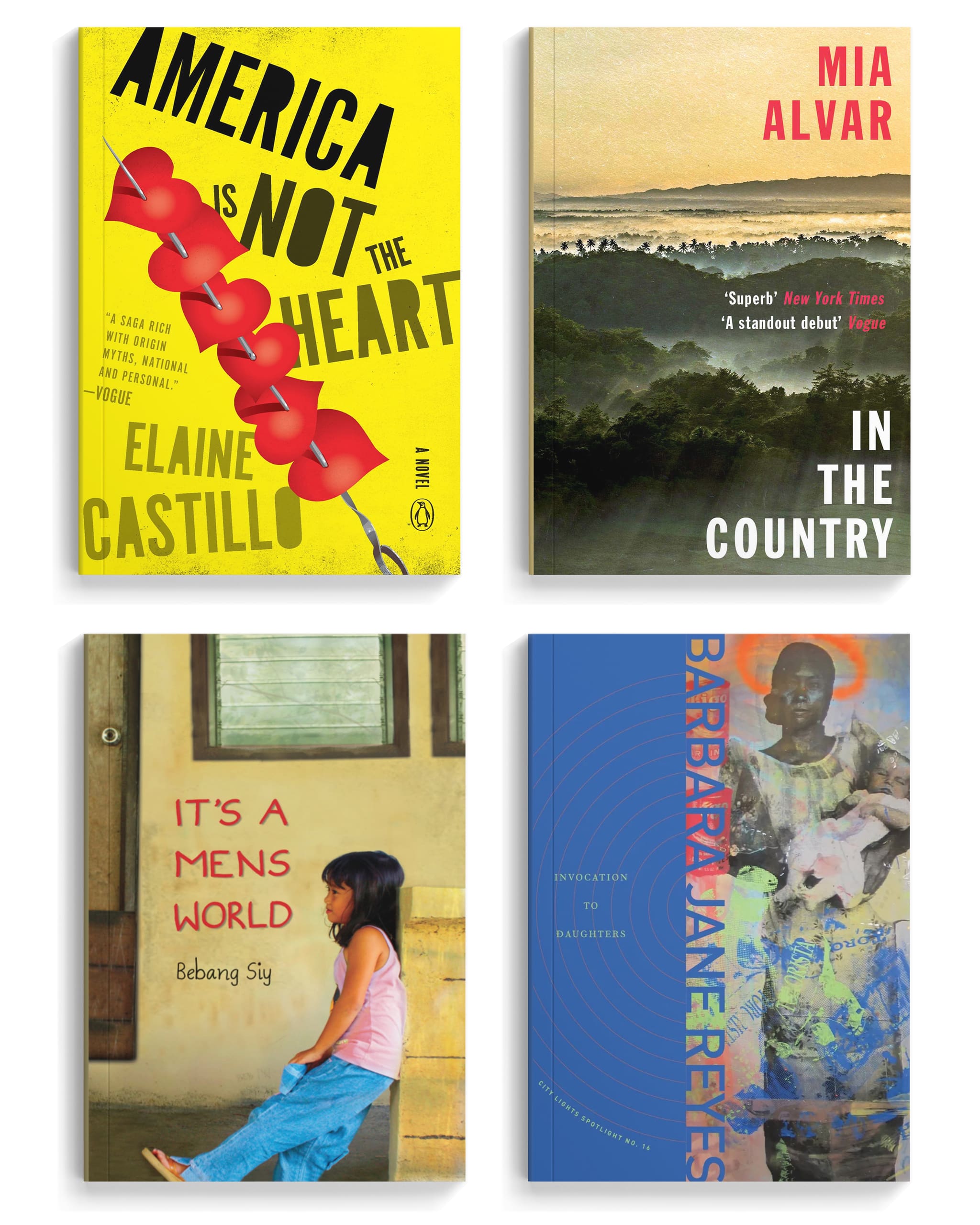
They are leading conversations about womanhood, cultural identity, and Filipino identity.
Since 1988, National Women’s Month has been observed in the Philippines every year in conjunction with International Women’s Day to celebrate women’s achievements, raise awareness and advocate for women’s equality, promote positive change to advance women, and fundraise for female-focused charities.
For Women’s Month, Vogue Philippines explores the works of these contemporary Filipina writers who are contributing to conversations about womanhood, Filipino identity , diaspora , gender and sexuality, and culture. Here are just some you should be adding to your reading list:
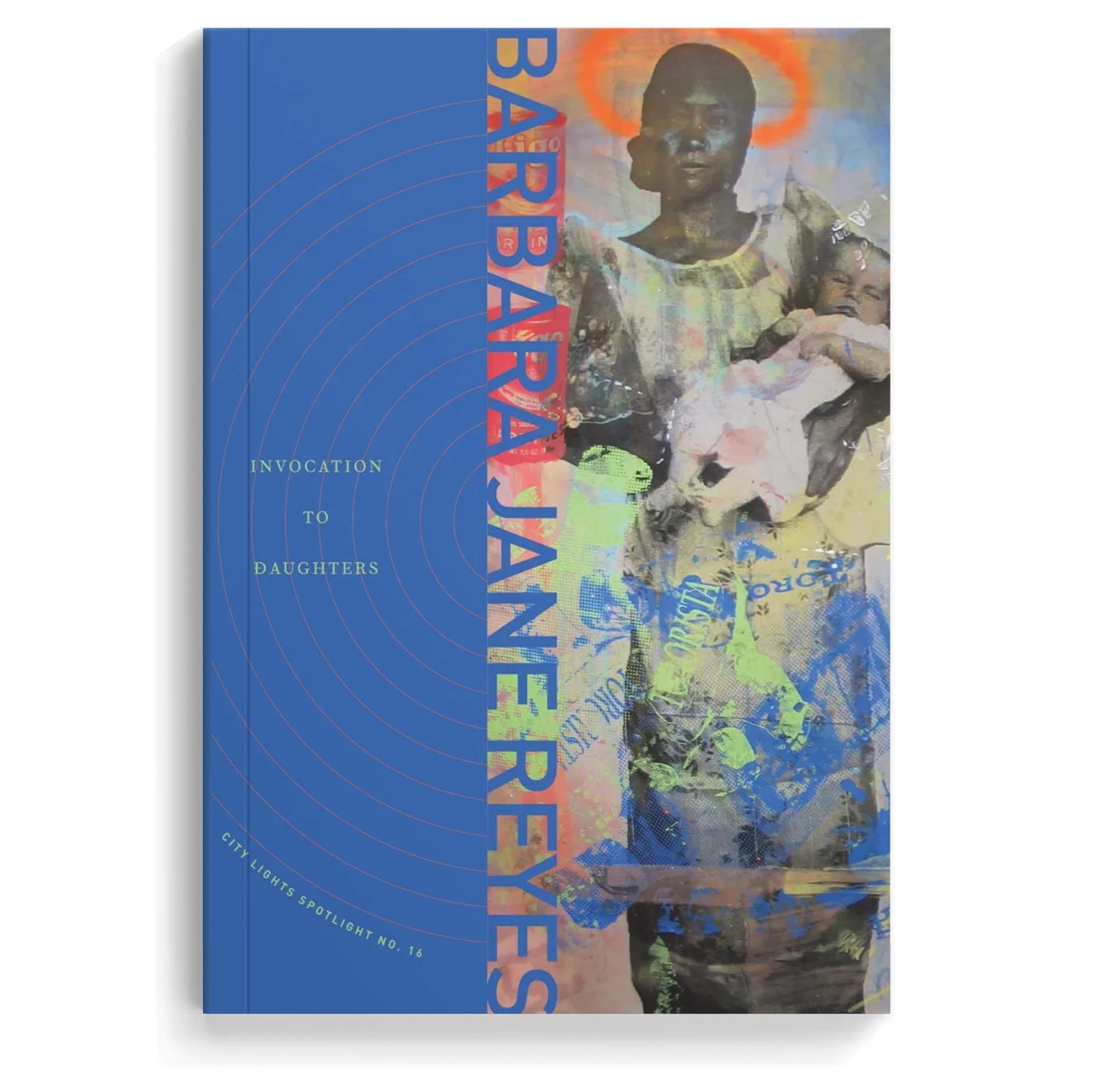
Barbara Jane Reyes
Born in Manila and raised in the San Francisco Bay area, Filipino-American poet Reyes writes about the complexities of diasporic identity, womanhood, and the human body. With works such as “ Invocation to Daughters” and “ Letters To A Young Brown Girl ,” Reyes uses poetry to discuss the nuances of multiple languages, multiple cultures, and multiple meanings. Her book Poeta en San Francisco won her the James Laughlin Award of the Academy of American Poets in 2005.
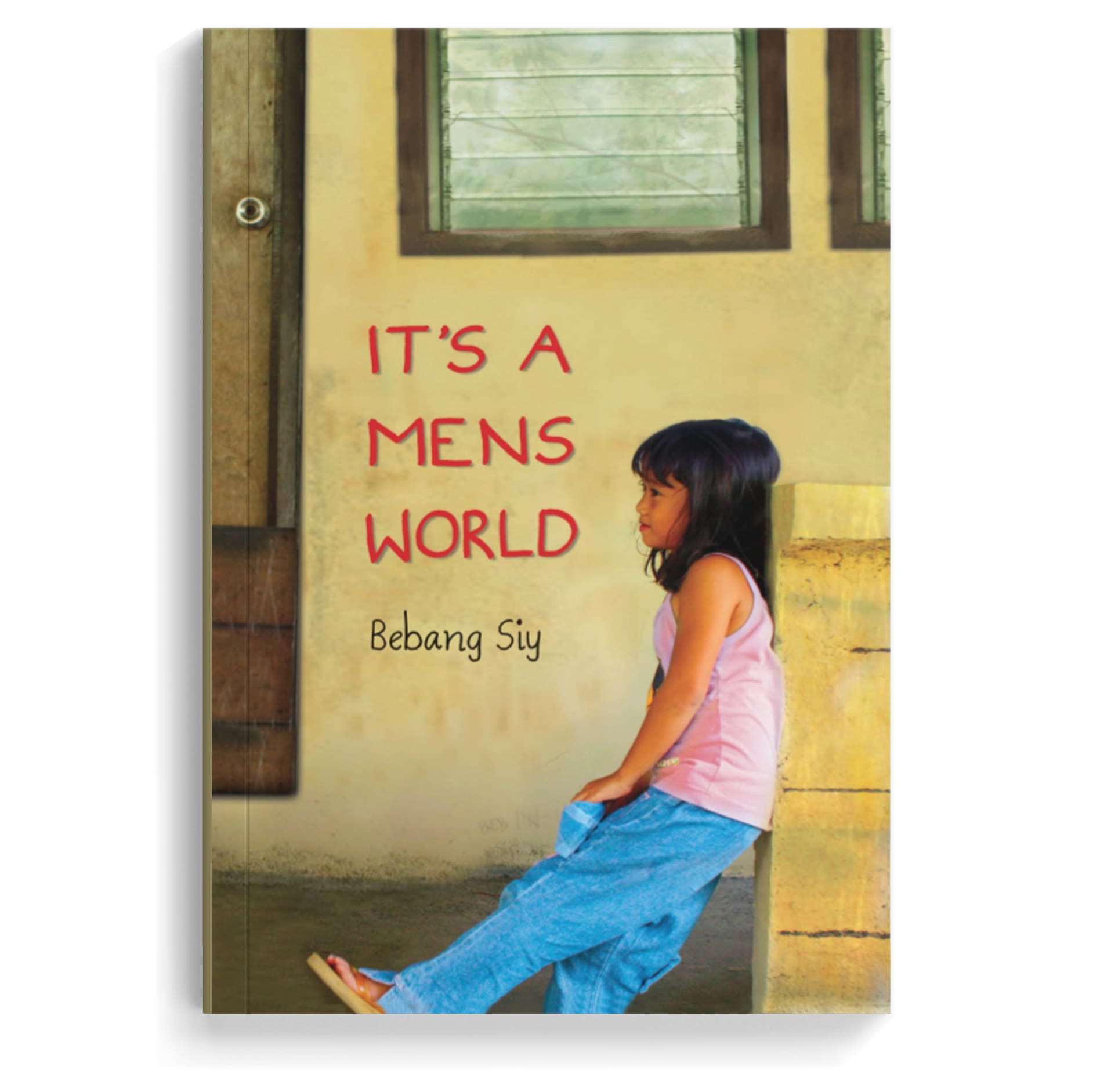
Beverly Wico Siy
In her book It’s A Mens World , writer, translator, and copyright advocate “Bebang” Wico Siy pulls from her personal experience of growing up Filipino, using observational humor to reflect on her background of growing up poor, tell stories about being part of the Filipino-Chinese community, and delve into issues of womanhood. Siy’s witty repartee and punchy Filipino humor won It’s A Mens World the Filipino Readers Choice Awards in 2012.

Daphne Palasi Andreades
In her debut novel Brown Girls , Filipino-American writer Andreades tells a coming-of-age story from the point of view of a collective narrator: brown girls from “ the dregs of Queens ” who grow into women, navigating successes, failures, and similar microaggressions that they all face.
She draws upon her own experience as the child of Filipino immigrants, depicting what life is like for people of color in the United States in an interview with the Asian American Writers’ Workshop: “a beautiful mix of people, cultures, languages, and beliefs, all co-existing; yet many of these people are invisible within the American society or perceived as outsiders when, in fact, they belong just as much to anyone else.”
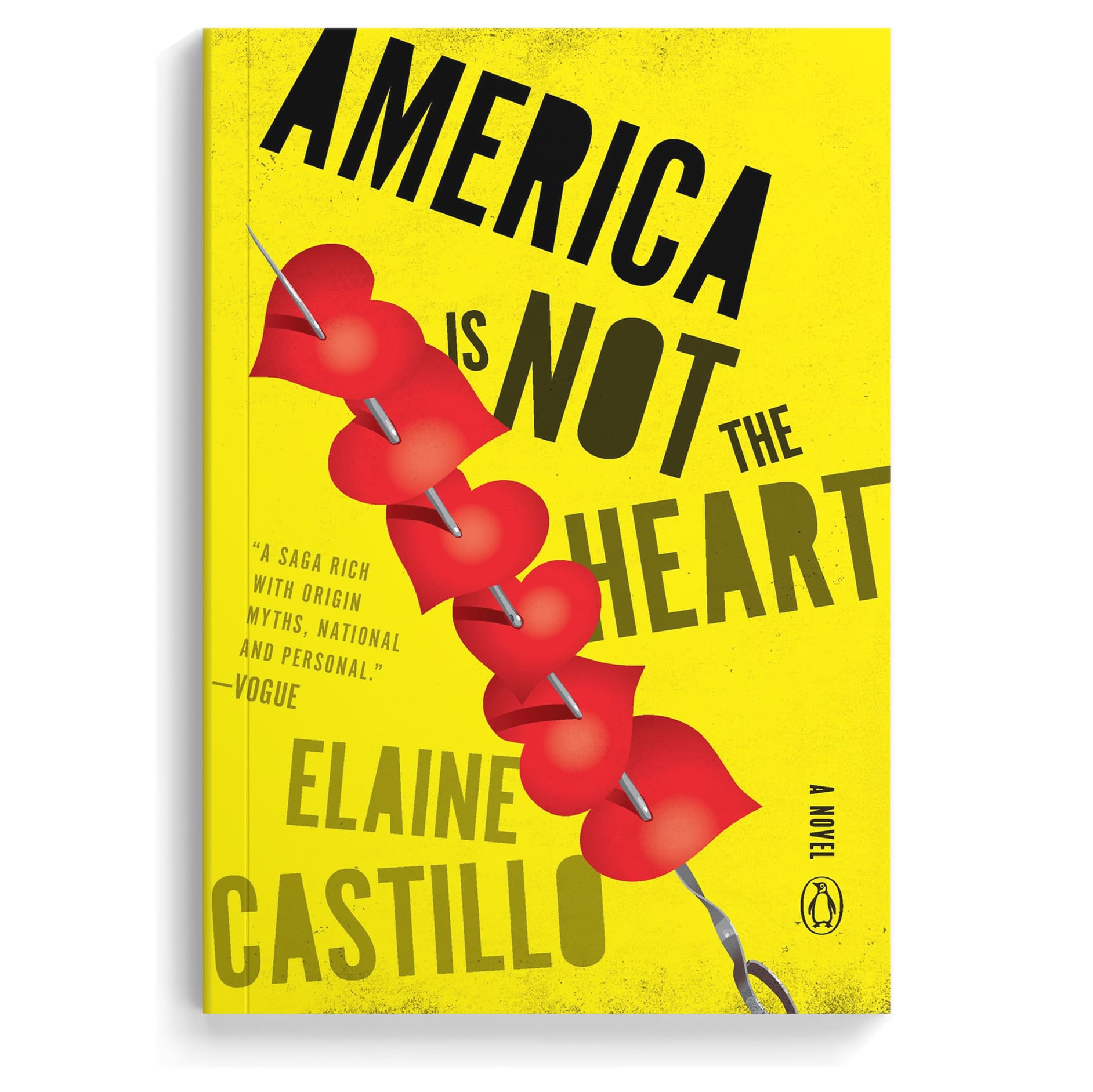
Elaine Castillo
Castillo is most known for her debut novel, America Is Not The Heart , which received critical acclaim. The novel delves into the lives of Filipino immigrants in San Francisco’s East Bay area, touching upon the political climate during the 1980s and 1990s and the immigrant communities that popped up in suburban United States as a result.
She immerses you into the rich layers of multilingual and multicultural immigrant experiences through her use of five languages throughout the novel (English, Spanish, Tagalog, Pangasinan, and Ilocano). Making her main character bisexual is personal. “For me it was very important to write about queer women, bi women in particular, because I’m also bi and I don’t see any representations of bi women anywhere, especially not bi Filipina or Asian Americans,” she says in an interview .

Gina Apostol
A finalist for the Dayton Literary Peace Prize, Apostol’s Insurrecto roots its story around one of the bloodiest incidents in the Philippine-American War: the 1901 Balangiga incident . The novel probes into two women’s ideas for retelling history, weaving multiple intricate narratives into a story of cultural appropriation, history and power, and how these all play into the main characters’ identities and motivations.

Jhoanna Lynn B. Cruz
“What makes you tingle as a lesbian?” This was the prompt that Palanca Award winner Cruz gave to the contributors who became part of Tingle: Anthology of Filipina Lesbian Writing . While there are compilations of queer writing published in the Philippines, an anthology of the literary works of Filipino lesbians is so overdue that she says “some of our lesbian writers have stopped writing or being a lesbian” in the book’s introduction. The result is a collection of pieces from writers who define what women loving women is like in their own terms.

Leny Mendoza Strobel
Founder of Center for Babaylan Studies, Strobel explores the rich history and tradition of the Babaylan in her collection of essays, Babaylan: Filipinos and The Call of The Indigenous . The essays and personal narratives all share one main idea : “If we can articulate the Babaylan’s healing practice and Kapwa psychology as our intellectual, emotional, cultural, and spiritual capital—then we have much to offer to each other, to our communities and to the world.”
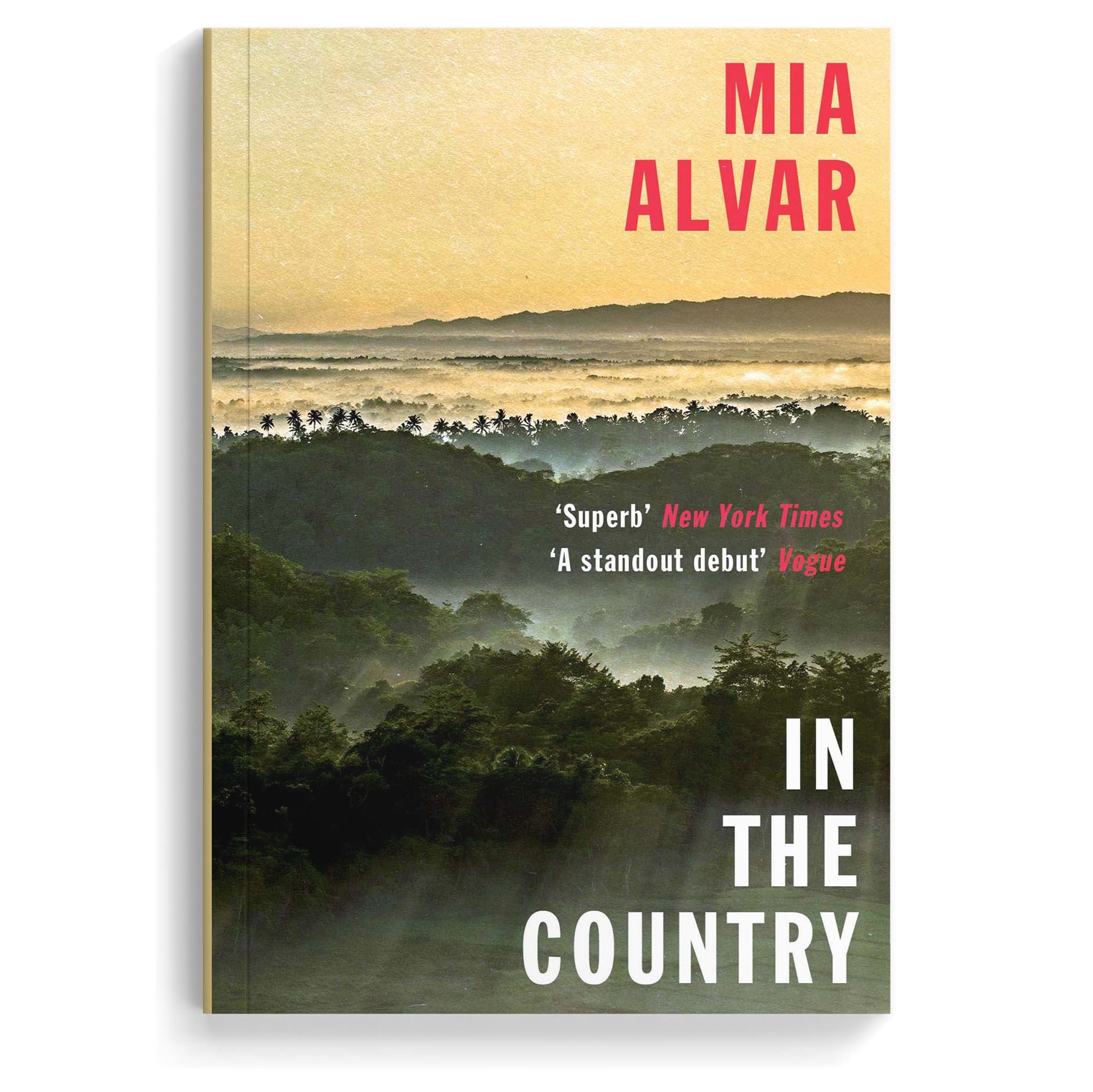
Mia Alvar
PEN/Robert W. Bingham Prize winner Alvar’s most notable work is the short story compilation In The Country . The critically acclaimed debut work dives into the Philippine diaspora through nine short stories of exiles, wanderers, and emigrants who leave the Philippines to start over in the United States, the Middle East, and elsewhere, with some turning back. Alvar’s novel delves into themes of loss, displacement, and the longing for connections across borders.
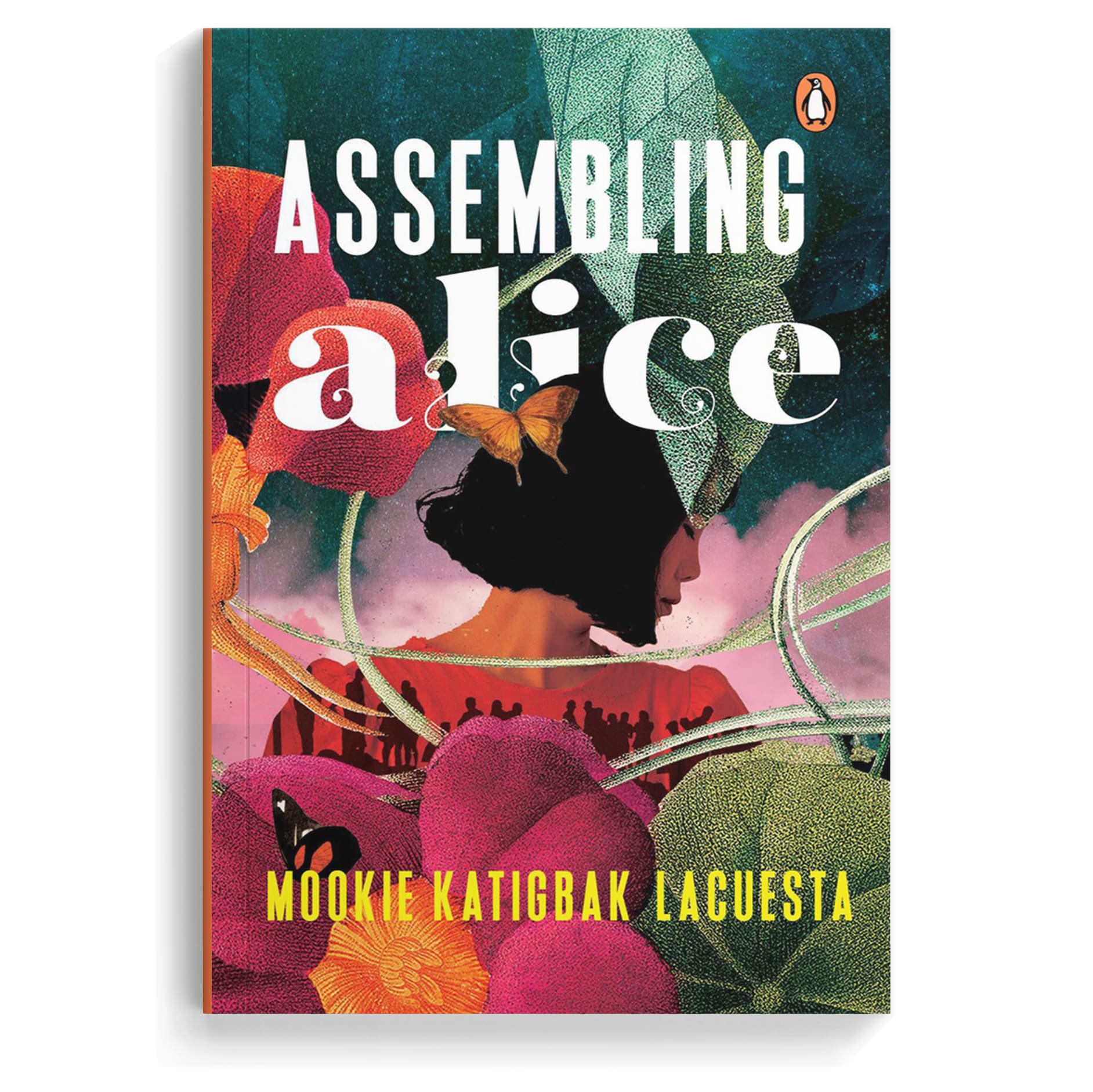
Mookie Katigbak Lacuesta
Palanca Award and Philippines Free Press Award-winning poet Katigbak-Lacuesta’s poetry collections talk about a wide range of topics: love, power dynamics between men and women, the Filipino’s colonial past, diaspora—all presented in lyrical form. But if you prefer to read prose, her latest release, Assembling Alice , is a “biofiction” featuring a real-life person with a fictionalized story centered around nation-building, family storytelling, and memory.
- Filipino Models on the Power of Representation and Identity
- 6 Must-Read Books About Philippine Life And Literature
- 10 Books On The Filipino Experience
- An Excerpt From Mia Manansala’s New Cozy Mystery, Blackmail and Bibingka
- Filipina Authors
- Philippine Literature

- #WalangPasok
- Breaking News
- Photography
- ALS Exam Results
- Aeronautical Engineering Board Exam Result
- Agricultural and Biosystem Engineering Board Exam Result
- Agriculturist Board Exam Result
- Architecture Exam Results
- BAR Exam Results
- CPA Exam Results
- Certified Plant Mechanic Exam Result
- Chemical Engineering Exam Results
- Chemical Technician Exam Result
- Chemist Licensure Exam Result
- Civil Engineering Exam Results
- Civil Service Exam Results
- Criminology Exam Results
- Customs Broker Exam Result
- Dental Hygienist Board Exam Result
- Dental Technologist Board Exam Result
- Dentist Licensure Exam Result
- ECE Exam Results
- ECT Board Exam Result
- Environmental Planner Exam Result
- Featured Exam Results
- Fisheries Professional Exam Result
- Geodetic Engineering Board Exam Result
- Guidance Counselor Board Exam Result
- Interior Design Board Exam Result
- LET Exam Results
- Landscape Architect Board Exam Result
- Librarian Exam Result
- Master Plumber Exam Result
- Mechanical Engineering Exam Results
- MedTech Exam Results
- Metallurgical Engineering Board Exam Result
- Midwives Board Exam Result
- Mining Engineering Board Exam Result
- NAPOLCOM Exam Results
- Naval Architect and Marine Engineer Board Exam Result
- Nursing Exam Results
- Nutritionist Dietitian Board Exam Result
- Occupational Therapist Board Exam Result
- Ocular Pharmacologist Exam Result
- Optometrist Board Exam Result
- Pharmacist Licensure Exam Result
- Physical Therapist Board Exam
- Physician Exam Results
- Principal Exam Results
- Professional Forester Exam Result
- Psychologist Board Exam Result
- Psychometrician Board Exam Result
- REE Board Exam Result
- RME Board Exam Result
- Radiologic Technology Board Exam Result
- Real Estate Appraiser Exam Result
- Real Estate Broker Exam Result
- Real Estate Consultant Exam Result
- Respiratory Therapist Board Exam Result
- Sanitary Engineering Board Exam Result
- Social Worker Exam Result
- UPCAT Exam Results
- Upcoming Exam Result
- Veterinarian Licensure Exam Result
- X-Ray Technologist Exam Result
- Programming
- Smartphones
- Web Hosting
- Social Media
- SWERTRES RESULT
- EZ2 RESULT TODAY
- STL RESULT TODAY
- 6/58 LOTTO RESULT
- 6/55 LOTTO RESULT
- 6/49 LOTTO RESULT
- 6/45 LOTTO RESULT
- 6/42 LOTTO RESULT
- 6-Digit Lotto Result
- 4-Digit Lotto Result
- 3D RESULT TODAY
- 2D Lotto Result
- English to Tagalog
- English-Tagalog Translate
- Maikling Kwento
- EUR to PHP Today
- Pounds to Peso
- Binibining Pilipinas
- Miss Universe
- Family (Pamilya)
- Life (Buhay)
- Love (Pag-ibig)
- School (Eskwela)
- Work (Trabaho)
- Pinoy Jokes
- Tagalog Jokes
- Referral Letters
- Student Letters
- Employee Letters
- Business Letters
- Pag-IBIG Fund
- Home Credit Cash Loan
- Pick Up Lines Tagalog
- Pork Dishes
- Lotto Result Today
- Viral Videos
Philippine Authors and Their Works – Some Legendary Authors In PH
Here are some of the most famous philippine authors and their works that left remarkable mark in the ph literature..
PHILIPPINE AUTHORS AND THEIR WORKS – These are the legendary Filipino authors and their remarkable contributions.
The Philippine literature has improved greatly over time. We have authors who write fully in Filipino, while others scribbled their thoughts and letters in English adapting the Western style and language. But what most definitely will be of significance is how these creations have shaped and enriched the literature of the country.
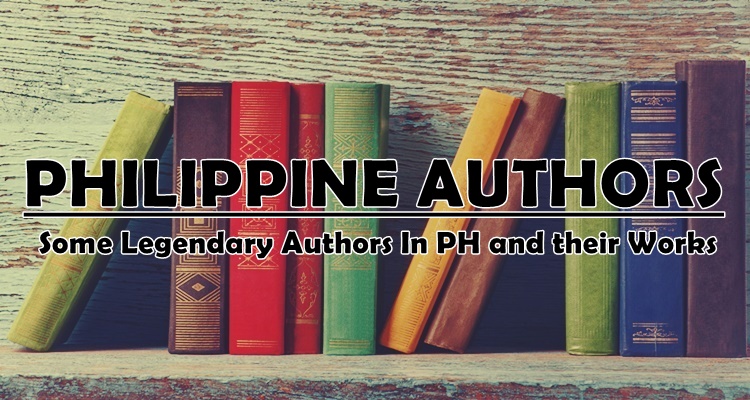
Meet some of the most legendary and iconic authors from the Philippines below and a few of their masterpieces:
- She wrote the 1990 novel Dogeaters which won the American Book Award and was declared a finalist for the National Book Award. She also created the play Mango Tango which happened to be her first-ever play.
- He is one of those writers who deeply tackled social justice and issues. He created Rosales Saga – a a five-volume work. He is one of the most widely read Filipino authors. In 1980, he won the Ramon Magsaysay Award for Literature.
- He is a National Artist. He published a work at the age of 17 and his skill has made him won a scholarship from an essay contest where he topped. Among his most famous works is The Woman With Two Navels .
- She wrote numerous books, short stories, and poems which told the lesser-known facts about the life of a Filipino. Fish-Hair Woman is one of her greatest stories that narrated the story of a woman who fell in love with an Australian soldier. Her works Rita’s Lullaby and White Turtle won the international Prix Italia Award and the Steele Rudd Award, respectively.
- He is popularly called Butch Dalisay, his pen name. He lived and got imprisoned in the time of Martial law. his writings include Killing Time in a Warm Place (his first novel) and Soledad’s Sister (his second novel). In his career, he has won 16 Palanca awards.
- He is a poet, author, and a teacher. His Eye of the Fish: A Personal Archipelago won the PEN Open Book Award and an Asian American Literary Award.
- Our very own national hero is a prolific writer. He wrote Noli me Tangere and El Filibusterismo m, which, at current times, is deeply discussed in academic institutions. Mi Ultimo Adios is the last poem he wrote before his execution.
- Functions Of Communication – Basic Functions Of Communication
- Nature Of Communication – Elements, Process, and Models Of Communication
What can you say about this? Let us know!
For more news and updates, follow us on Twitter: @ philnews_ph Facebook: @PhilNews and; YouTube channel Philnews Ph .
Leave a Comment Cancel reply
You are using an outdated browser. Please upgrade your browser to improve your experience.

13 Books by Filipino Authors You Should Be Reading
Today, it’s our pleasure to welcome author Tif Marcelo to Get Lit to recommend a few of her favorite books by Filipino authors! Her new novel Once Upon a Sunset , out now, is a delightful story of a woman who uses a sabbatical from her successful medical career to visit the Philippines to reconnect with her long-lost family, a trip that could just change her life forever. Thanks for joining us, Tif!
As a Filipino-American who, from a young age, found solace and a second home in our public library, I yearned to see representation of Filipino diaspora on the shelves. Now, as an author myself, I especially seek out other Filipino writers to read and share with others. Here are thirteen books from Filipino authors right off my bookshelf to grace your TBRs. They give a taste of the talent among Filipino authors, and some of our rich culture. Your heart is sure to expand as you read them, and you may possibly find your next favorite author among them.
This post was originally published on GetLiterary.com.
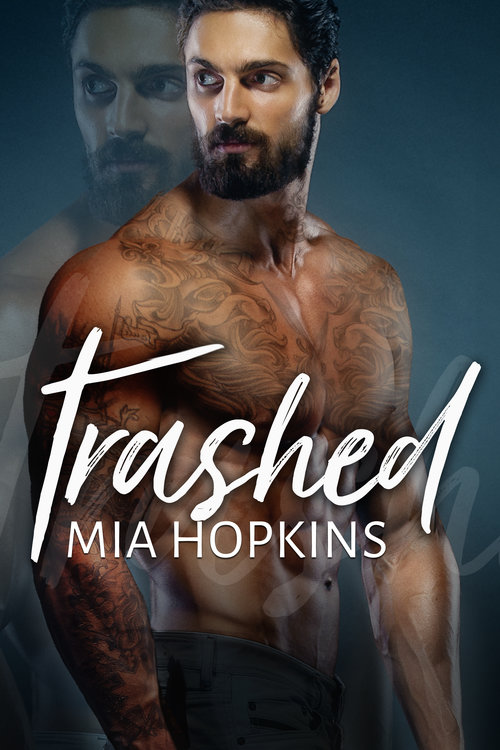
A diverse romance, the second in the Eastside Brewery series, is told from anti-hero Eddie Rosas’s point of view. Eddie is trying to reclaim his life and find his father after being released from prison. Although he attempts to live under the radar, he’s pulled to the surface by the independent chef Carmen Centeno, as well as his old crew, who mean to bring him back to the fray. An emotional read with ample sexy times, this book asks the evergreen question: Can people change?

MENTIONED IN:
By Tif Marcelo | March 9, 2020

The first in the Carpe Diem Chronicles, this fun multicultural romance takes place in Boracay, Philippines, where Krista Lopez’s very last expectation on her week-long vacation is to fall for her American boss, who’s staying at the same resort. A light, enjoyable read, and the happily ever after is sweet and satisfying.

A debut, this enemies-to-lovers romance brings together Emmie, a headstrong heroine, and an equally formidable coworker, Tate, to work together for a charity construction project. With a sizzling and well-written first kiss, this romance is sure to keep you reading until the last page.
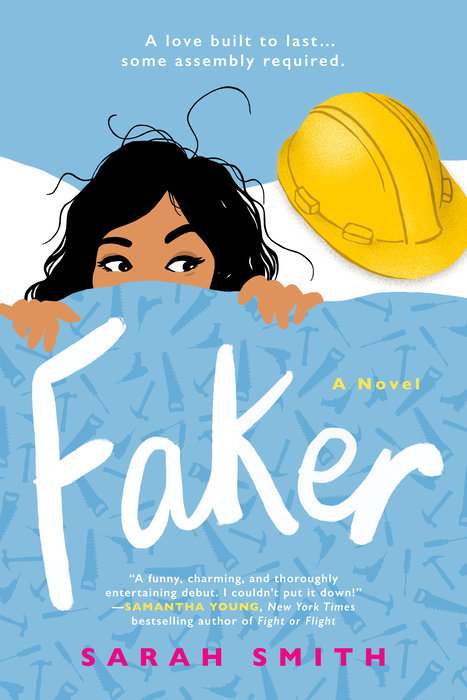
In this debut novel steeped in family drama and magic, Natalie Tan, a chef, returns home to San Francisco after her mother’s death, only to find that she’s inherited her grandmother’s restaurant. There, she’s challenged to cook three recipes to help her neighbors and the restaurant and, in doing so, finds her own healing.
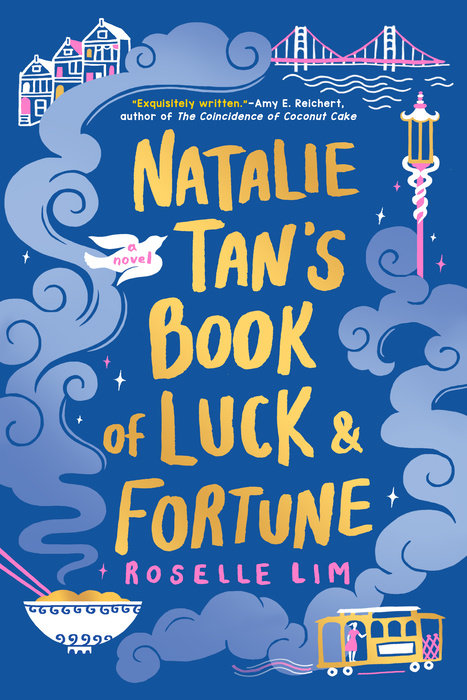
A romantic novella about chance meetings and starting over, this book explores the giddiness of new love and the bittersweet reality of facing the unknown. As a #romanceclass book, it’s set in the Philippines with Filipino characters, bringing the authenticity of modern love and life in this island country to the reader.

The author of the unputdownable Creep series gives us a new dark thriller about pharmaceutical executive Georgina “Geo” Shaw, recently released from prison for her role in the murder of her best friend when they were in high school. With alternating timelines and points of view with investigator and childhood friend Kaiser Brody, Jar of Hearts weaves a chilling tale of secrets, seduction, and fear.
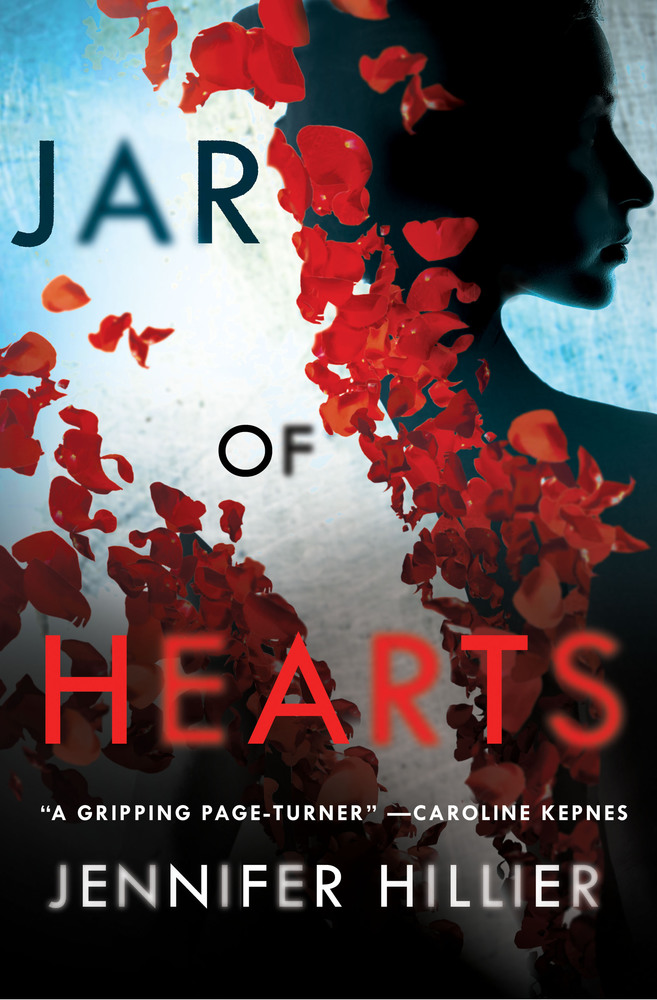
In this richly developed dystopian novel, Jane, a Filipino immigrant, leaves her baby daughter to become a Host at Golden Oaks, a spa-like environment where surrogates are housed. It’s also a place where surrogates are not allowed to leave, and in which their daily lives are controlled. Touching on topics such as social class, motherhood, and money, this superb novel is an excellent choice for your next book club selection.
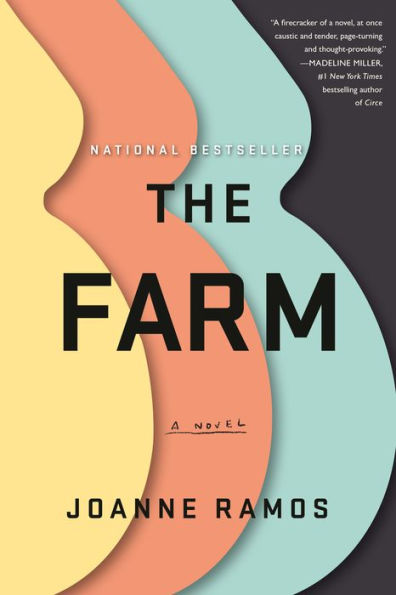
8 Best Book Club Books I’ve Read So Far This Year
By Hannah Schaffer | October 1, 2019
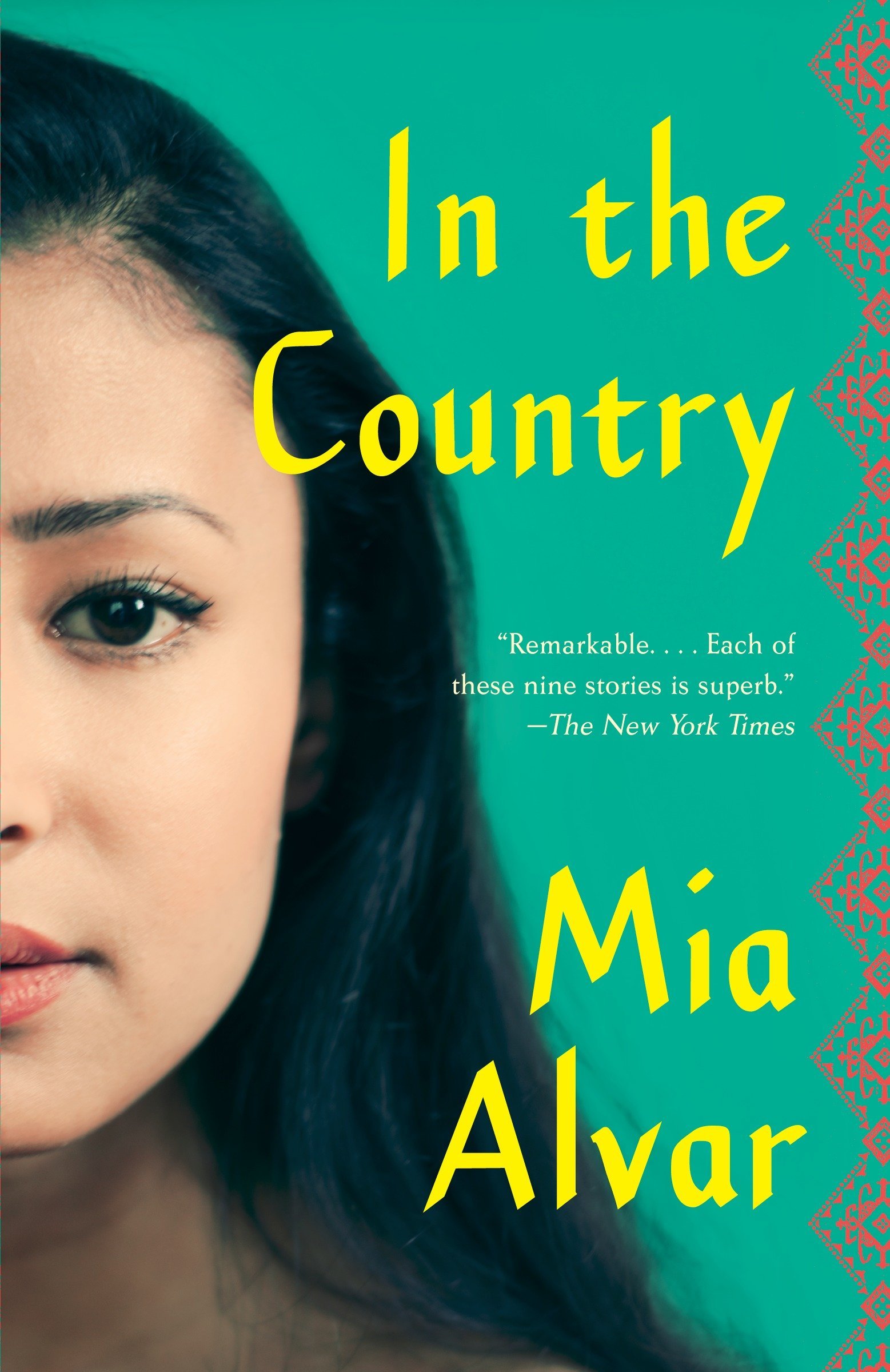
I could not put down this book of short stories. Representing the range of Filipino diaspora across countries, with stories both poignant and sometimes heartbreaking, In the Country speaks to the memories and customs familiar to Filipinos, written in exceptionally honest prose.

Set in World War II in the Philippines, this book captivated me with its blend of magic, the tragedy of war, and the strength of community. While the fight for possession of Manila during the Japanese occupation occurs above ground, the Karangalan family and their neighbors hunker down in a cellar for safety, telling each other tales that enable them to survive, tales that could teach all of us much about the power of hope.
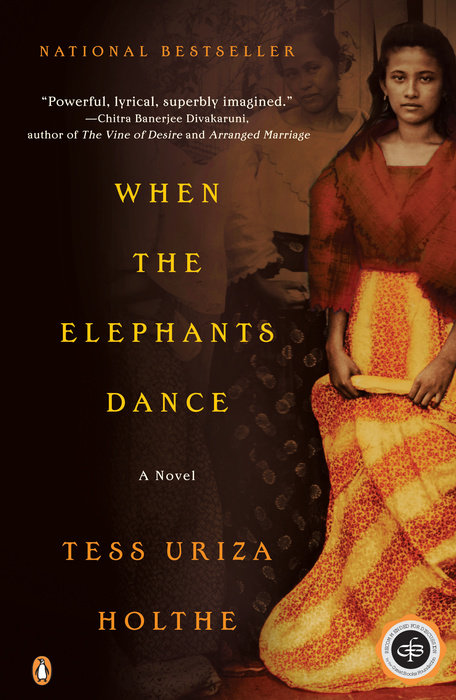
Now I’m switching gears to a few of my favorite children’s books—which by no means should keep adults from reading! Ambitious Lou Bulosan-Nelson intends to build a home for her extended family, and along the way she discovers the meaning of home. We could all learn a lot from Lou’s tenacity in this middle-grade book, which should be read by all ages.

Brave Nora embarks on a journey to find her missing mother in a shantytown in Manila’s North Cemetery. With beautiful prose, Everlasting Nora will sweep you away with the precious joys in its characters’ lives. This middle-grade book will speak to children and adults alike for its messages of hope and community.
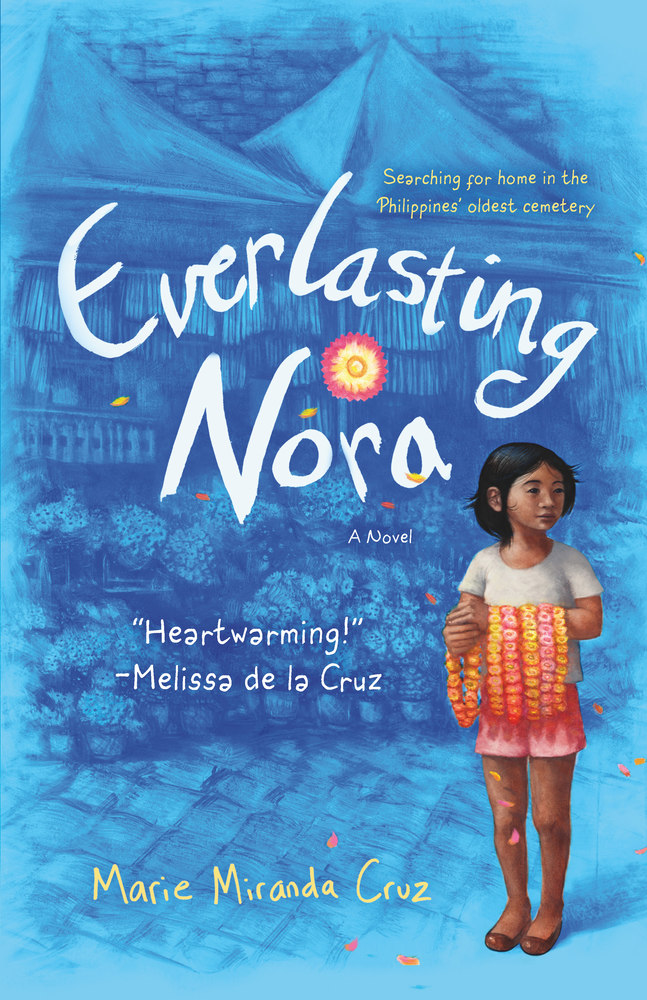
The 2018 Newbery-winning middle-grade book, Hello, Universe explores the unlikely friendship of four very different children. When one falls into trouble, the other three embark on an epic adventure to help, and along the way learn more about themselves and others. This book encourages empathy and cooperation—and we can never have enough of that!

In Something in Between , Jasmine de los Santos, on the cusp of adulthood, finds out that her family is undocumented and now has to decide how to face this new reality. This young adult book is only one of the many written by powerhouse bestselling author Melissa de la Cruz, but this one is special (in my opinion) because it speaks to the straddled identity of many Filipinos.
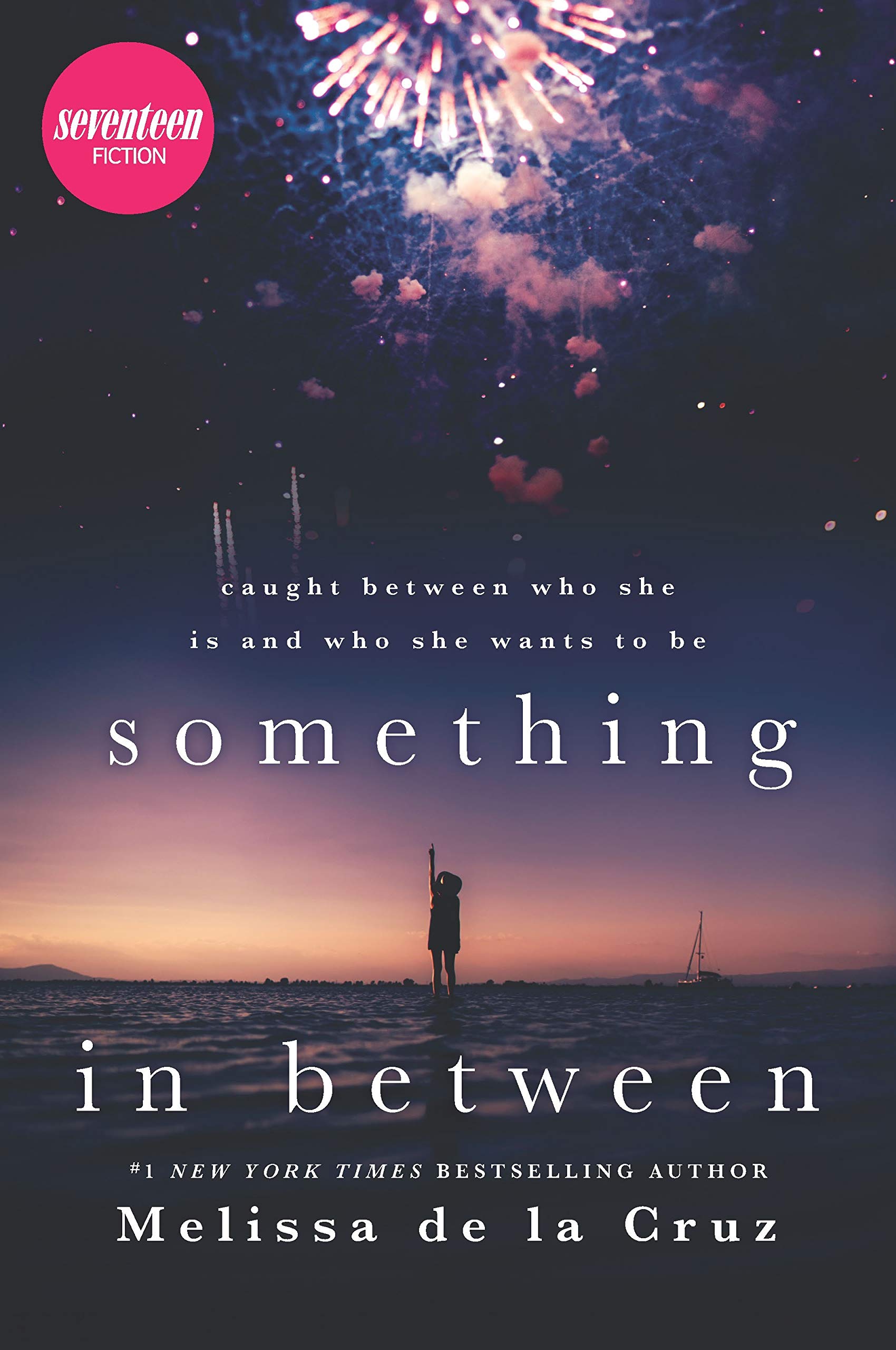
Want to learn more about Tif Marcelo’s new novel Once Upon a Sunset ? See why Get Lit's Nicole choose it as one of her Most Anticipated Releases for March:
I always eagerly anticipate books featuring POC leads, and that is one of several reasons I’m excited for Tif Marcelo’s Once Upon a Sunset . It’s the story of a D.C. physician named Diana who, through a series of unexpected and unfortunate life circumstances, finds herself with lots of free time. Rather than wallow, Diana attempts to restore some order to her life and, in the process, she and her mother, Margo, discover old letters that lead them to uncover a family secret and surviving relatives in the Philippines. Diana decides to take the trip to the other side of the world, and learns more there about herself, her family, and life in ways that she could never have expected. Tif Marcelo is known for writing about complex family dynamics, and I’m eager to see how that plays out here, especially with the added layer of Filipino culture woven in.

The author of The Key to Happily Ever After— “a true gem filled with heart, laughs, and a cast of delightful characters” (Nina Bocci, USA TODAY bestselling author)—returns with a heartwarming and charming novel about a woman who travels to the Philippines to reconnect with her long-lost family…and manages to find herself along the way.
Diana Gallagher-Cary is at a tipping point. As a Washington, DC, OB/GYN at a prestigious hospital, she uses her career to distract herself from her grief over her granny’s death and her breakup from her long-term boyfriend after her free-spirited mother moves in with her. But when she makes a medical decision that disparages the hospital, she is forced to go on a short sabbatical.
Never one to wallow, Diana decides to use the break to put order in her life, when her mother, Margo, stumbles upon a box of letters from her grandfather, Antonio Cruz, to her grandmother from the 1940s. The two women always believed that Antonio died in World War II, but the letters reveal otherwise. When they learn that he lived through the war, and that they have surviving relatives in the Philippines, Diana becomes determined to connect with the family that she never knew existed, though Margo refuses to face her history. But Diana pushes on, and heads on a once-in-a-lifetime trip that challenges her identity, family history, and her idea of romantic love that could change her life forever.
Infused with Tif Marcelo’s signature “sexy, adorable, and heartfelt” (Kate Meader, USA TODAY bestselling author) voice, Once Upon a Sunset is a moving and lyrical celebration of love, family, and second chances.
Let Your Favorite Summer Tradition Choose Your Next Book
By Chris Gaudio | June 1, 2021
Book Club Picks: 7 Relatable Reads About Life Not Going According to Plan
By Holly Claytor | March 18, 2021
Book Therapy: 8 Soul-Soothing Reads That Help Us Quiet Our Anxieties
By Alice Martin | September 22, 2020
Staff Picks: 6 of the Best Books We Read This Summer
By Off the Shelf Staff | August 24, 2020
Book Your Dream Vacation with These 7 Globe-Trotting Reads
By Get Literary | June 17, 2020
Must-Reads to Celebrate Asian American and Pacific Islander Heritage Month
By Get Literary | May 22, 2020
You must be logged in to add books to your shelf.
Please log in or sign up now.
Literary Journal of the Philippine South
Recently, I discovered a poem entitled “Aswang” by Barbara Jane Reyes. Readings of the poem relate it to the subversive nature of powerful women. But the moment I chanced upon it, it reminded me of what I first learned about aswangs in my Philippine History class years ago, especially in the lines which read: “I am the bad daughter, the freedom fighter, the shaper of death masks.”
Reyes’ aswang never stayed the same way. She became “the snake, the crone,” or “the grunting black pig” or “your inverted mirror.” She shifted not to what the other person would deem desirable, but in the very creatures which would frighten them.
By the end of the poem, she dared the reader to “burn me with your seed and salt / Upend me, bend my body, cleave me beyond function. Blame me.” It was a powerful statement. Prodding the accuser to do the very thing they do best– inflict violence against those who challenge what they view as attractive, as normal, and as good. Read More
My Other Name
I was five when I learned I had another name, besides what my parents gave me. The name was first born out of my younger sister’s anger who never understood my difference—which for her and other kids were unusual and difficult to comprehend. For them, the world operated in black and white. Dolls are for girls; cars and toy guns are for boys. I wouldn’t blame them, we were taught to see the world in such banality and convenience.
But growing up was tough if you happen to be in the gray area.
As I ran my soft little hands and patted it against the black silky hair of my sister’s limited edition Barbie doll—donned in gold Filipiñana , beaded in intricate red gumamela patterns, and crowned with pearls towering on her head like those queens in Sagala , I was caught in a trance, mesmerized in an unknown cadence of beauty that I can’t help but adore. I continued patting her, held her brown legs, making sure not to spoil the crisp sparkling saya shaping her hourglass figure. I lifted her slim brown arms, waving them like queens do. She was beaming with her white teeth framed in her cherry red lips. I giggled in adoration until I heard my sister’s voice.
Maupay (At Mga Katagang Waray na Di Ko Malilimutan)
- Maupay nga aga (kulop o gab-i) – magandang umaga, hapon o gabi.
Magiliw ang wastong kataga.
Madalas tayong magpalitan ng mga “maupay” – sa umaga o gabi – depende sa iyong kagustuhang sumagot. “Maupay man,” ang tugon sa kumustahan. Mabuti naman.
Madalas kong tingnan ang cellphone ko. Palagian kong ina-unlock, sakaling may nakaligtaan akong text mo. Kung babatiin mo rin ba ako ng maupay na kung isulat mo ay “maupai”. Kung sasagutin mo ako ng okey na kung isulat mo ay “uki po.” Madalas din akong nagpapanggap na may itatanong o hihinging pabor – paki-salin mo naman ito sa Waray; may maitutulong ba ako sa inaayos niyong papel? Sasamahan ko ba si Alice bukas sa miting niyo? Mga palusot para lang mapahaba ang usapan natin sa text.
Choosing to Stay Home
?Diri lang ta,? Nanay Salbing says, as she leads us through the maze that is Barangay Pasil.
An hour ago, I was sitting in a cubicle in our office on the sixth floor of a building inside IT Park. The office only seems to have two colors: blue and white. In the office, there are cubicles as far as the eye can see. And once you sit down on your designated spot, the only sight you are permitted is your computer unit, which you would be staring at for the rest of the day. If you stayed glued to your work, other people aren?t visible unless you look over the spines on top or to the side, which requires movement. Everything inside there is identical and easy to commit to memory.
Every step in Pasil is dynamic.
Baybayin All Over Her Face
Her eyes spill out unspoken stories?in the form of wrinkles that etch deeper and longer with the passage of time. From the corners of her eyes, they branch out like patterns on the wings of a butterfly?crawling all over her face, etching curves on her cheeks or fashioning waves on her forehead.
These scratches of age may reveal themselves as random graffiti for marking territories, as if declaring, The fine lines around my eyes are the marks of generations I witnessed coming and going. The folds below my mouth are the stories I wish to tell but can only whisper.
I witnessed these lines curve and swirl and dance with the rhythm of time, until they turned themselves into beautiful baybayin : the hushed characters of our history, striving for survival, like every one of her silent stories.
Next Page »
Katitikan Issue 5: Writes and Rights
Our voices, words of law, the symphony of frogs, the slaying of the war crab.

The Filipino Author as Producer
This week we’re celebrating the publication of Critical Creative Writing: Essential Readings on the Writer’s Craft , a comprehensive introduction to the key debates in creative writing today, from the ethics of appropriation to the politics of literary evaluation. Today’s post is an excerpt from Conchitina Cruz’s essay “The Filipino Author as Producer.”
My profile in the professionalized world of poetry is not unusual: schooled in academic institutions of creative writing, both in the Philippines and the US, published by university presses and literary journals based in universities, employed in an English Department as a teacher of literature and creative writing courses. It is unsurprising to see these details recur in the brief biographies of eighteen poets from eighteen countries in attendance at a poetry festival. In a country where “Filipino” is regarded as synonymous to “maid,” I go onstage, buttressed by my academic degrees and the grants that granted me time to write, and read my poems in English to an international audience. Behind me, translations into Chinese of my lines, as I read them, are flashed on a big screen. The space I am given to present my work is made possible with the help of a domestic helper, who reminded her employer to consider including a Filipino in the festival lineup. My poems betray preoccupations removed from the realities of the three Filipino aunties in the audience, who have, perhaps unwisely, decided to dedicate a portion of their day off to showing their support for a Filipino poet. The poems are what they are in part because I believe that what’s worse than a Filipino poet in English who does not in her poetry speak on behalf of fellow Filipinos is a Filipino poet in English who does.
On the international stage of professionalized poetry, I belong to the minority by virtue of nationality and ethnicity, and my presence both signals and advocates inclusivity in the world of letters, whose achievement continues to define the struggle of writers from the margins. My presence, however, is also indicative of multiple privileges that set me apart from the minority that I appear to represent. I am the Filipino at the festival precisely because I do not come from the margins of Philippine society. I neither live below the poverty line, like most Filipinos, nor am I forced to migrate to other countries in search of better (minimum) wages, like Auntie L— and many others. My privilege is encoded in the very language that I use to write. A Filipino poet who writes in the language of the educated and the elite cannot easily claim to represent the oppressed in her work. A Filipino poet can hardly claim to address or express solidarity with the marginalized, if she writes in the language that excludes them.
The need to reckon with the privileges inscribed in Philippine literary production in English is obscured, I think, by the minority position of Philippine literature in the “world republic of letters,” combined with the likelihood that Philippine literature in English, rather than in other Philippine languages, would gain access to this minority position, since it can be read by a global audience without the aid of translation. What dominates the hierarchy of literatures in the Philippines becomes a stand-in for Filipino national identity in the global literary arena, where it is an extremely minor player and must struggle for visibility. I think this struggle, or even just the idea of it, at times emboldens Filipino writers in English to testify to the global audience about the lives of Filipinos, and to occupy or represent, in art, subject-positions of the marginal from which they are estranged in their immediate environment. Such moves can predictably generate essentialist or exoticized renditions of “the Filipino experience” by these authors, whose deployment of otherness to pander to the market is arguably compensated for by the space they strive to carve out for Philippine literature (in English) on the world literary map. More complex and nuanced imaginings of national identity, while contributing more meaningfully to the struggle for representation, are nevertheless still embedded in the business of representation. This inevitably commodifies the struggle and converts it to cultural and economic capital, whose immediate beneficiary, for good or ill, is the writer herself. It is simply more likely that efforts at literary representation would translate to accolades, or sales, or promotion points, or plain old recognition or credibility among the smallest of audiences, or an additional line in the writer’s curriculum vitae, than to a world where the exportation as cheap human labor of Filipinos (who live in the margins that frame the writer’s speech) becomes obsolete.
The invisibility of Philippine literature globally, when generalized to a degree that downplays the hierarchy of literatures locally, also reinforces the valorization of writing as a struggle in itself and thus in itself an explicitly politicized action. That the page is the arena in which the writer labors has yielded a routine exercise in the local world of letters that presents itself as a form of activism. In a country prone to disaster and rife with atrocity, the Filipino poet, myself included, responds to disaster or atrocity by writing poetry about it. In some instances, the magnitude of the death toll, or the extent of the violence, can drive a poet to mobilize other poets to write more poems, to post the poems on social media to reach a wider audience, perhaps put together an anthology, perhaps donate the sales from the anthology to the victims. Such gestures seem to restate even as they conceal the division between aesthetics and politics. There is something amiss in collective action when all that comes out of it is more poetry.

Conchitina Cruz was born in Manila. She teaches creative writing and literature at the University of the Philippines in Diliman. A recipient of Fulbright and Rockefeller Foundation grants, her books of poetry include Dark Hours , winner of the National Book Award for Poetry in the Philippines; elsewhere held and lingered ; and There Is No Emergency . She is part of the Manila-based small presses High Chair and the Youth & Beauty Brigade. She also helps run the small press/DIY expo Better Living Through Xeroxography (BLTX). She currently lives in Quezon City. Her essay “The Filipino Author as Producer” appears in Critical Creative Writing: Essential Readings on the Writer’s Craft , now available from Bloomsbury.
Leave a Reply Cancel reply
Your email address will not be published. Required fields are marked *
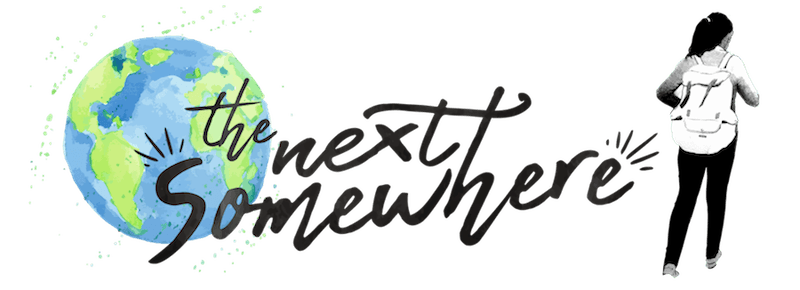

16 Books By Filipina Authors You Should Read
Learn more about the philippines and filipino culture through the stories of 16 filipina authors..
For the majority of my life, books have provided an instant escape whenever I wanted to travel to faraway places. However, the lack of representation on library and bookstore shelves left me feeling disconnected to stories with predominantly white characters and Westernized lived experiences. With the recent onslaught of Asian American/Pacific Islander hate crimes in the USA and Asian American and Pacific Islander Heritage Month on the horizon in May , I wanted to compile a reading list that not only highlights Asian literary excellence, but also amplifies the voices of primarily Filipina/x authors. The 16 books listed here are a return to roots, providing a sense of belonging to the marginalized and also help to decolonize the mind. All the Filipina authors featured reflect a variety of experiences: they are immigrants, migrant workers, first/second/third generation, biracial, (former) illegal aliens, albino, and LGBTQIA+ identifying, and many of these books are their literary debuts. A combination of personal narratives, educational text, and creative writing, these pieces touch upon themes of femininity, race, class, spirituality, privilege, beauty, and identity. Many of the suggested books have been written for a Filipino audience first and foremost, but also deepen understanding of Filipino culture and values among unfamiliar audiences. Special thanks to @pinaylit on Instagram for introducing me to many of these titles. From this large selection, you’ll find that not all immigrant stories are the same. Scroll through the whole list or click on the title of the book to jump to its synopsis:
Reading List
America Is Not The Heart – Elaine Castillo (Fiction, Contemporary)
In The Country – Mia Alvar (Fiction, Short Stories)
Arsenic And Adobo – Mia P. Manansala (Fiction, Cozy Mystery)
The Farm – Joanne Ramos (Science Fiction)
Once Upon A Sunset – Tif Marcelo (Fiction, Romance)
Something In Between – Melissa de la Cruz (Fiction, Young Adult)
When The Elephants Dance – Tess Uriza Hoelthe (Historical Fiction)
I Was Their American Dream – Malaka Gharib (Memoir, Graphic Novel)
Babaylan: Filipinos and The Call of the Indigenous – Leny Mendoza Strobel (Indigenous Studies)
Lola’s House: Filipino Women Living With War – M. Evelina Galang (History, Interviews)
The Body Papers – Grace Talusan (Memoir)
Malaya: Essays on Freedom – Cinelle Barnes (Memoir, Essays)
Fairest – Meredith Talusan (Memoir)
Somewhere In The Middle – Deborah Francisco Douglas (Memoir)
Trick Mirror: Reflections on Self-Delusion – Jia Tolentino (Essays)
Letters To A Young Brown Girl – Barbara Jane Reyes (Poetry)
FICTION BY FILIPINA AUTHORS
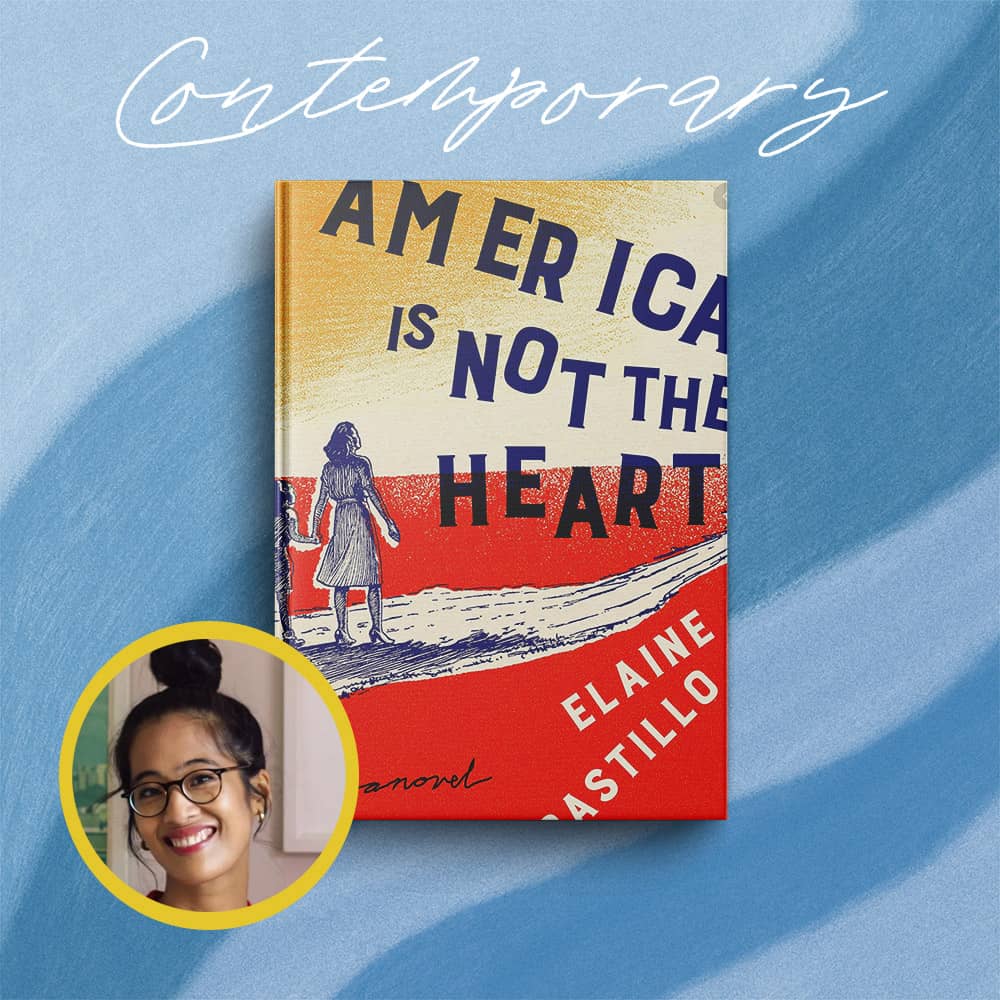
America Is Not The Heart
By elaine castillo.
Author Elaine Castillo presents the paradox of The American Dream through the family of protagonist, Hero De Vera. As a new immigrant to the USA housed by her beloved uncle, Pol, his wife Paz, and her young cousin Roni, Hero must find a way to reconcile her painful past in order to move forward with her life in America. Woven into this delicately-crafted family saga are untranslated Tagalog, Pangasinan, and Ilocano words, displaying all the hidden histories living inside each newcomer to the USA. The title of this novel is a spin on one of the first Filipino-American classics, America Is In The Heart by Carlos Bulosan.
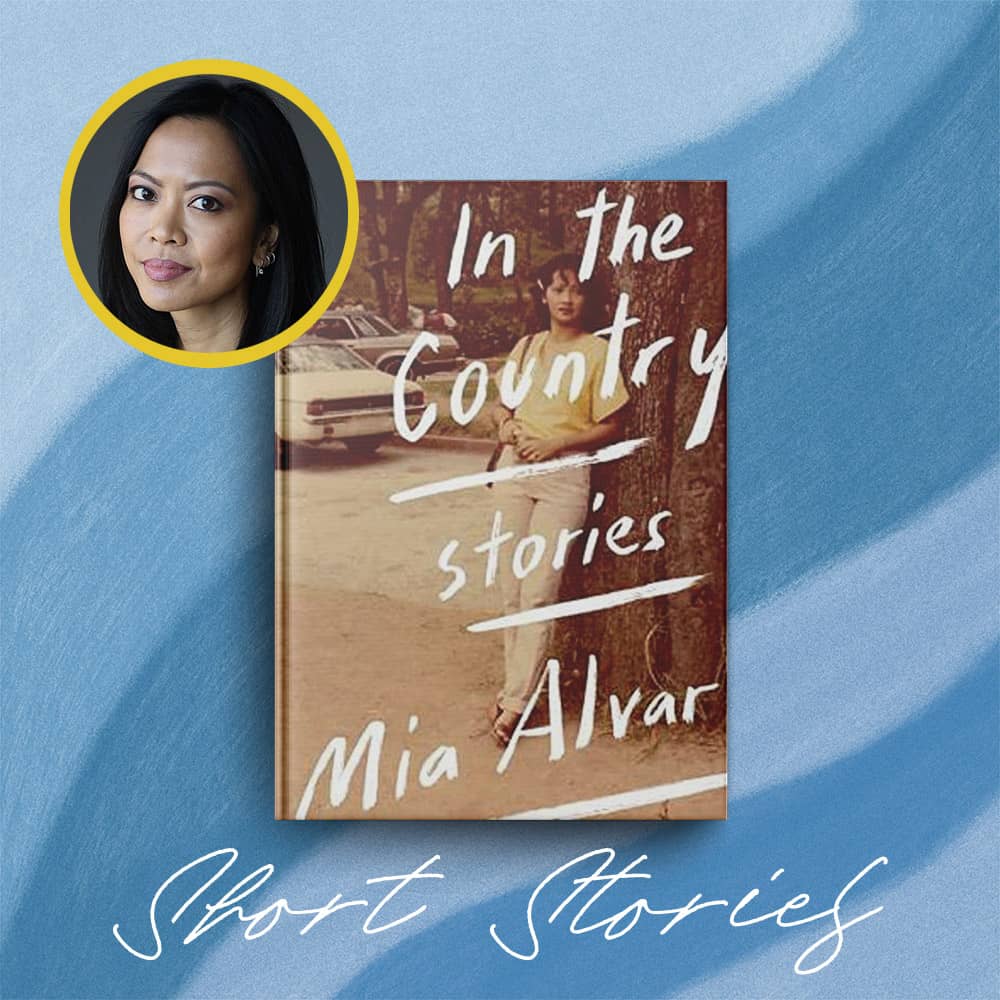
In The Country
By mia alvar.
In The Country is a stunning, lyrical work of fiction presented in the form of nine short stories. In 2016, Mia Alvar put contemporary Filipina authors on the map with her first published piece, giving voice to Filipino men and women in the diaspora. Her short stories about emigrants, wanderers, exiles, and expats across the globe expertly distinguishes the Philippine experience for each protagonist, while upholding the universal likeness of all Filipinos around the world and “in the country.” The tales of a migrant worker in Saudi Arabia, the sighting of a “ White Lady ,” and a New York pharmacist smuggling drugs to his sickly father in Manila will illicit nostalgia for many Filipinos looking for glimpses of home.
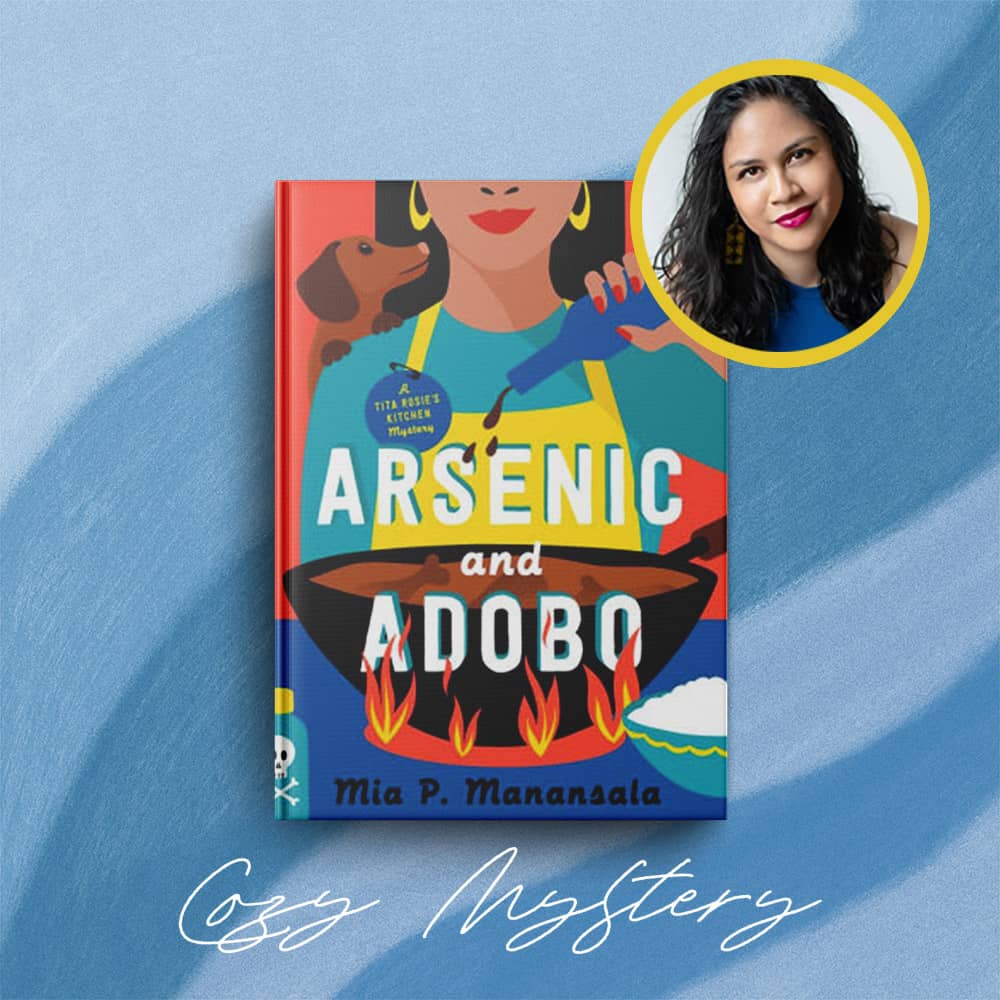
Arsenic and Adobo
By mia p. manansala.
Out this May and available for pre-order, Adobo and Arsenic, the first installment in Tita Rosie’s Kitchen Mysteries is layered with romance, comedy, murder, and all the servings of Filipino food you could want in one light, enjoyable read. This cozy mystery (ie. a mystery sub-genre involving an amateur female sleuth) will have your mouth watering as you try to solve this classic case of “whodunnnit” with heroine, Lila Macapagal, being framed for the murder of her ex-boyfriend, a food critic, all while trying to save her Tita Rosie’s restaurant from closure.

by Joanne Ramos
A dystopian novel about Golden Oaks, a luxury retreat nestled in New York’s posh Hudson Valley, with every amenity under the sun provided to its residents, including a large pay-off. For Jane, an immigrant from the Philippines, the trade-off of being a surrogate mother for nine months at Golden Oaks seems too good of an opportunity to pass up. However, life on “The Farm” as Jane soon finds out, is less idyllic than it seems. A thought-provoking exploration of economic disparity, motherhood, and ethics.
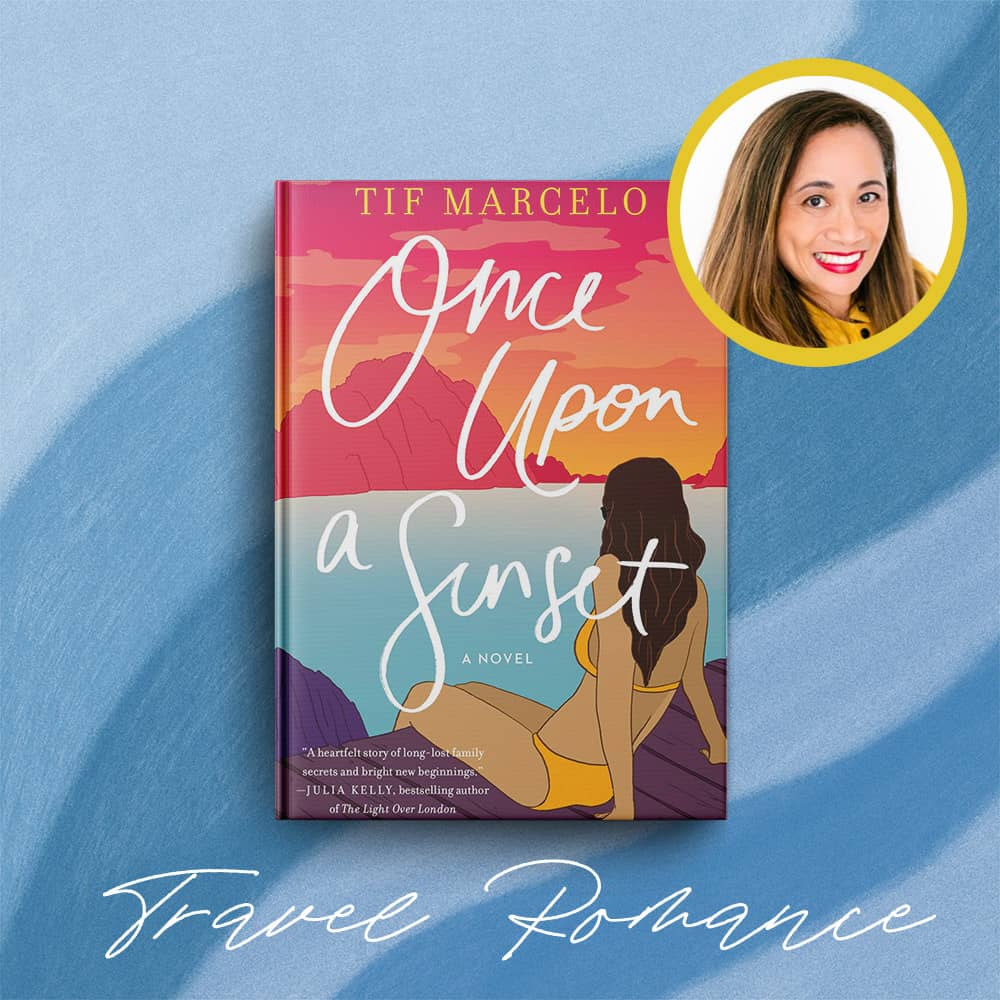
Once Upon a Sunset
By tif marcelo.
A high-powered OB/GYN, Diana Gallagher-Cary, finds herself at a crossroads after a series of unfortunate events in her life. But when she uncovers a box of letters from her supposedly dead grandfather to her grandmother in their youth, she sojourns to the Philippines to reconnect with her long-lost family members. Along the way, she contends with her identity, her definition of family, while finding love in the unlikeliest of places.

Something in Between
By melissa de la cruz.
One of the USA’s most celebrated Filipina authors, Melissa de la Cruz is back with a young adult story about high schooler, Jasmine de los Santos. Jasmine has met every expectation laid out by her hardworking Filipino parents and with a full college scholarship within reach, everything is perfect. But in the shocking wake of her parents’ expired immigration status, life as Jasmine knows it comes to a startling halt. With the threat of deportation looming overhead, Jasmine rebels to make time for the things she never experienced as an adolescent fixated on the future.
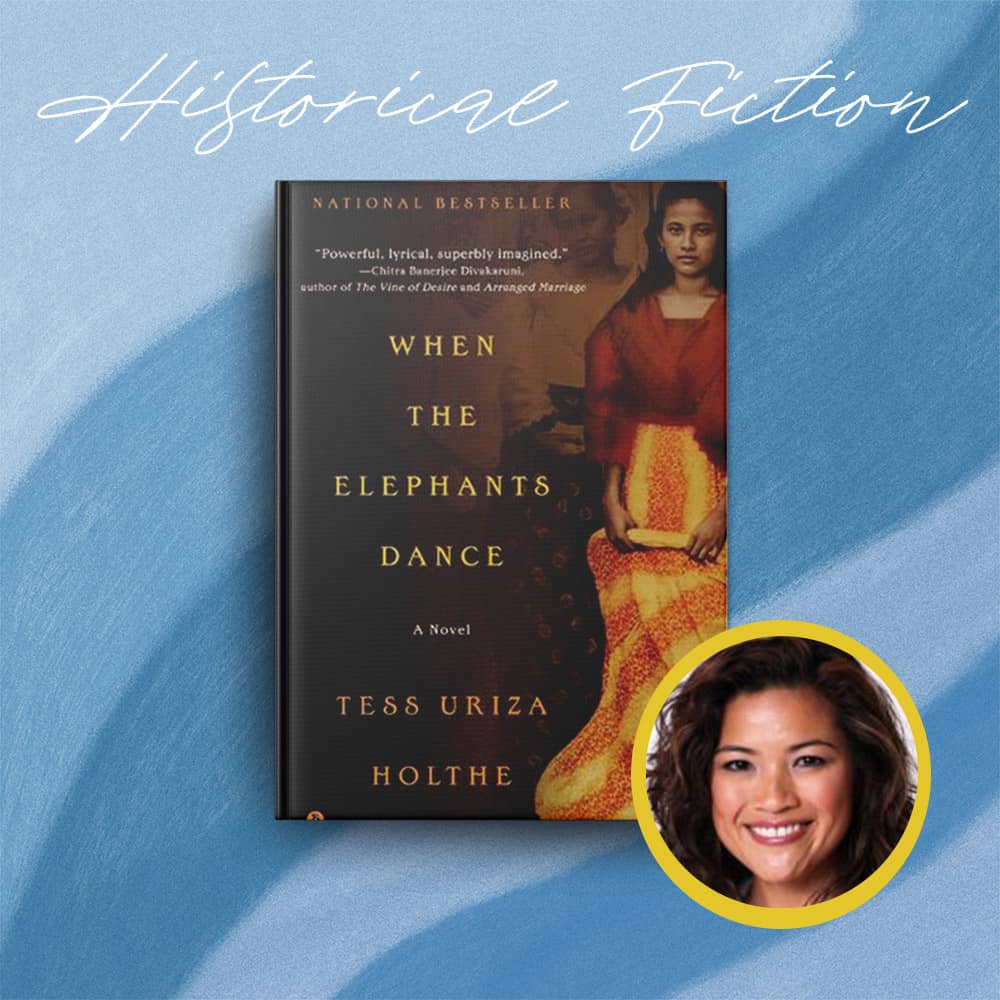
When The Elephants Dance
By tess uriza holthe.
Set in World War II Philippines, the fictional Karangalan family hunker down in their cellar with neighbors, consoling each other with stories of their homeland as the war rages overhead. These stories of family and community blend folklore, history, and magic, alluding to the mystical and comforting quality of storytelling as a means of survival and a tool to inspire hope in a time of devastation and violence. Trigger warning: rape, wartime atrocities.
NONFICTION BY FILIPINA AUTHORS

I Was Their American Dream
By malaka gharib.
A heartwarming debut from NPR correspondent and cartoonist, Malaka Gharib, as she captures her complex upbringing as a Filipino-Egyptian growing up in the USA. This coming-of-age-story is an endearing entry among the collection of modern immigrant stories, exploring common motifs about identity, culture, and belonging, all through an illustrated, interactive storyline. I was especially fond of Malaka’s presentation on the code-switching skills individuals with straddled identities must master in order to accommodate their dueling realities.

Babaylan: Filipinos and The Call of the Indigenous
Edited by leny mendoza strobel.
In pre-colonial Philippines, Babaylans communed with spirits of nature and the world beyond. These revered shamans were almost always women or feminized men, becoming a modern symbol for non-conforming gender. In this anthology, decolonizing scholars, artists, poets, cultural theorists, and anthropologists offer insights as to how to call back the healing spirit and wisdom of the Babayalan. The tome is rich in spiritual and cultural capital and provides a framework to tap into Kapwa psychology, the fundamental Filipino belief that all Filipinos share kinship as human beings.

Lola’s House: Filipino Women Living With War
By m. evelina galang.
A heartbreaking history lesson on the violence perpetuated by the Japanese in The Philippines during World War II. Galang recounts the sorrows of sixteen surviving Filipino “comfort women” who were among more than one thousand Filipinas kidnapped, tortured, and defiled by the Imperial Japanese Army during their Philippine occupation. Lola’s House illuminates with sensitivity, the legacy of wartime horror and the impossible courage it took to survive. Their testimonies are huwes de kutsilyo —justice by knife. By reading this book, you are a witness to both the trauma and resilience endured by the female body. Trigger warning: rape, wartime atrocities.
The Body Papers
By grace talusan.
Winner of The Restless Books Prize for New Immigrant Writing, The Body Papers is a written and visual catalog of Grace Talusan’s life in suburban New England, with family photos, medical records, and government papers to supplement her recollections. As a young brown child in majority white school, Grace grappled with racism, as well as sexual abuse at the hands of her grandfather. In her teenage years, she learns of the turbulence of her family’ legal status in the USA. The trauma of her childhood and adolescence take root in her body in the form of cancer, forcing Grace to explore invasive surgeries as a preventative measure. Amid all the suffering, Grace finds a way to persevere and eventually finds love and catharsis in a return to the homeland. Trigger warning: childhood sexual abuse, animal cruelty, life-threatening illness.
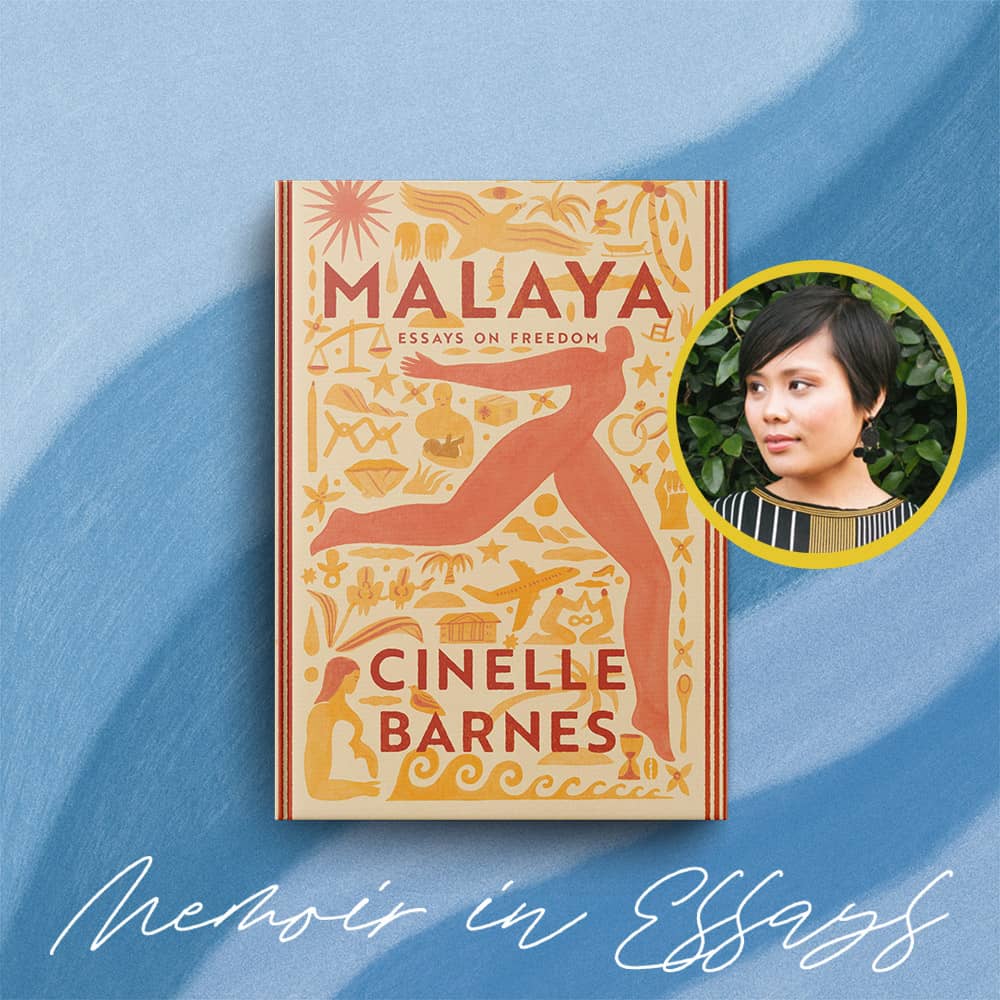
Malaya: Essays on Freedom
By cinelle barnes.
A rich memoir declaring the triumphs of Cinelle Barnes who immigrated to New York illegally and the challenges she encountered along the way. From under-the-table jobs evading authorities, to finding love with a Southern white man; from motherhood without a support system, to the PTSD she faced from her compounded experiences, these essays are about self-preservation and the resolve to overcome adversity against all odds as a brown Filipino woman in a white American world.

by Meredith Talusan
Fairest stands apart from the other memoirs by Filipina authors on this reading list as it explores intersectionality and creates dialogue around colorism, privilege, gender, race, and sexuality. Meredith was born as an albino male in the Philippines, being treated like a spectacle most of her childhood, but was given the opportunity to immigrate to the USA as a teen. She immediately is perceived as “white” upon arrival and navigates new waters of acceptance among her American peers while battling with her shifting gender boundaries, transitioning from male to female in her college years. A formidable voice providing refreshing nuance to the immigrant narrative.
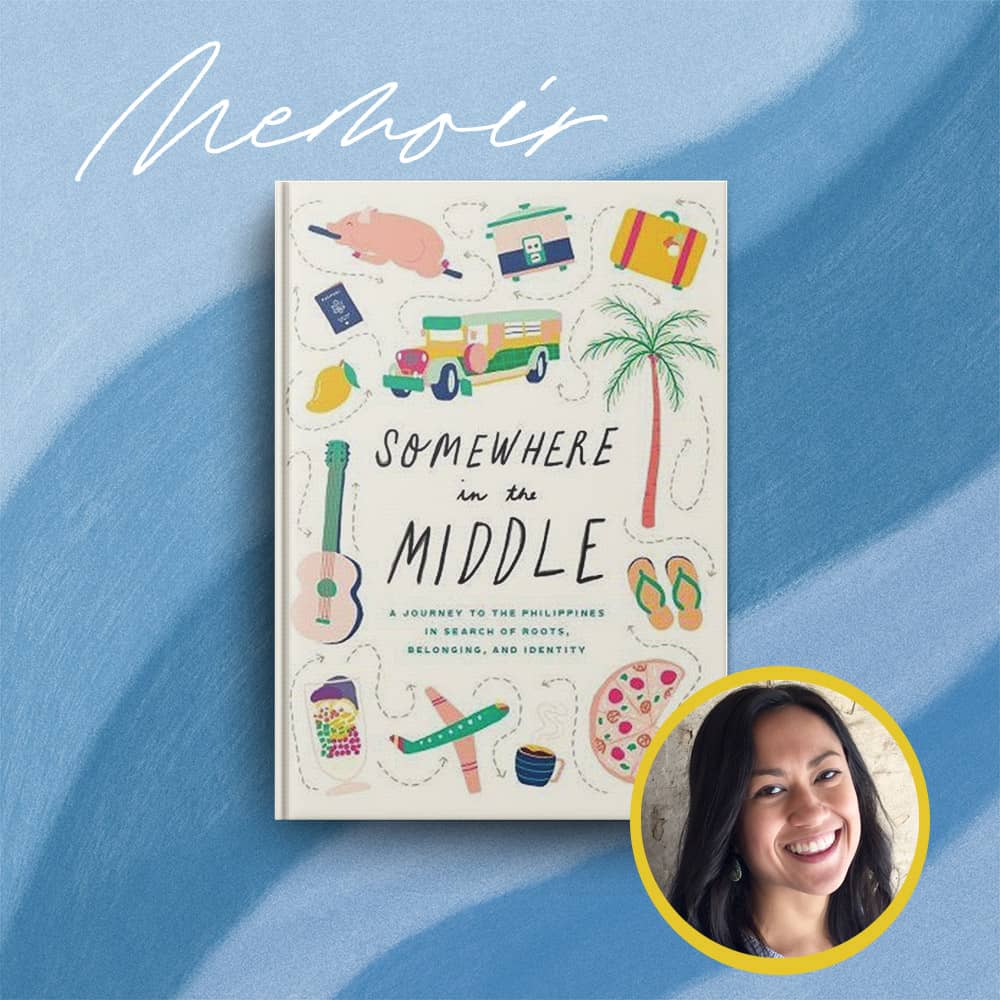
Somewhere in the Middle
By deborah francisco douglas.
Growing up biracially, Deborah Francisco Douglas wanted to know more about her Filipino heritage. So on the fateful day she was assigned to the Philippines as a Peace Corps Volunteer, she packed up her bags hurriedly to connect with her Filipino side. But what welcomes Douglas in the small mountain town of Baguio City is a humbling lesson on belonging, that community is not an automatic but something earned. A homecoming tale to a home never visited, but always residing within, Douglas reflects on the ordinary ways we arrive to inclusion and inspires those looking to volunteer abroad with her descriptive account on her time overseas.
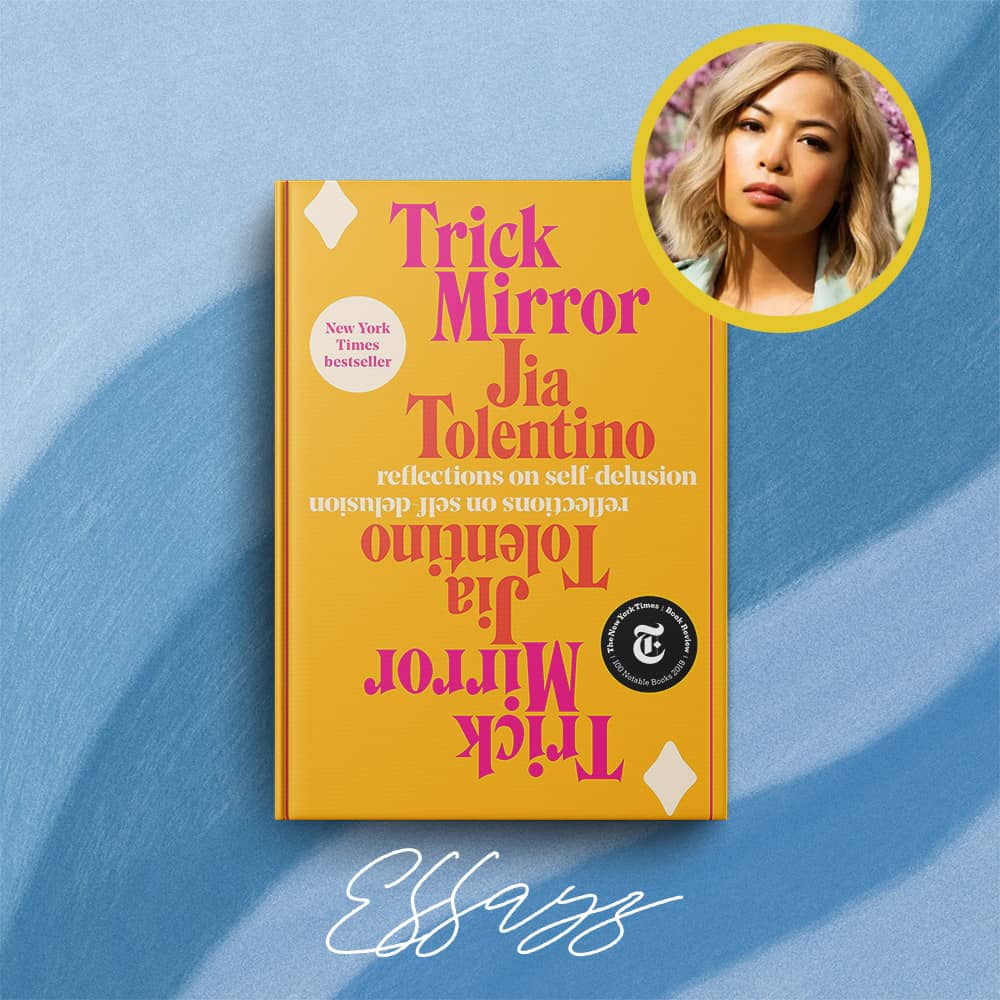
Trick Mirror: Reflections on Self-Delusion
By jia tolentino.
Hailed one of 2020’s Best Books of The Year by The New York Times Book Review, Jia Tolentino’s Trick Mirror is a provocative social commentary running adjacent to a psychiatric evaluation, as Jia explores her own psyche in relation to the climate of the times. Her cerebral prose on pop culture themes such the punitive nature of optimization, the glorification of scammers as an American ideal, and our (de)construction of self on the internet, requires critical analysis from readers without compromising the entertainment factor. Trigger warning: rape.
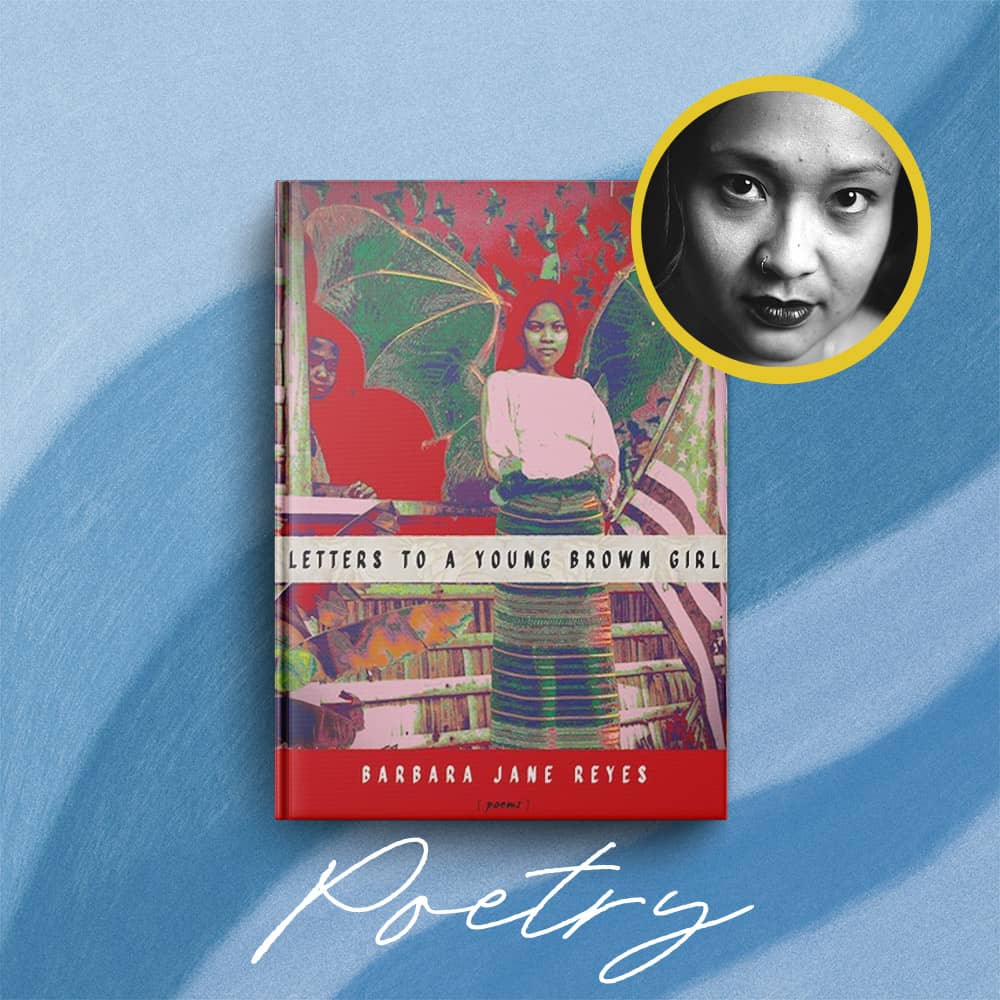
Letters To A Young Brown Girl
By barbara jane reyes.
A riveting collection of poems that speak to the anger and difficulty of being a young brown girl, directed towards non-BIPOCs who have contributed to the harmful degradation of brown peoples’ worth. Reyes is unshakeable, spilling verses that read like thoughts, capturing the oppression of brown girls with a graceful balance of ferocity and empathy. She is raw and unabashed as she unpacks all her indignation against “othering,” but simultaneously, gives necessary affirmations for brown beauty in her reproach of western beauty standards.
Join the Filipina Authors Book Club
If you’re looking to build community and are seeking accountability in your reading journey as a Filipino/a/x reader or ally, join the Filipina Authors Book Club on Facebook ! With over 600 members, monthly discussions, and engaging community threads, this is a safe space for those interested in learning about Filipino culture without a patriarchial POV.
DISCLAIMER: Please support local, independent book retailers at this time. We invite you to purchase your books from independent Filipino books retailer, Arkipelago Books , or Bookshop.org , the largest inventory of independent bookstores..
More Reading Lists:
🚩 Best Travel Books of 2020
🚩 Best Travel Books of 2019
🚩 Best Travel Books of Summer 2017
🚩 Best Books of 2016
🚩 Best Travel Books of Summer 2016
👉 If you have any other Filipina authors I should know about, I’d love to hear your recommendations in the comments section!
Give me a shout-out on Pinterest pretty please?
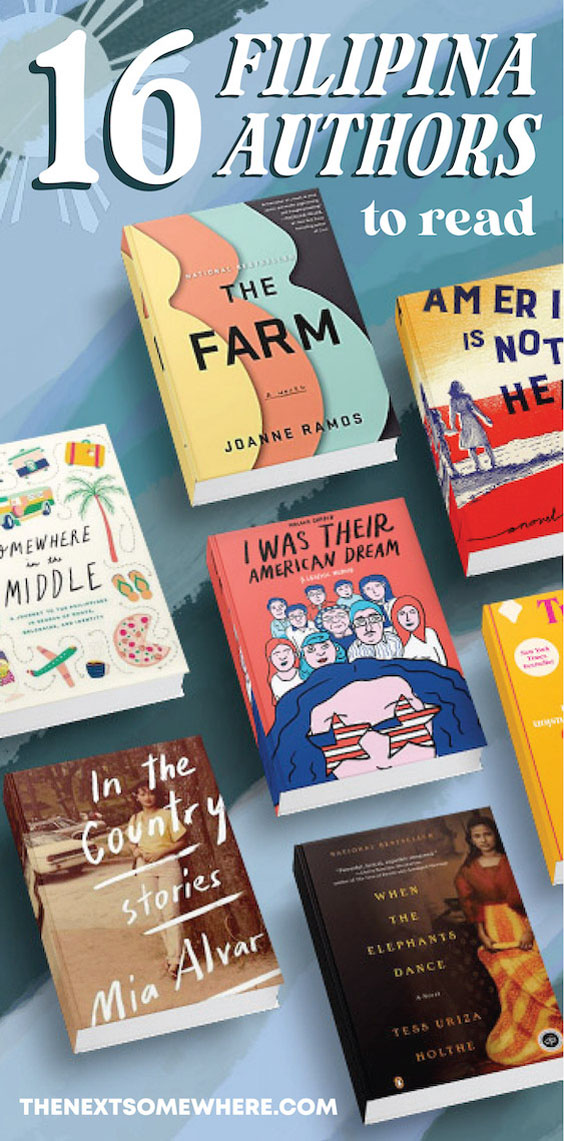
previous post
Millette Stambaugh
Filipina-American Millette Stambaugh is a thirty-something former expat who has traded her nomadic ways for Philadelphia living. Corporate worker by day, content creator by night, Millette specializes in visual storytelling and joyful journeys and wants to help others find their "next somewheres." Follow her escapades on Instagram, Youtube, and Tiktok @thenextsomewhere.
Related Posts
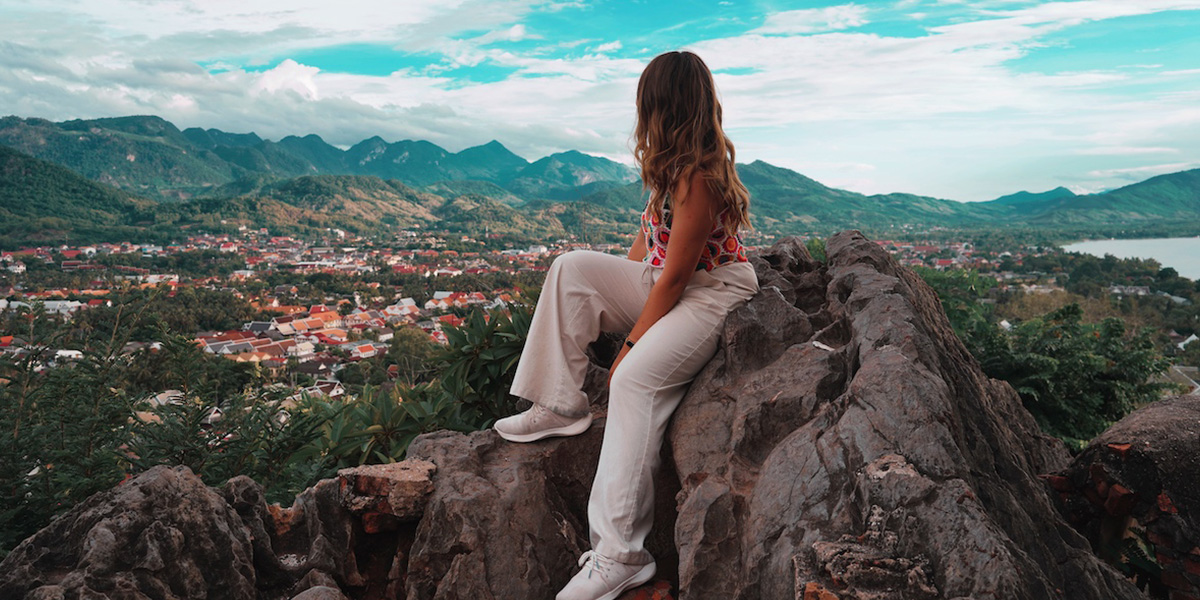
Top Five Things to Do in Luang Prabang, Laos
The best travel books of 2020.

Unique Things to Do and See in Kerala
Thank you SO much for posting this! I look forward to what we choose next within the Book Club, and am ecstatic that there are so many books to look forward to reading, even if they’re not chosen!
My absolute pleasure! Loved seeing the wealth of reads out there but thinking that there still could be more. I hope you get to read the books we don’t end up choosing regardless 🙂
post a comment cancel reply
Save my name, email, and website in this browser for the next time I comment.
You are using an outdated browser. Please upgrade your browser to improve your experience.
- What She Wants
- The Directory
- The Noble Man
- Food & Drink
- Arts & Entertainment
- Movies & TV
- Books & Art
- Motorcycles
- Notes & Essays
- What I've Learned
- Health & Fitness
- Sex & Relationships
- Terms of Use
- Privacy Policy
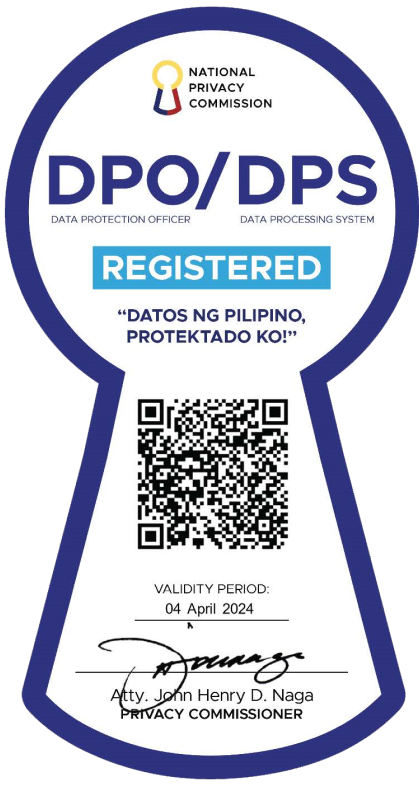
NPC Seal of Registration
Esquire has been granted the NPC Seal of Registration in recognition of the successful registration of its DPO and DPS
Our 36 Favorite Filipino Books of 2022

Decolonizing reading lists with titles penned by some of the most exciting Filipino authors here and abroad right now. From poetry, short stories, and essay collections to memoirs, comics, and novels, these works have been some of our favorite reads from the past year.
Pieces like these show us the most refreshing contemporary Filipino voices, exploring how such writers have reclaimed and even elevated languages. Each of them addresses a wide range of subjects—reflecting on the personal, political, cultural, etc.—that are as affecting as they are timely.
The books on the list come in no particular order, except for, say, some subconscious biases we may have had along the way. It's going to feel random and chaotic because, quite frankly, it is random and chaotic.
1| Yñiga by Glenn Diaz
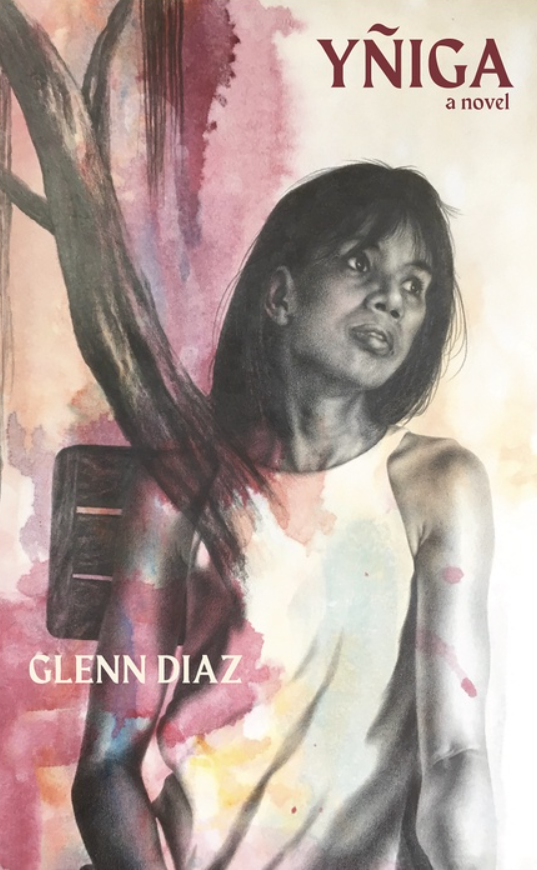
Publisher: Ateneo de Manila University Press
Shortlisted for the 2020 Novel Prize, Glenn Diaz's latest novel, Yñiga , follows the life of Yñiga Calinauan, who finds her life upended when a retired army general wanted for the murder of peasants and activists in the countryside is captured across the street from her home. She returns to a small fishing town in hopes of regaining the quiet life she lost. Here, the terror she looks to escape follows her as she reckons with the "forest of memory" that haunts her family.
2| Joy: A Novel by Angelo R. Lacuesta

Publisher: Penguin Random House Southeast Asia
Multi-hyphenated fictionist (and Esquire Philippines editor-at-large) Angelo R. Lacuesta beautifully marries memory and intimacy with his first novel, Joy . The book revolves around adman Lucas Letreto, who receives an unexpected email from his absentee father, renaissance man Ariston Letreto. Our protagonist is forced to confront longing, identity, connection, and the lives of contemporary Filipinos scattered across space and time.
3| I was the President's Mistress!! by Miguel Syjuco
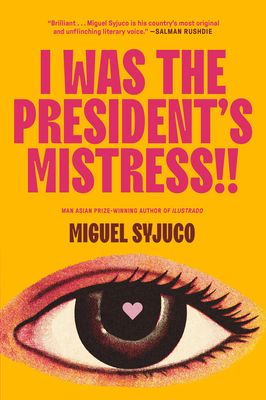
Publisher: Farrar, Straus and Giroux
Winner of the Man Asian Literary Prize for Ilustrado , Miguel Syjuco is back with this hilariously insightful satire about power, sex, and corruption. Equal parts protest and confession, this book has us learning of Vita Nova, a mistress of the country's conservative president, who faces impeachment. She bares all in this tell-all memoir in the most audacious of ways. We hear the animate of 13 voices, representing the various cross-sections of a conflicted people.
4| The End of All Skies by Vincent C. Sales
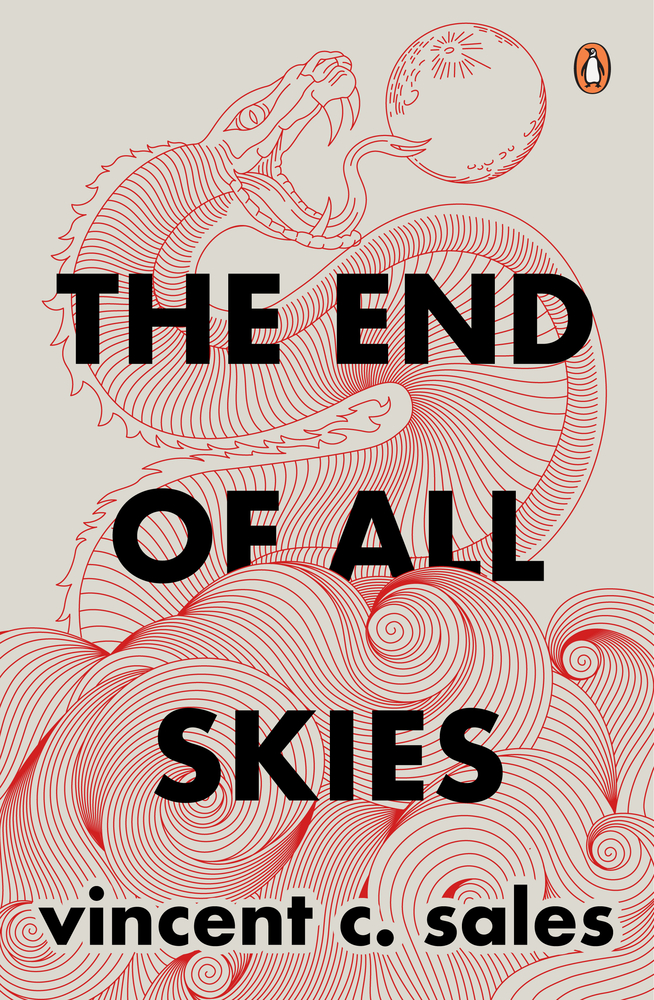
Publisher: Penguin Random House Southeast Asia
Vince C. Sales' The End of All Skies serves up an elaborate piece of contemporary fantasy based on Filipino mythology. We get to know about the city of Sun Girna Ginar, once ruled by a tyrant of a Sultan. The book catches the final days of the city's glory, as the powerless in the city rise up against gods and monsters. Here, we learn of its great fall through the perspectives of a hunter, a thief, and an exiled datu longing for atonement.
5| Bibliolepsy by Gina Apostol
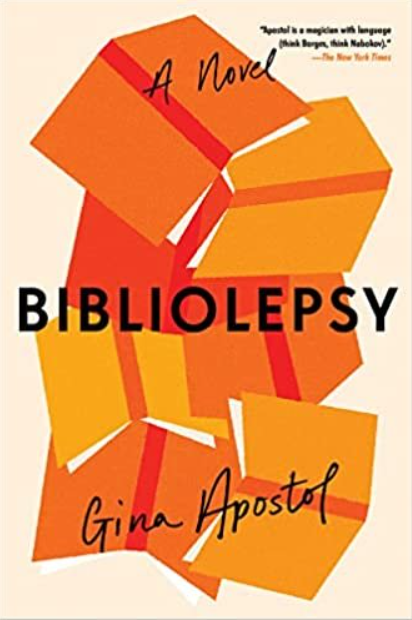
Publisher: Soho Press
This explosive coming-of-age tale is brought to us by the multi-awarded Gina Apostol. Bibliolepsy is a Philippine National Book Award-winning book that weaves both historical, personal, and literary memory. It's an ode to modern-day Filipino literature and the fallacies of the revolution through the eyes of Primi Peregrino, who is caught in the middle of the brutal rule of Ferdinand Marcos. Indulgent, sexy, and spiritual, this book gives us an unorthodox take on the events that brought down the dictatorship.
6| Maqueda: mga usipon mula lawod hanggang baybayon by Nap I. Arcilla III

Publisher: Balangay Books
The recipient of the 22nd Madrigal Gonzalez Best First Book Award in Filipino, Nap I. Arcilla III's Maqueda: mga usipon mula lawod hanggang baybayon is a collection of short stories about the sea and the misfortunes of the people who call it home. We get a careful dissection of identity, language, consciousness, and storytelling in Arcilla's distinctive style, set across various regional tragedies in the Philippines.
7| Modus by Conchitina R. Cruz

Publisher: Paper Trails Projects
Cleverly sharp and compelling as ever, the 12 poems in Conchitina R. Cruz's Modus perhaps isn't the best introduction to the poet's work. It nevertheless espouses the best of what we've come to expect of Cruz: layers of rhetoric, scanty language, her textbook wit. The poems can be considered a critique of the genre itself in a sense. Classic Chingbee in form and structure.
8| How to Read Now by Elaine Castillo

Publisher: Viking
As one of the most dynamic young writers today, Elaine Castillo gives us another brilliant wake-up call with How to Read Now. The collection of essays takes us through the politics and ethics of reading. They also allow us to elevate the literary discourse by exposing the relationship between readers, writers, and the art form. Books as empathy machines? Castillo gives a strong criticism of such.
9| Bayan ng mga Bangkay by Chuckberry J. Pascual
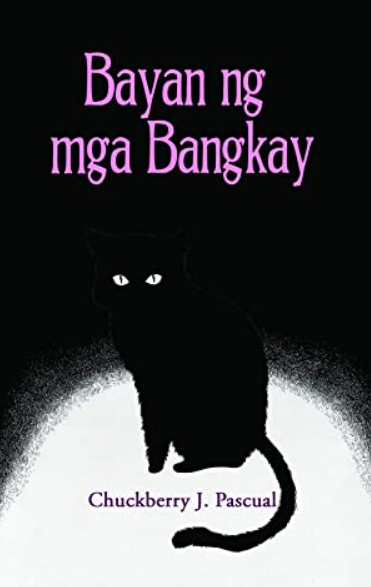
Publisher: University of the Philippines Press
Chuckberry J. Pascual's Bayan ng mga Bangkay is an inquiry of sorts into our ideas about crime set in contemporary times. The collection of short stories gives us a grim view of the social realities in the Philippines. It captures the individual in social limbo, caught up in the cultural violence which we've normalized in popular culture, social media, politics, and the COVID-19 lockdown.
10| How to Stand Up to a Dictator: The Fight for Our Future by Maria Ressa
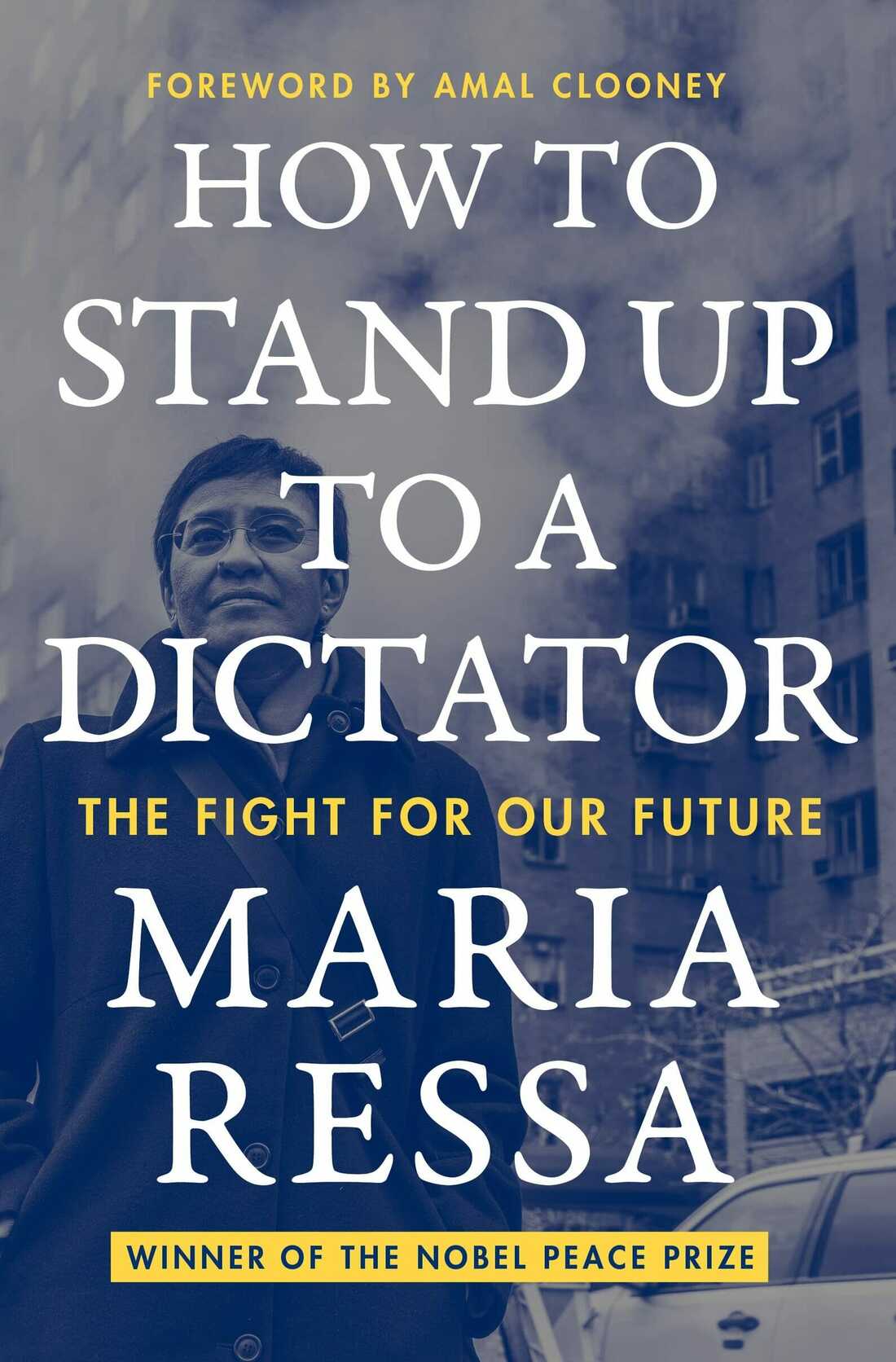
Publisher: Harper
In Nobel Peace Prize winner Maria Ressa's How to Stand Up to a Dictator: The Fight for Our Future , we learn about her journey into the heart of fascism and authoritarianism. The memoir chronicles Ressa's own experiences against disinformation, trolls, and more. There are also insights and advice from her coverage of the War on Drugs campaign, Brexit, Russian and Chinese cyber-warfare, and the dangers of social media monopolies, among others.
11| Isang Dekadang Resty by Jov Ortua Almero
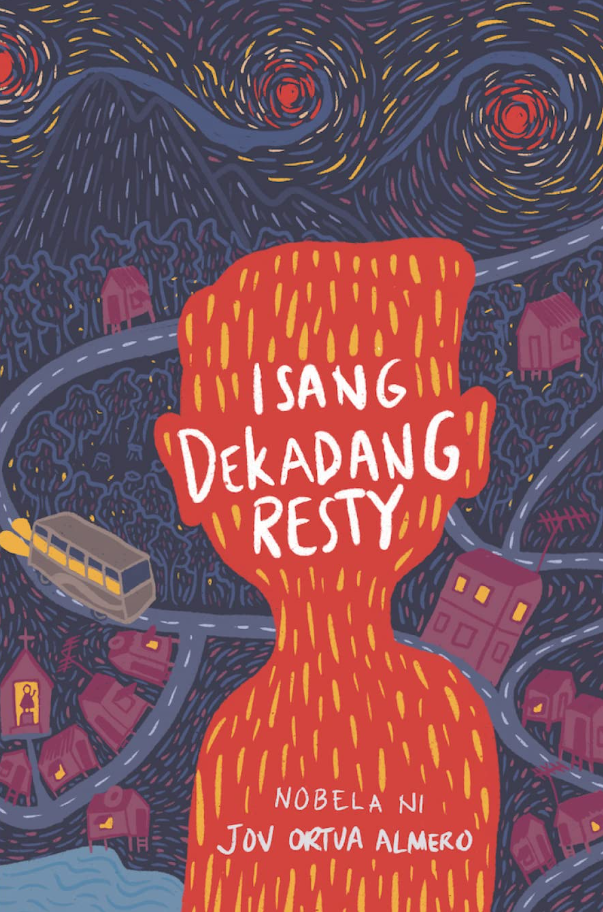
In Isang Dekadang Resty , author Jov Ortua Almero's coming-of-age story tells the exploits of a boy named Rusty from the age of 6 to 16. Resty, who is the only child of an impoverished family in the province, takes us into the deeper struggles of life in rural Philippines. In voyeuristic fashion, readers get to witness the great unraveling of Resty's social consciousness.
12| Brief Histories by Don Jaucian

Publisher: EVERYTHING'S FINE
CNN Philippines Features Director Don Jaucian's Brief Histories is a deeply personal and poignant criticism of the disenfranchisement of the LGBTQIA+ community. The collection of essays tells the stories of his own experiences as a member of the community growing up in his hometown Olangapo. It's a thoughtful analysis on identity, free spaces, and the burden of a queer person in Filipino society.
13| In the Line of Fire: Lectures by Joel Pablo Salud
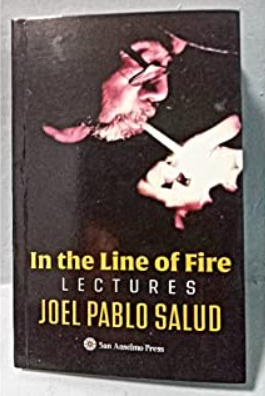
Publisher: San Anselmo Publications, Inc.
Hard-hitting journalist Joel Pablo Salud offers a collection of talks and lectures he delivered in colleges and universities over the course of the past six years. With In The Line of Fire Lectures , the former editor-in-chief of the Philippines Graphic talks of subject matters as relevant as ever to the practice: journalism ethics and principles, the social responsibilities of journalists, and literature in an age of increased polarization.
14| How to Grieve by Jade Mark Capiñanes
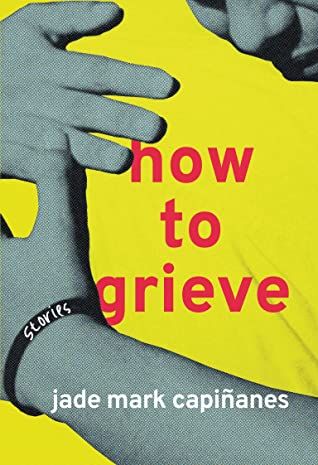
A known satirist and essayist, Palanca Award winner Jade Mark Capiñanes' new collection of short stories captures the quirks, allegories, and nuances of grieving. There are 19 short stories talking of post-breakup kwek-kwek , an old flame's toothbrush, and the power of Jolly spaghetti, among others. Through first- and third-person narratives, the author shows us grieving as a farce.
15| Riverrun by Danton Remoto

Publisher: Anvil Publishing Inc.
Danton Remoto's novel Riverrun is a coming-of-age piece of literary fiction for every reader. It has us following the story of Danilo Cruz, a young gay man growing up in the middle of a dictatorship. It's interestingly shaped as a memoir, with vignettes, flash fiction, excerpts from poems, and the like. From the places he goes to to his attractions to the different men in his life, Danilo learns to transcend tolerance and move to a place of radical acceptance of his own identity.
16| Holding on by Sophia N. Lee
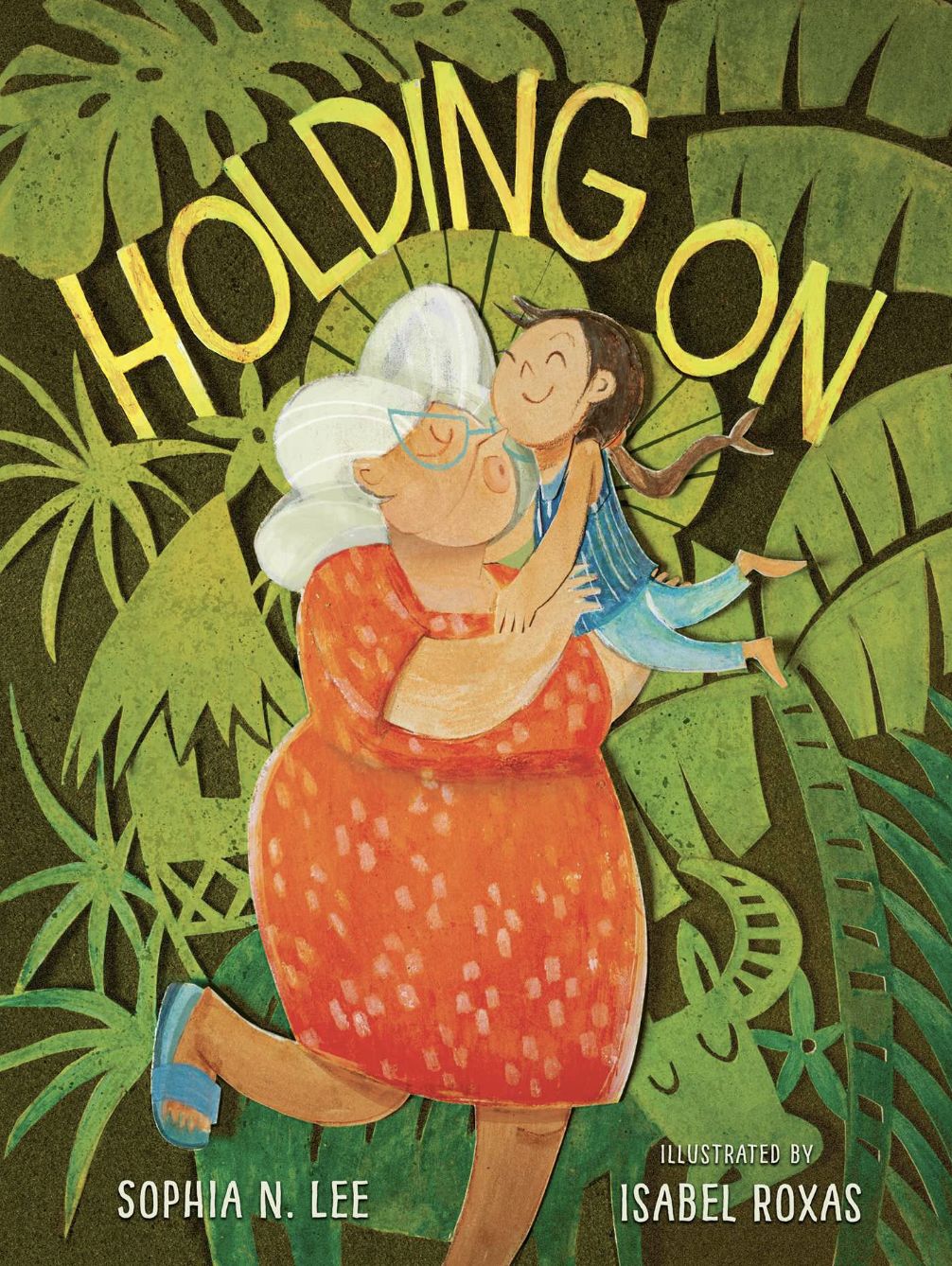
Publisher: Simon & Schuster
As the first Filipino picture book by Simon & Schuster, Sophia N. Lee's Holding On is a heartwarming novel about a young Filipino girl grappling with her grandmother's fading memory. Lee uses music as an instrument for remembering, as she recounts the singing that came to define her grandma's house. From songs by Sammy Davis Jr. and Dean Martin to Nora Aunor, Basil Valdez, and more, these pieces of music become a way to endure and connect.
17| A Tiny Upward Shove by Melissa Chadburn

Publisher: Farrar, Straus and Giroux
A Tiny Upward Shove is as stunning as a debut novel can get. Bordering on magical realism, this ambitious novel offers a glimpse into the wild and peculiar life of Marina Salles. The story is anchored on Chadburn's own understanding of her heritage. The protagonist relies on her grandmother's old Filipino folklore, with the aswang at the center. Her death (not really a spoiler) gives us a closer look at the transformative nature of connection, loss, survival, and justice.
18| Tinagong Dagat: Kuwento ng mga Batang Mangingisda by Riza G. Babaran
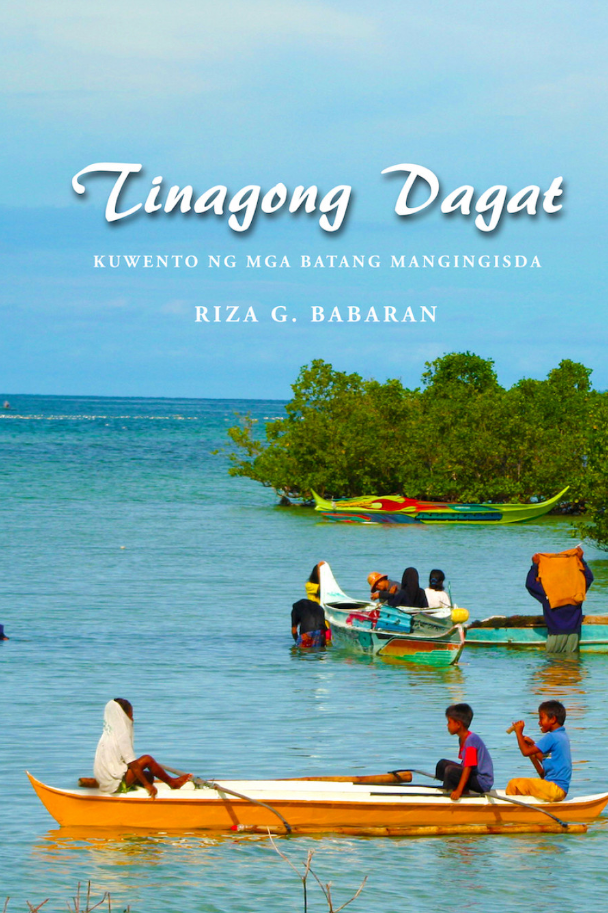
Another finalist of the Madrigal Gonzalez First Book Award, Tinagong Dagat: Kuwento ng mga Batang Mangingisda by Riza G. Babaran is a compilation of 10 stories about young fisherfolk around the Philippines. The author herself is a graduate of BS Fisheries from the University of the Philippines Visayas, and was inspired by the stories of young boys and girls in coastal villages. Each child, despite being swept up in the seas of poverty, defends their right to dream.
The Best Books to Elevate Your Reading List in 2020
22 of the Best Books for Men
19| Lahat ng Nag-aangas ay Inaagnas by Paolo Tiausas
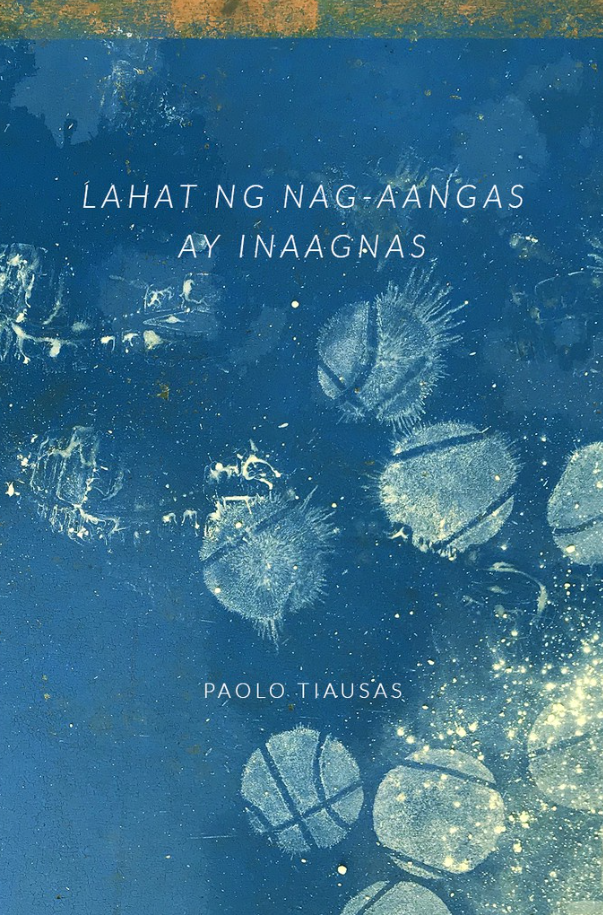
Publisher: Self-Published
Paolo Tiausas' Lahat ng Nag-aangas ay Inaagnas is a poetry collection that distorts the notions of what it means to be a man and other concepts of male angst. Bordering on the abstract, it challenges our conventional knowledge of male aggression and toxic masculinity. The National Book Awards Nominee for Poetry in Filipino criticizes the failures of manhood through personal, social, and historical reconciliation.
20| Sapantahang Wika by Virgilio S. Almario
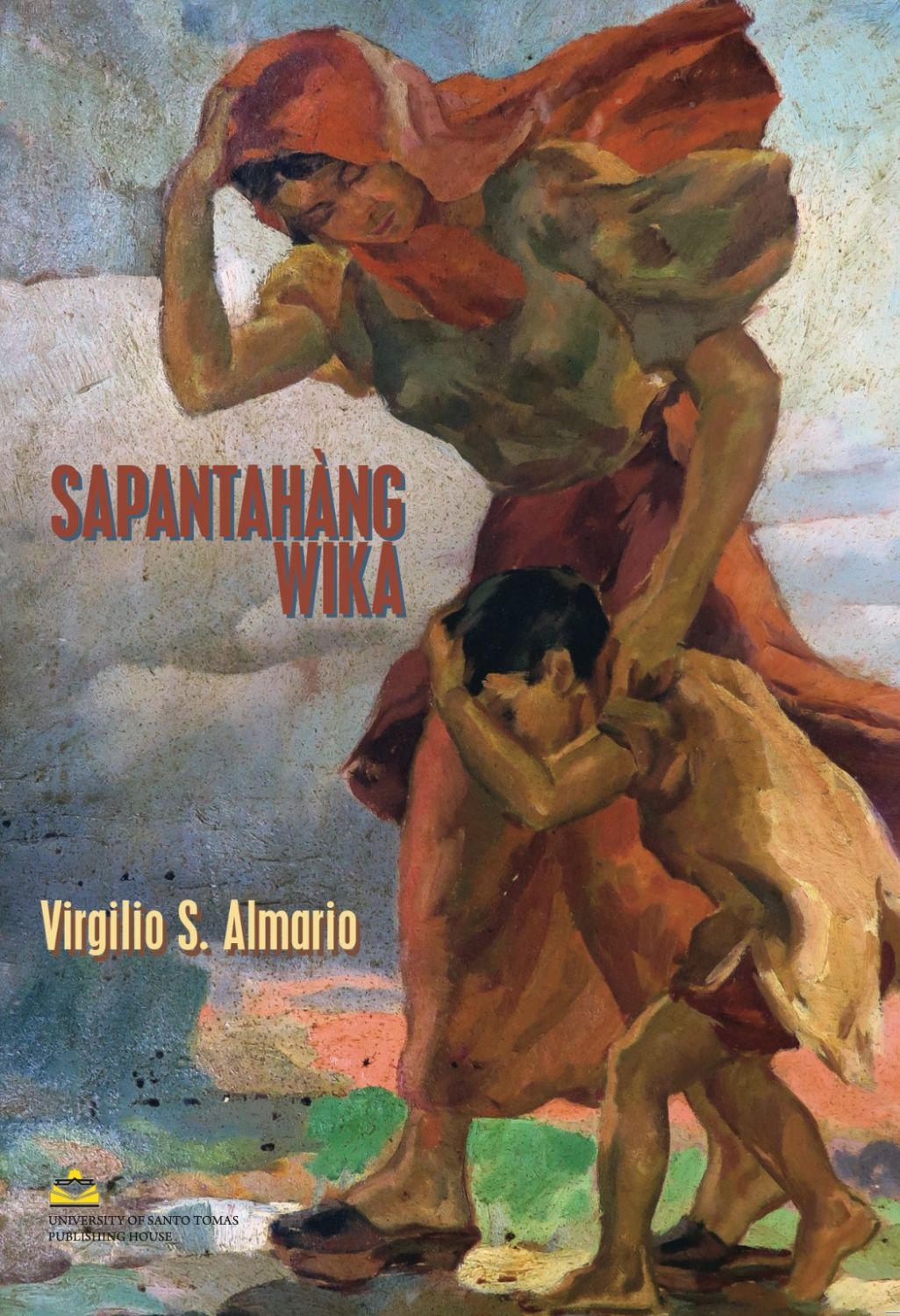
Publisher: UST Publishing House
When we think of National Artist for Literature Virgilio S. Almario, we think of a poet who has long championed the power our languages. His latest book Sapantahang Wika is no different. The renowned critic, translator, and editor who is one of our greatest modernists picks apart the intersecting narratives of our local literature, culture, and history the way only Rio Alma can.
21| Homicide and Halo-Halo by Mia P. Manansala
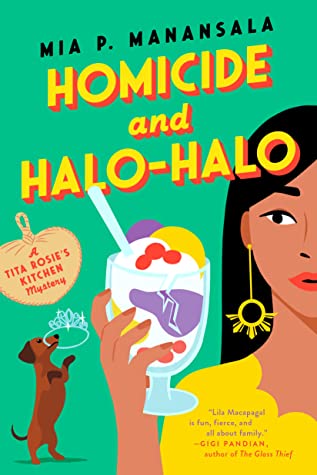
Publisher: Berkley Books
The second installment of Mia P. Manansala's Tita Rosie's Kitchen mystery series, Homicide and Halo-Halo is a deliciously cozy read, to say the least. We get acquainted with our feisty protagonist Lila Macapagal a few months after the conclusion of Arsenic and Adobo . While she's recovering from the harrowing events that transpired, she faces a steep mental block and a new mystery: the head judge of the town's Miss Teen Shady Palms Beauty Pageant, which Lila had won a while back, has apparently been murdered. The main suspect? Her cousin-slash-rival, Bernadette.
22| Brown Girls by Daphne Palasi Andreades
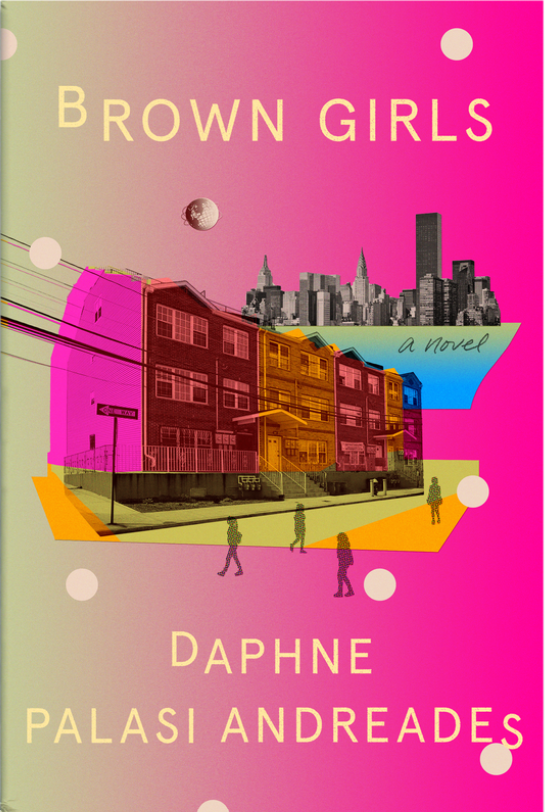
Publisher: Random House
A New York Times Editor's Choice , Brown Girls by Daphne Palasi Andreades is a portrait of diaspora and collective memory set in New York. Wildly expressive and musical in her prose, Andreades' daring debut novel is endearingly brash, as it follows a group of women growing up in the outer borough of New York City. Here, she explores her ideas about class analysis, race, immigrant culture, and marginalization in America.
23| Ang mga iniiwan ng tubig by Jason Tabinas
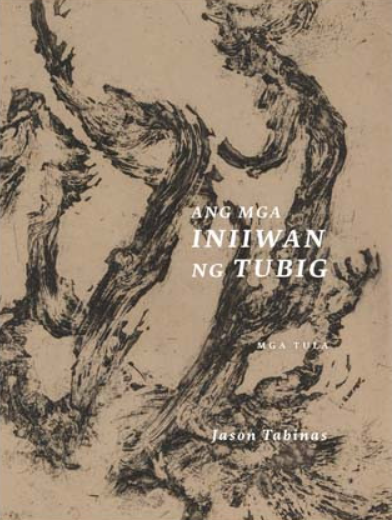
Publisher: Ateneo de Manila University Press
Jason Tabinas comes into his own with Ang mga iniiwan ng tubig . We get poems about life in the countryside, set in the town of Bula, Camarines Sur. The collection is a portrayal of the personal and collective anxieties and devastation that comes with the rain, storm, floods, and heat.
24| Nothing Deep by Richard Bolisay

Richard Bolisay's second collection of essays is another profound meditation on Philippine cinema. In Nothing Deep , the film critic talks to various personalities in the industry, from stars and directors on set to beloved screen writers and filmmakers. He talks of vignettes of Filipino film in the 2010s, as well. It's a collection that puts together critique, nostalgia, and storytelling in the most beautiful of ways.
25| Duty Ka Ba? Komiks by Tepai Pascual

Publisher: Avenida Publishing House
See, we need something light from time to time as a palate cleanser. Duty Ka Ba? Komiks by Tepai Pascual is a fun read. The graphic novel about healthcare workers shows us an intimate portrait of life on the frontline. It's equal parts hilarity and tenderness.
26| Pugad para sa Aking Special Child, at Iba pang Pugad by Fanny A. Garcia
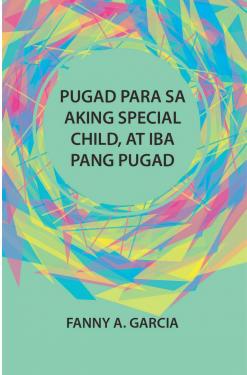
Written by Palanca Award-winning writer Fanny A. Garia, Pugad para sa Aking Special Child, at Iba pang Pugad is as deeply personal as it is political. The multi-genre book talks of Garcia's son, who is on the spectrum. It offers us a closer look into autism and the adjacent factors that shape caretakers in public and private spaces.
27| The Spear Cuts Through Water by Simon Jimenez
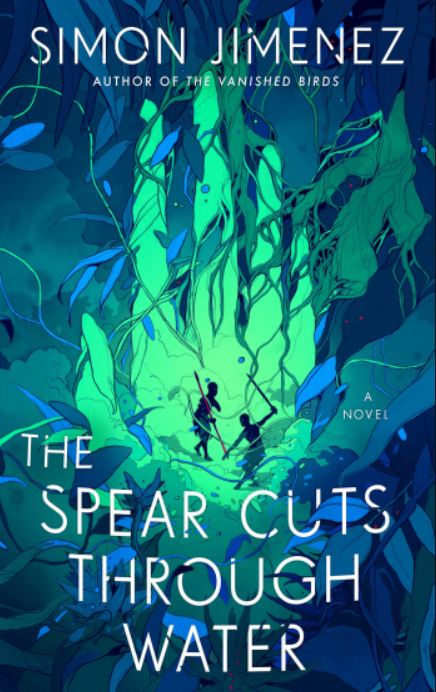
Publisher: Del Rey Books
As one of the best fantasy novels of the year, The Spear Cuts Through Water by Simon Jimenez is an epic folk tale that is clever, imaginative, and thrilling. It follows the story of two warriors as they shepherd an ancient god across broken land, where they look to end tyranny. The book is a dreamscape-y adventure that tackles legacy, identity, and more and is one hell of a saga.
28| Saglit: Alaala't Muni by Rofel Brion

Rofel G. Brion's Saglit: Alaala’t Muni functions as an extraordinary gaze at the mundane. Brion meditates on the most normal of things, from birthdays and meetings with friends to train rides from work. It's a refreshing collection of small stories that captures the beauty and terror of everyday life.
29| The Demo Versions by Aldus Santos
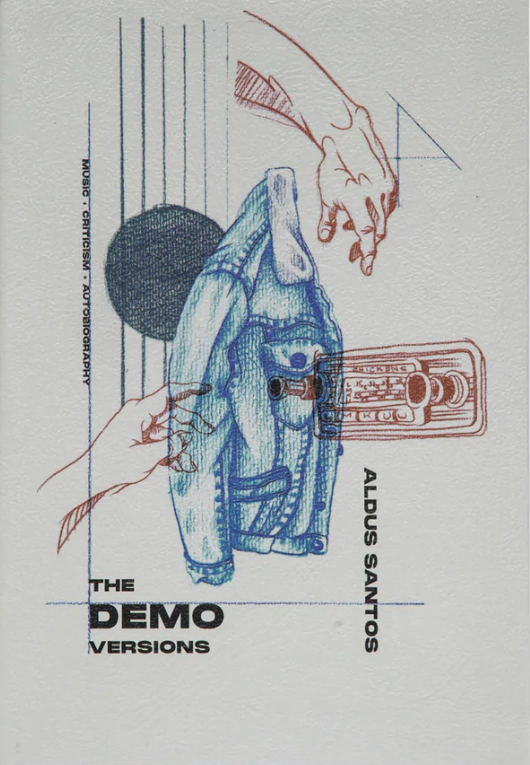
Publisher: EVERYTHING'S FINE
It's been a productive year for writer-musician Aldus Santos. After publishing his poetry collection Decroux Men , he gives us The Demo Versions , which is another must-read from the music journalist and critic. The book offers us a memoir and music critique that is both experimental and lyrical in its prose. It also provides us an innovative take on musical interpretation, in form, substance, and creation.
30| Chloe and the Kaishao Boys by Mae Coyiuto
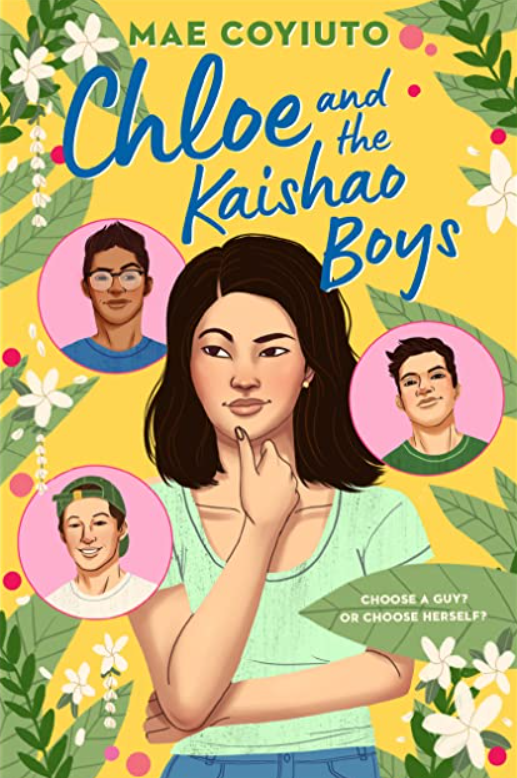
Publisher: Putnam
Mae Coyiuto's Chloe and the Kaishao Boys is a delightfully endearing read. Moving, funny, and immersive, the book functions as a Filipino young adult rom-com of sorts. It follows the life of Chinese-Filipino Chloe, who finds herself one step closer to her dream of becoming an animator after getting off the University of Southern California waitlist. In the Philippines, however, she is burdened by family expectations, while in America, she faces relative uncertainty. It's a tale of love, friendship, becoming, and dream-building.
31| Kakatok-Katok Sa Bahay Ni Benok by Mon Sy
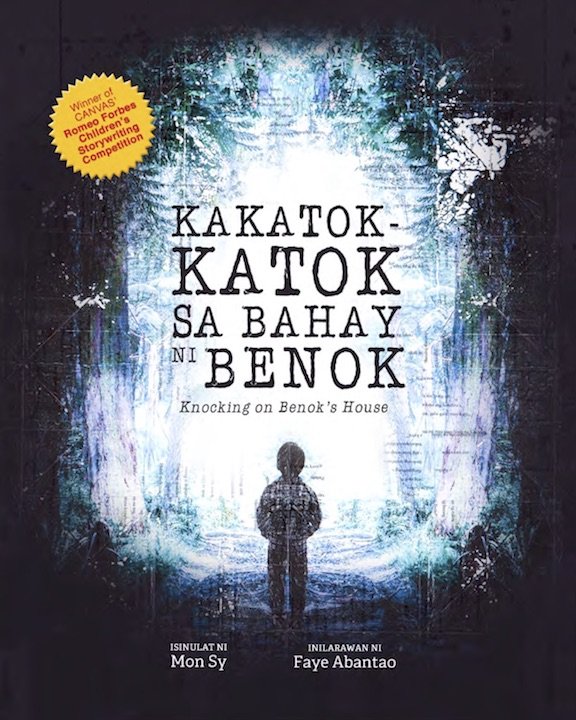
Publisher: CANVAS
Mon Sy and Faye Abantao's Kakatok-Katok Sa Bahay Ni Benok takes us into the grim realities of tokhang , with Benok and Sitio San Nikolas at the heart of it. Their journey shows us the power of the collective action, specifically the participation of children in our fight against tyrannical rule.
32| Of Myths And Men by Catherine Dellosa
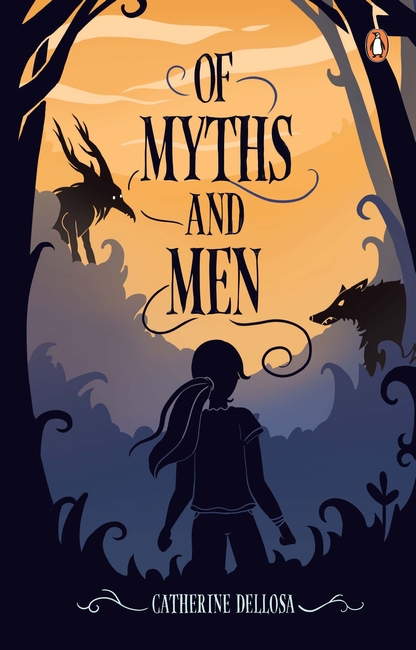
Publisher: Penguin Random House
Catherine Dellosa has outdone herself this time with Of Myths And Men . The young adult novel has 18-year-old Ava grappling with the mythological creatures she’s only ever seen in video games. Since getting her hands on her first console, she's saved the world 152 times, in fact. But dealing with wendigos, mananaggals , foxes, centaurs, and aliens in real life proves to be a much more daunting challenge. Can she do it again?
33| The Sleepless by Victor Manibo
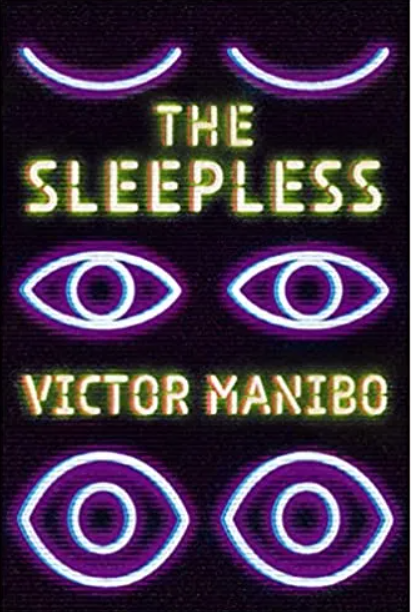
Publisher: Erewhon
Speculative fiction writer Victor Manibo serves us a hot piece of sci-fi literature with The Sleepless . Set in a world taken over by insomnia in New York City, the story is a dystopian thriller that has journalist Jamie Vega searching for answers. He investigates a controversial corporate takeover, on the eve of his boss's death. Our protagonist gets caught up in extremist groups, corporate interests, and, eventually, the cold-blooded truth.
34| Dauntless by Elisa A. Bonnin
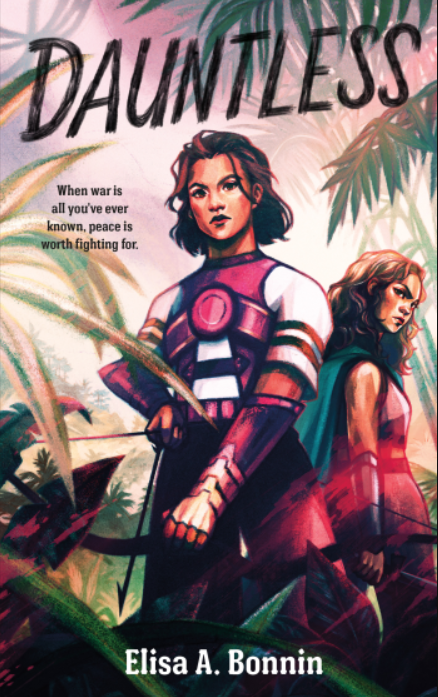
Publisher: Swoon Reads
A rich and inventive epic fantasy, Dauntless by Elisa A. Bonnin is one of the more enjoyable and thrilling reads on this list. It introduces us to three girls who explore an unknown world, dealing with beasts left and right while they're at it. The book is a reimagining of myths, legends, and heroes, addressing notions of romance, friendship, generational trauma, and queer Filipino identities.
35| Deep in Providence by Riss M. Neilson
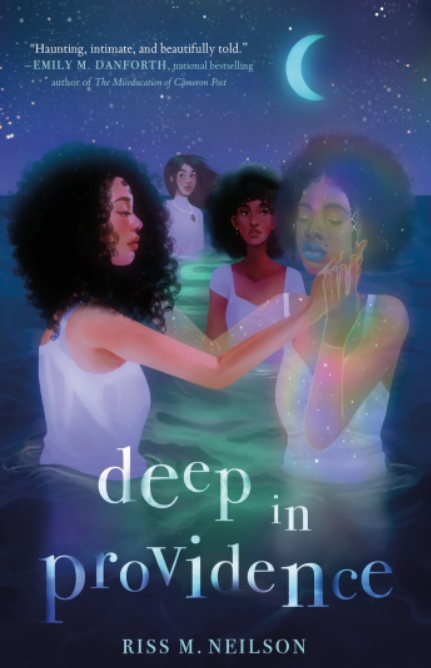
Publisher: Henry Holt
Riss M. Nelson's Deep in Providence is raw, magical, dark, and haunting. We can't use enough superlatives here. In Providence, Rhode Island, bestf riends Miliani, Inez, Natalie, and Jasmine have learned of the magic of their streets. They confront every inch in the community and do it with a little help from Miliani’s Filipino grandfather, who taught her a thing or two about spells. We're treated to a story that tackles love, family, immigration, addiction, sexuality, and religion, among other things.
36| The Mountain That Grew by Alfred A. Yuson
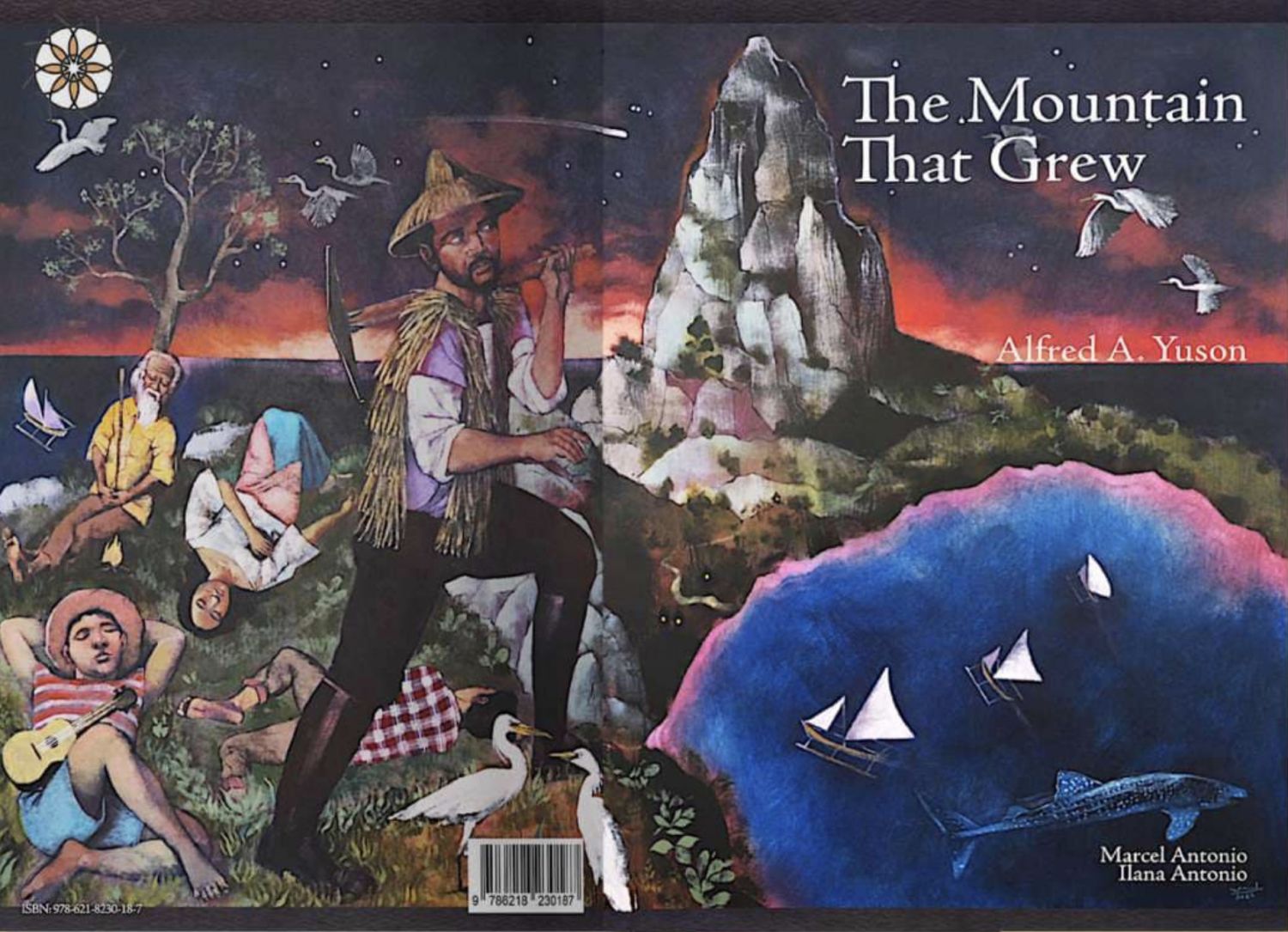
Publisher: San Anselmo Publications, Inc.
Alfred A. Yuson is at it again with The Mountain That Grew . It may be a children's story, but it carries itself with a cadence and maturity for Filipinos of all ages. The story is about the island of Manao, a deserted place where its inhabits leave for better lives elsewhere. Speaking of diaspora, magic, and heritage, it tells of a man named Ka Liser, who notices how the mountain is growing and embarks on a journey to find out why. It's a story that oozes with symbolism, mystery, and whimsy.
(Note: some of these were published before 2022 and had been republished this year, so we may have cheated a little bit).
We use cookies to ensure you get the best experience on Esquiremag.ph. By continued use, you agree to our privacy policy and accept our use of such cookies. Find out more here .

IMAGES
VIDEO
COMMENTS
Famous Essays and Speeches by Filipinos. Carmen Guerrero- Nakpil: My Husband's Roommate. Where is the Patis? Carlos P. Romulo: I Am A Filipino.
Meredith Talusan is a Filipino-American author who moved to the United States at the age of 15. He has many excellent essays, stories, and books to her name. She attended Cornell University, where she received an MFA degree, and she worked as a journalist for many well-known publications. In addition to writing, Talusan trained as a dancer.
Nick Joaquin. Winning the National Artist award for Literature, Nick Joaquín is probably the most esteemed writer the Philippines has produced. Joaquin came from a well-educated family and was published at the early age of 17. After winning a scholarship in a nationwide essay contest, he left the Philippines to study in Hong Kong.
Barbara Jane Reyes is the author of Diwata (BOA Editions, Ltd., 2010), winner of the Global Filipino Literary Award for Poetry and a finalist for the California Book Award.Born in Manila, raised in the San Francisco Bay Area, she is the author of two previous collections of poetry, Gravities of Center (Arkipelago Books, 2003) and Poeta en San Francisco (Tinfish Press, 2005), which received the ...
autobiography,"3 this long essay, which lacks the personal or private angle, is more rightly an account of the growth of a self-educated writer whose exposure to fellow writers, especially of the third world, has helped confirm his suspicion that the Filipino has a genius for achieving meaning through creative writing
Among the vast array of Filipino names in the world of literature, many have stood apart as exceptional contributors. These great writers practice a diverse array of writing styles and genres. From poetry and novels to essays and biographies, these best Filipino authors have demonstrated their expertise, earning a revered place in the literary ...
Play. Entre Medio del Fin (In the Middle of the End) Ryanne Murcia. Read the literary works of contemporary Filipino writers in English, Filipino, and Cebuano languages.
Other works of Conchitina Cruz includes elsewhere held and lingered (2008), There is no emergency (2015), and book of essays The Filipino Author as a Producer (2017) and Partial Views: On the Essay as a Genre in Philippine Literary Production (2021). Aside from writing, she currently also co-runs a small press, the Youth & Beauty Brigade.
Influential Classic Filipino Authors have left an indelible mark on the literary landscape, shaping the cultural and historical narratives with their compelling works. Notable literary figures like Joi Barrios, with a Ph.D. in Filipino Literature, have won fourteen national literary awards, leaving a significant impact on the literary scene. ...
List of Contemporary Filipino Writers. These are the contemporary Filipino writers who contributed their literary pieces (poetry, fiction, nonfiction, or play) to Katitikan: Literary Journal of the Philippine South: Al Osiris Ingking. Alanna Michelle Escudero. Alfonso Manalastas.
5. Felisa Batacan. Felisa Batacan, also known as F.H. Batacan overseas, is a Filipino journalist and crime fiction writer based in Singapore, whose first novel, Smaller and Smaller Cricles (2002), was considered to be the Philippines' first crime novel.
Mookie Katigbak Lacuesta. Palanca Award and Philippines Free Press Award-winning poet Katigbak-Lacuesta's poetry collections talk about a wide range of topics: love, power dynamics between men and women, the Filipino's colonial past, diaspora—all presented in lyrical form. But if you prefer to read prose, her latest release, Assembling ...
He is one of the most widely read Filipino authors. In 1980, he won the Ramon Magsaysay Award for Literature. Nick Joaquin. He is a National Artist. He published a work at the age of 17 and his skill has made him won a scholarship from an essay contest where he topped. Among his most famous works is The Woman With Two Navels. Merlinda Bobis
He was co-editor of the lyric essay issue of High Chair. (with Oliver Ortega), published in 2015. KRITIKA KUL TURA SPECIAL LITERAR Y. SECTION ON THE C ONTEMPORARY. PHILIPPINE ESSAY. Introduction ...
Must-Read Books by Filipino and Filipino American Authors. by PRH Editors. From imaginative cozy mysteries to politically-motivated fiction to moving short stories to joyful romances, these books by Filipino authors and authors of Filipino descent span the vast experience of the people of the Philippines.
Her essays and novels give a heart-breaking commentary on human rights, political unrest as well environmental concerns that calls people to action. ... These new Filipino authors not only ...
by Mina V. Esguerra. A romantic novella about chance meetings and starting over, this book explores the giddiness of new love and the bittersweet reality of facing the unknown. As a #romanceclass book, it's set in the Philippines with Filipino characters, bringing the authenticity of modern love and life in this island country to the reader ...
I witnessed these lines curve and swirl and dance with the rhythm of time, until they turned themselves into beautiful baybayin: the hushed characters of our history, striving for survival, like every one of her silent stories. Check out the creative nonfiction and essays published in Katitikan: Literary Journal of the Philippine South.
Her essay "The Filipino Author as Producer" appears in Critical Creative Writing: Essential Readings on the Writer's Craft, now available from Bloomsbury. My profile in the professionalized world of poetry is not unusual: schooled in academic institutions of creative writing, both in the Philippines and the US, published by university ...
Pinoy English: Language, Imagination, and Philippine Literature. R. Kwan Laurel. English has been in the Philippines for a hundred years, yet some of the. best Filipino writers in English express ambivalence as to what should be done with it. This ambivalence is a product largely of a particular. type of nationalist rhetoric that challenges the ...
This list of Filipino writers is organized by the first letter in the surname. Francisco Arcellana. Francisco Balagtas. Lualhati Bautista. Louis Bulaong. Carlos Bulosan. Cecilia Manguerra Brainard. Ian Casocot. Linda Ty Casper.
Arsenic and Adobo by Mia P. Manansala. Out this May and available for pre-order, Adobo and Arsenic, the first installment in Tita Rosie's Kitchen Mysteries is layered with romance, comedy, murder, and all the servings of Filipino food you could want in one light, enjoyable read. This cozy mystery (ie. a mystery sub-genre involving an amateur female sleuth) will have your mouth watering as ...
Richard Bolisay's second collection of essays is another profound meditation on Philippine cinema. In Nothing Deep, the film critic talks to various personalities in the industry, from stars and directors on set to beloved screen writers and filmmakers. He talks of vignettes of Filipino film in the 2010s, as well.
22 books34 followers. Doreen Gamboa Fernandez (28 October 1934 - 24 June 2002) was a Filipino professor, historian, writer and critic best known for her writings on Filipino food, food culture, and the theater arts. Apart from many books and academic articles, she wrote a regular column on food and dining for the Philippine Daily Inquirer.
This document lists 30 Filipino authors and their contributions to Philippine literature. It provides brief biographies of authors such as Jessica Hagedorn, F. Sionil Jose, Nick Joaquin, Merlinda Bobis, Jose Dalisay Jr., and Luis Francia, highlighting some of their major literary works. The document also mentions authors such as Jose Rizal, E. San Juan Jr., Doreen G. Fernandez, Wilfrido D ...